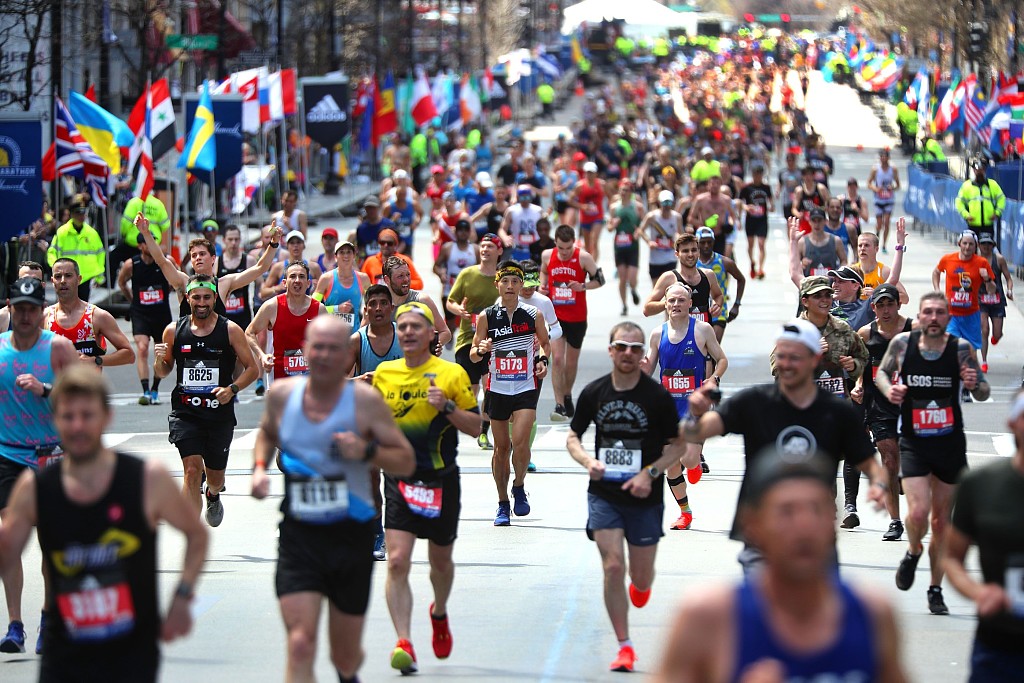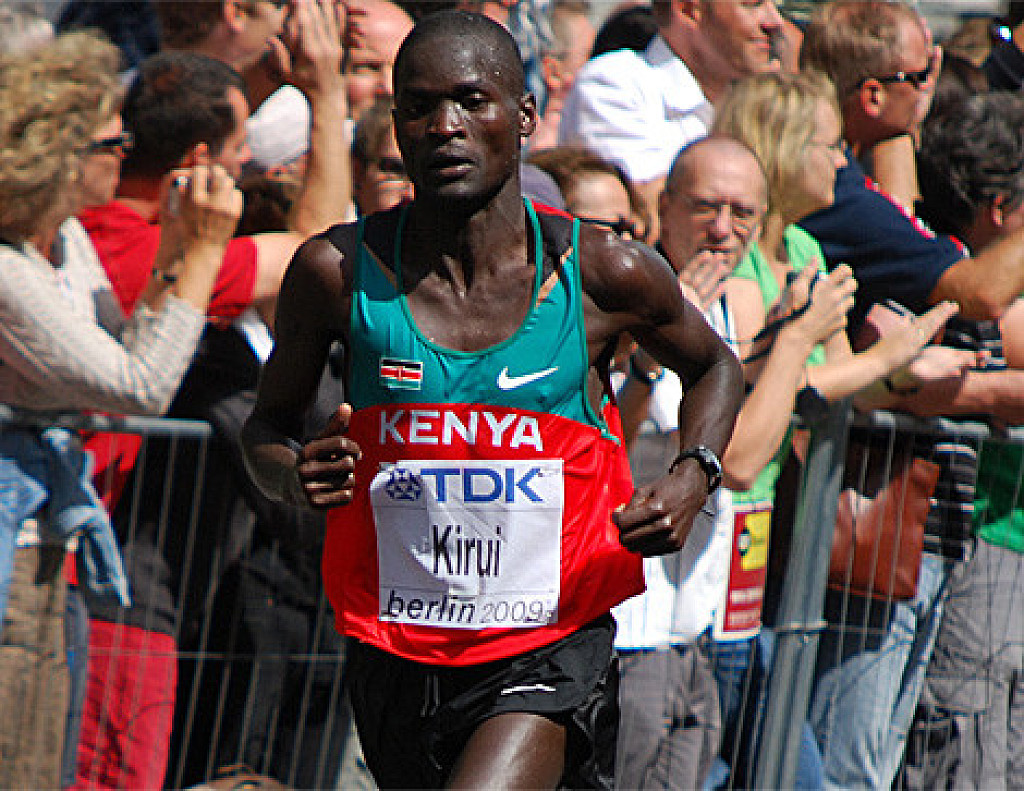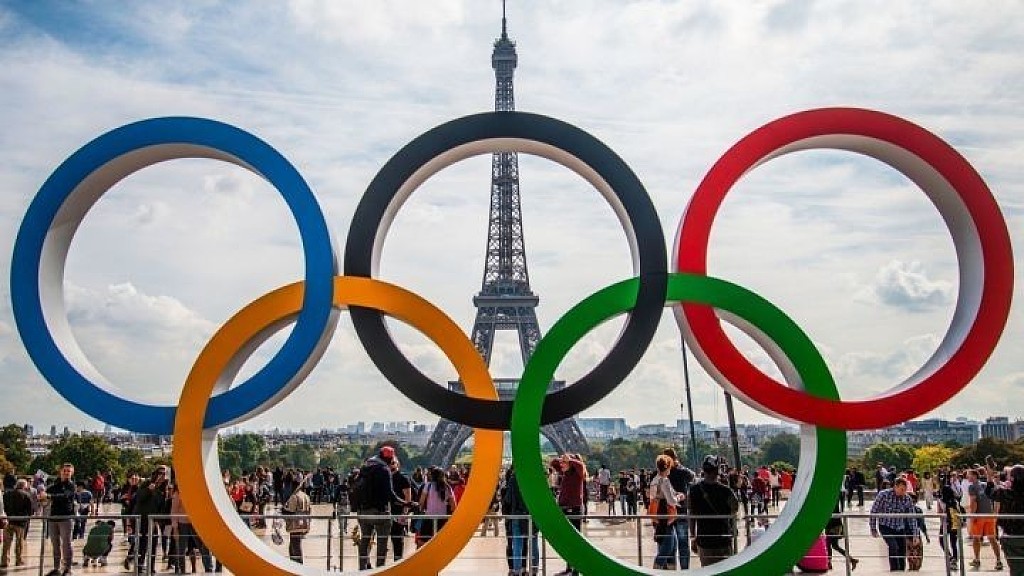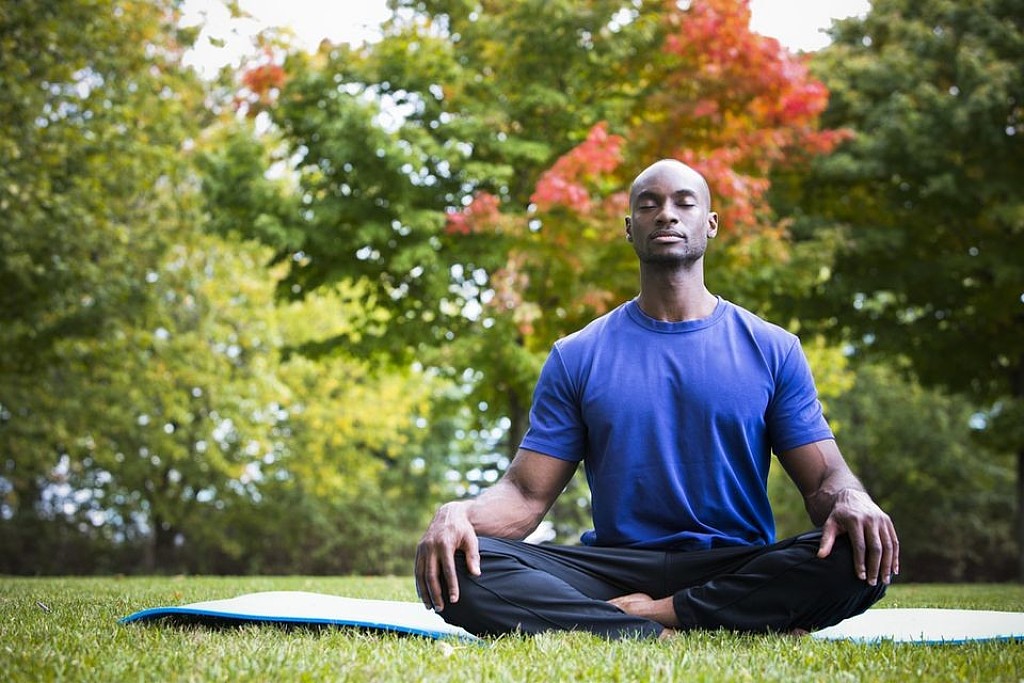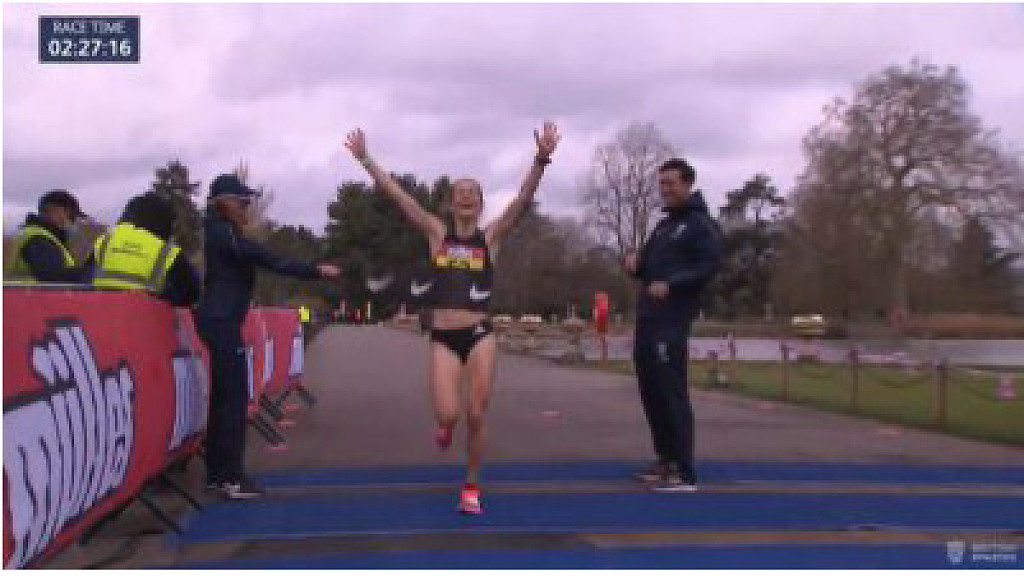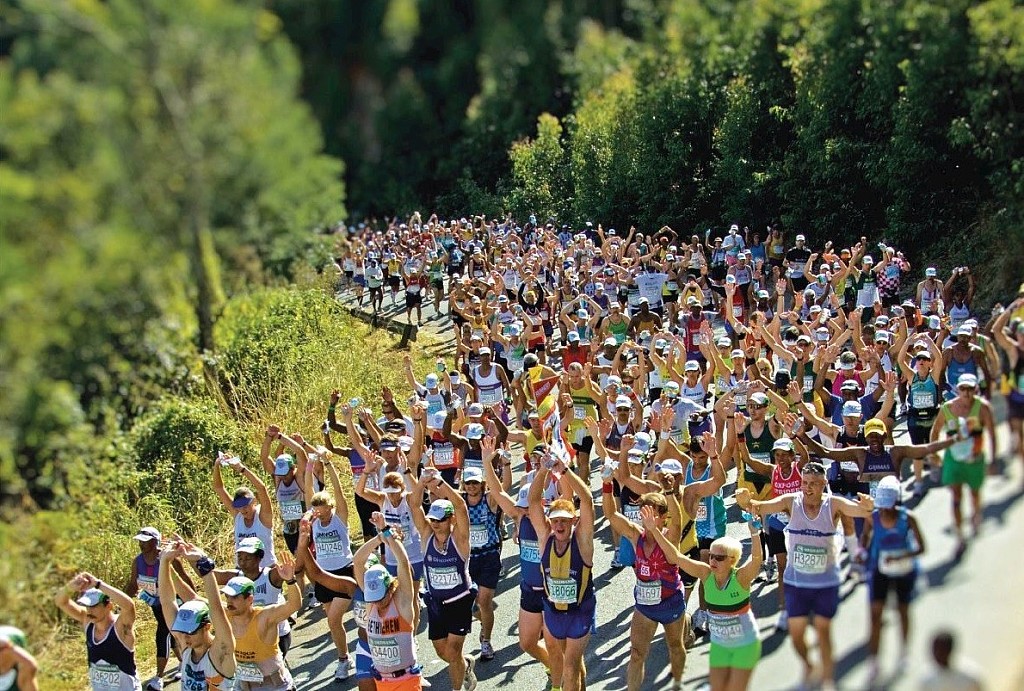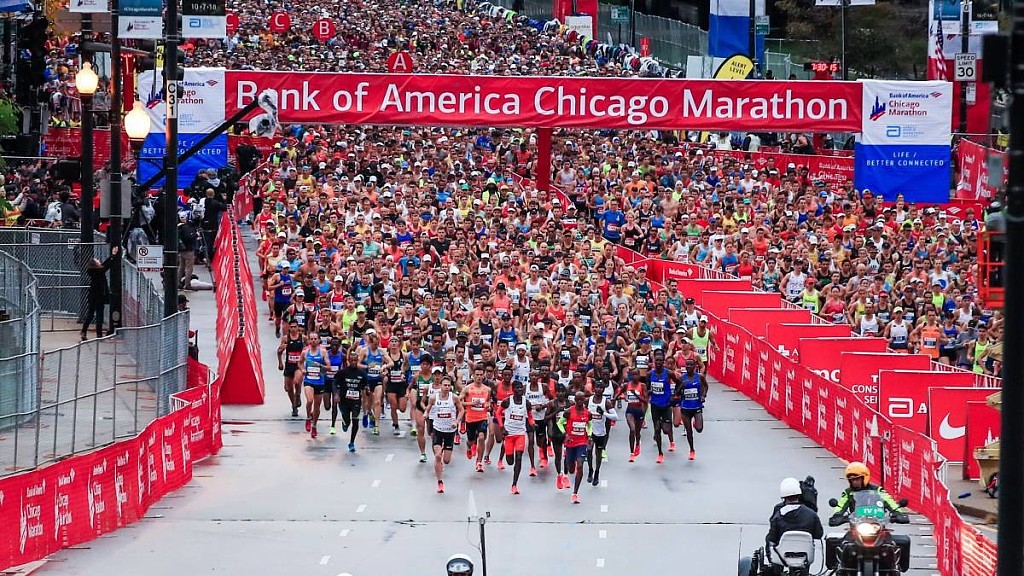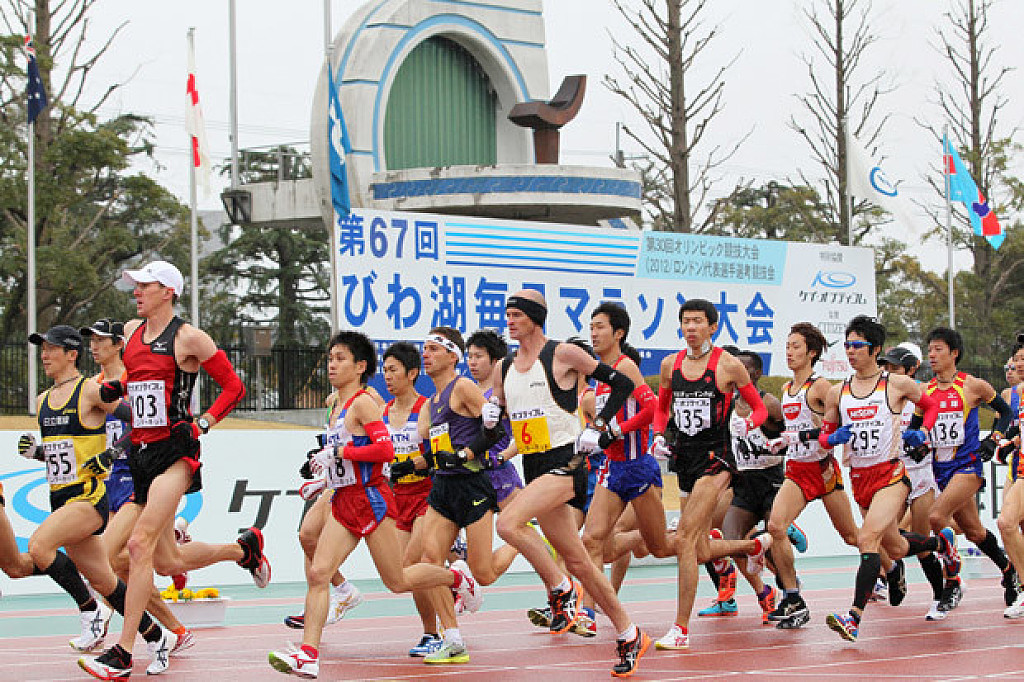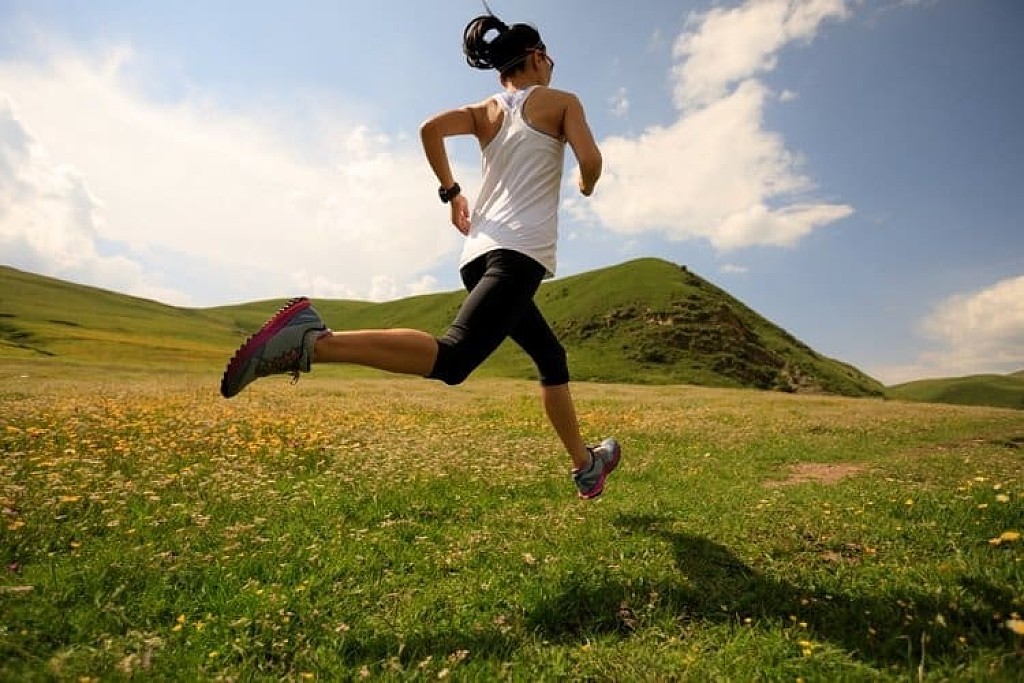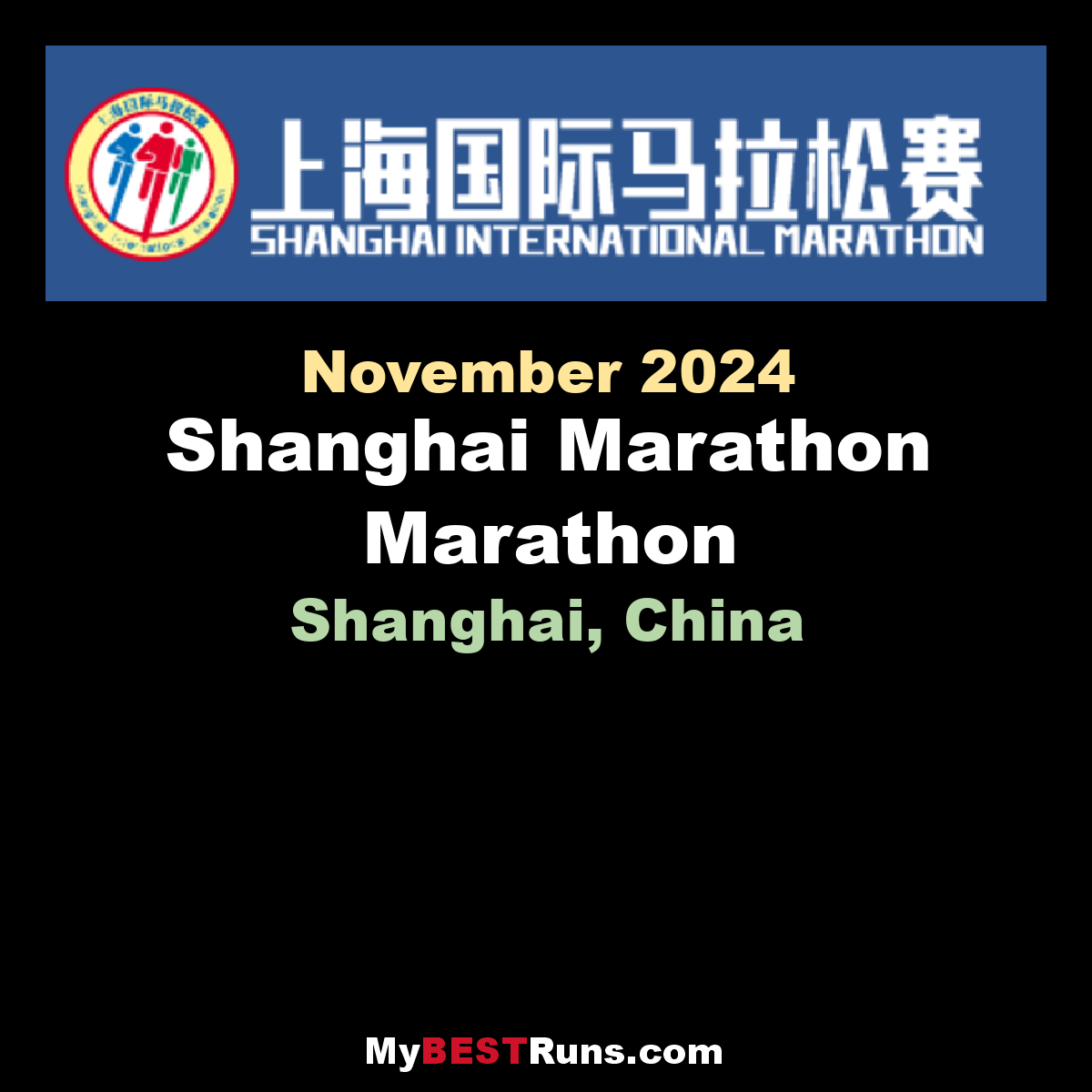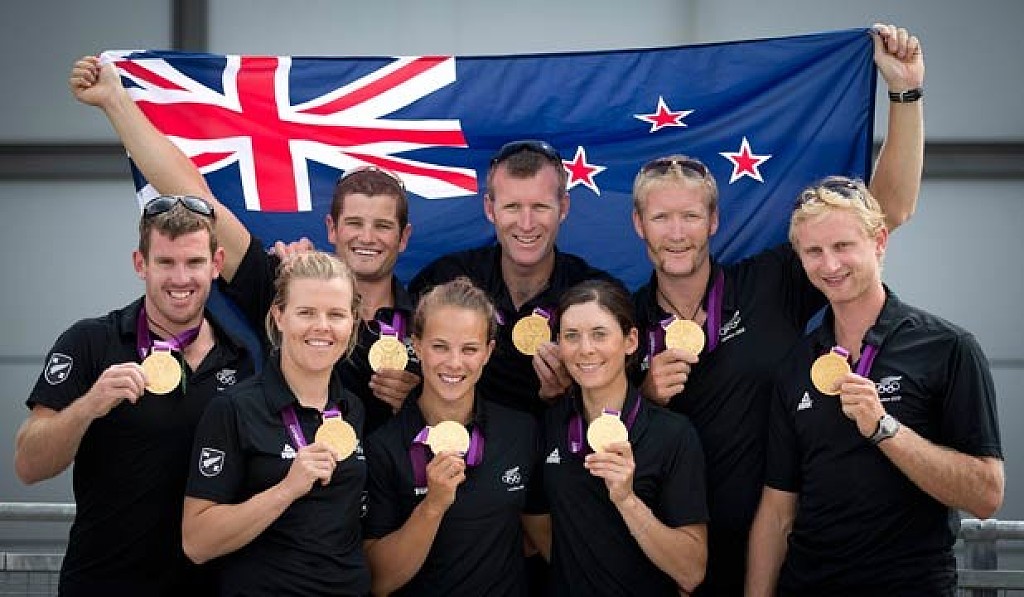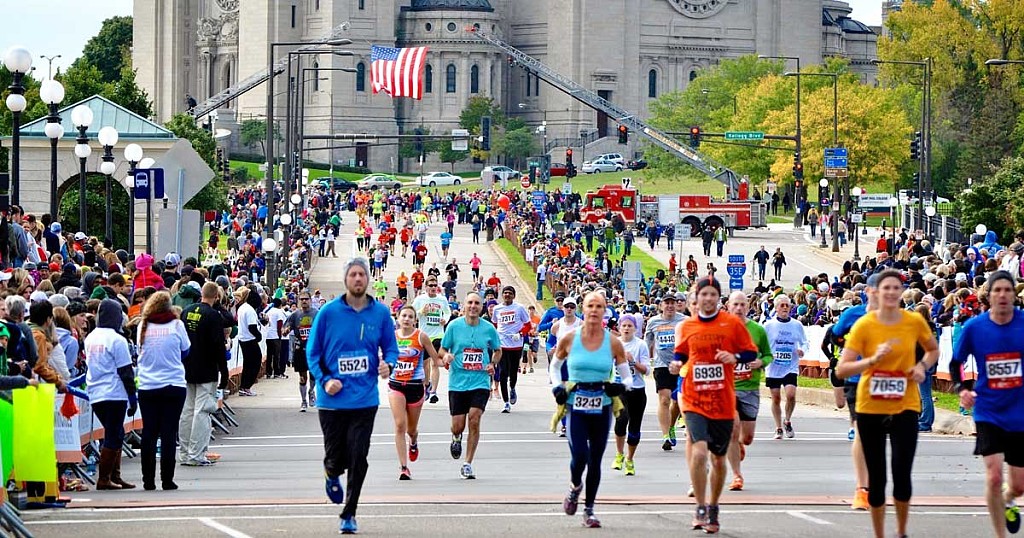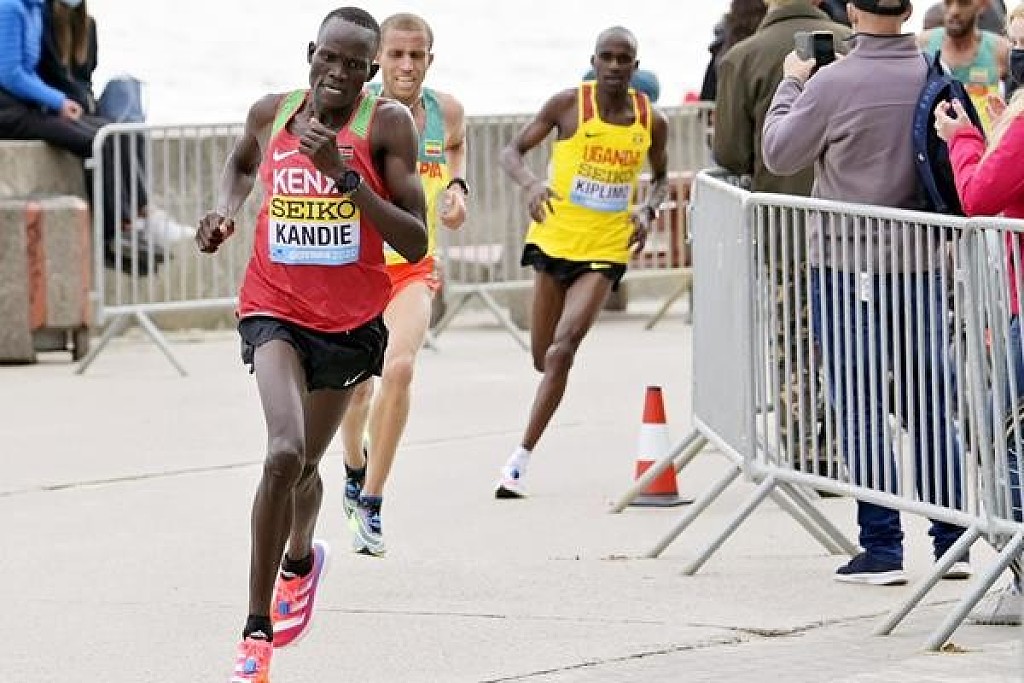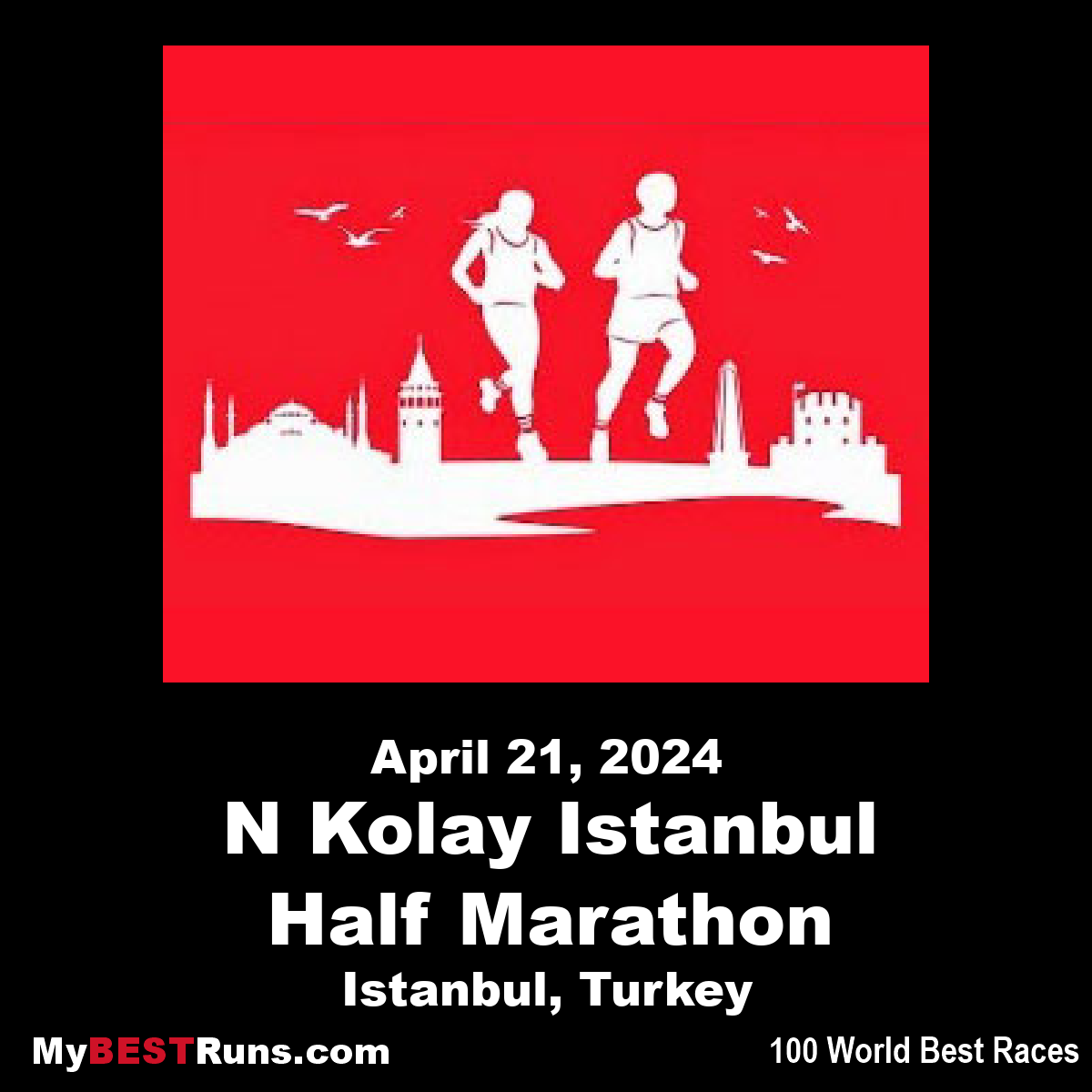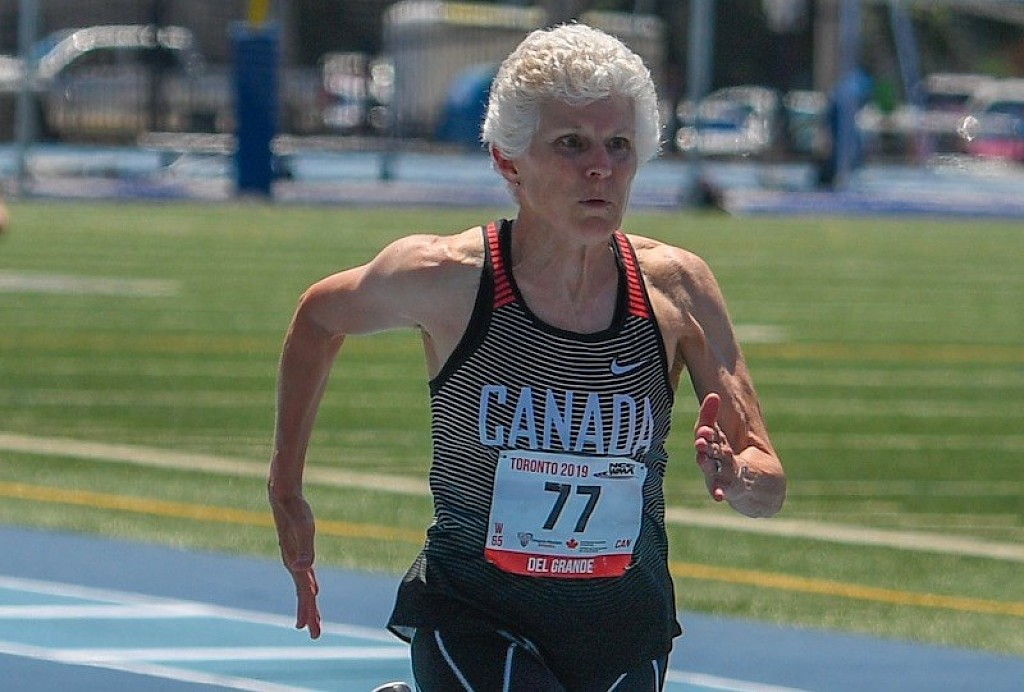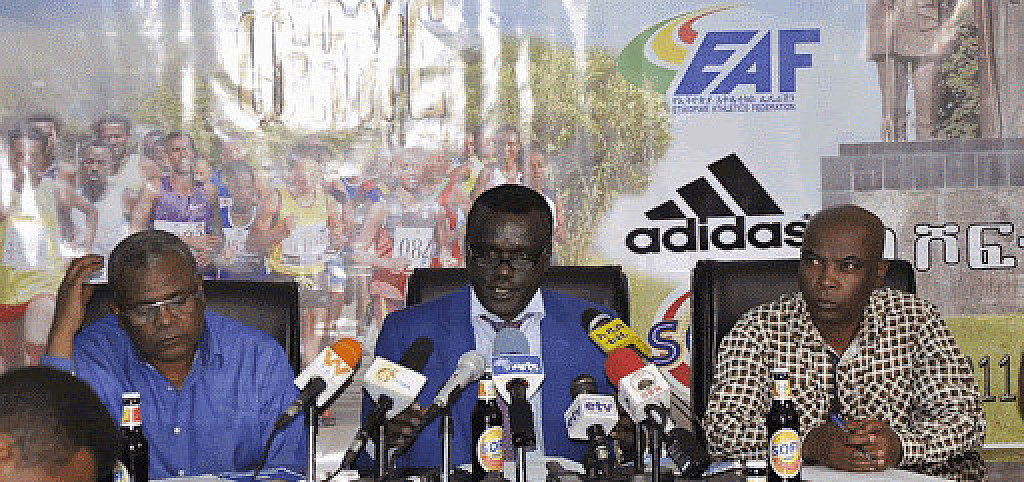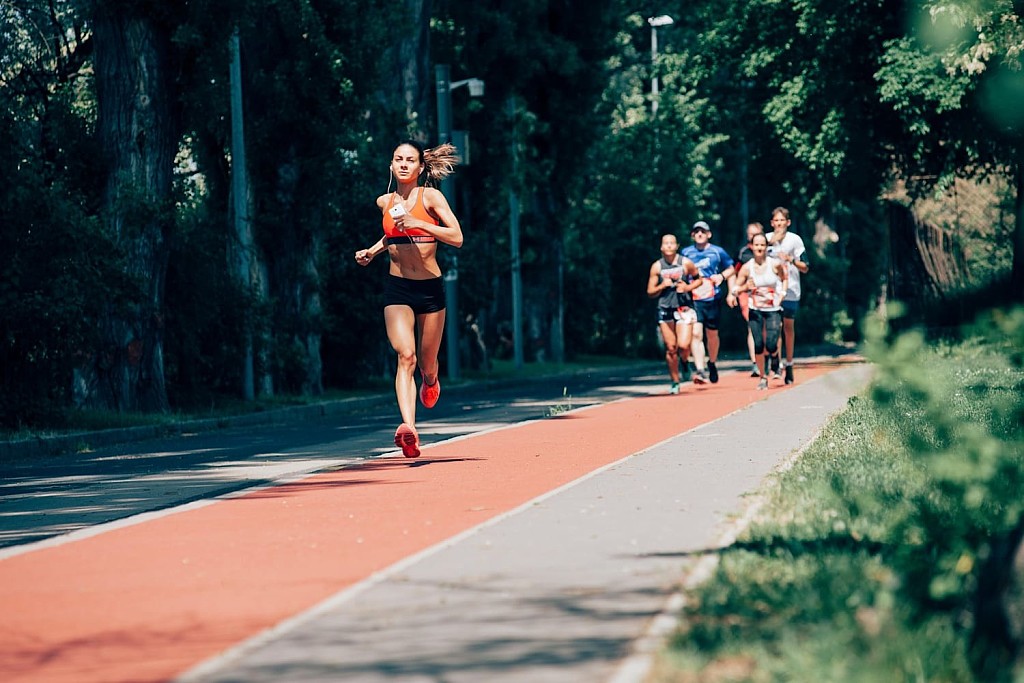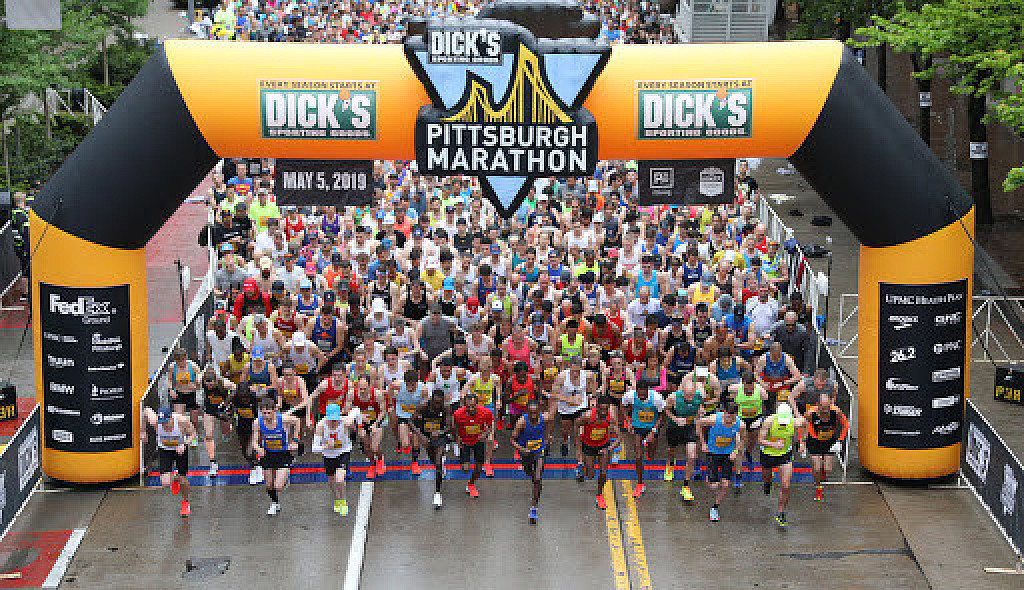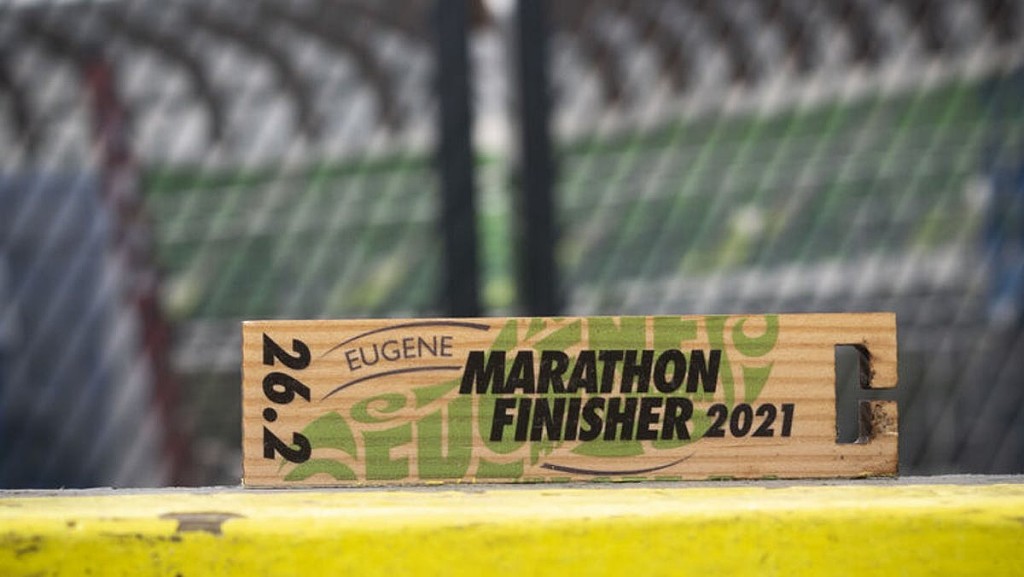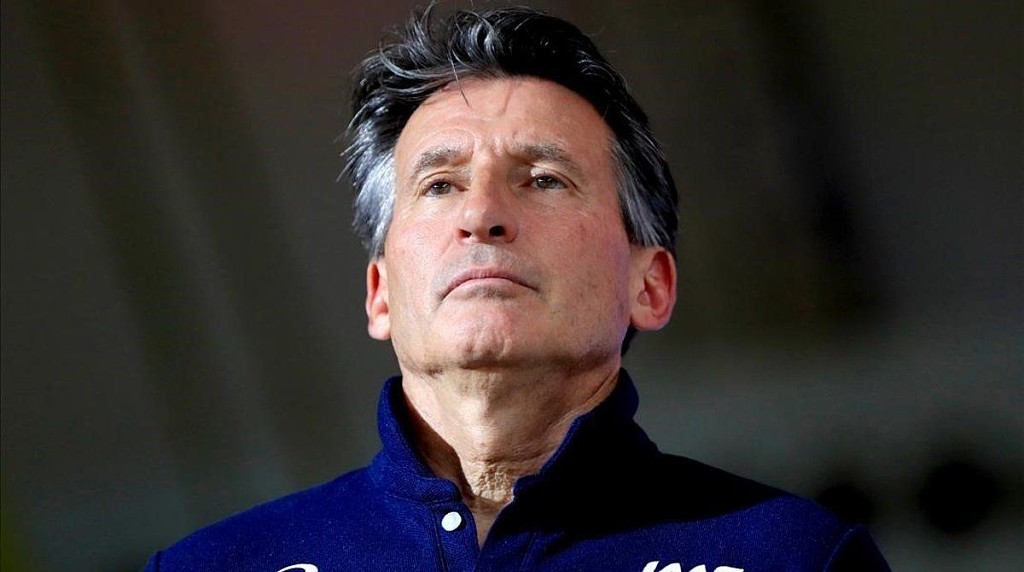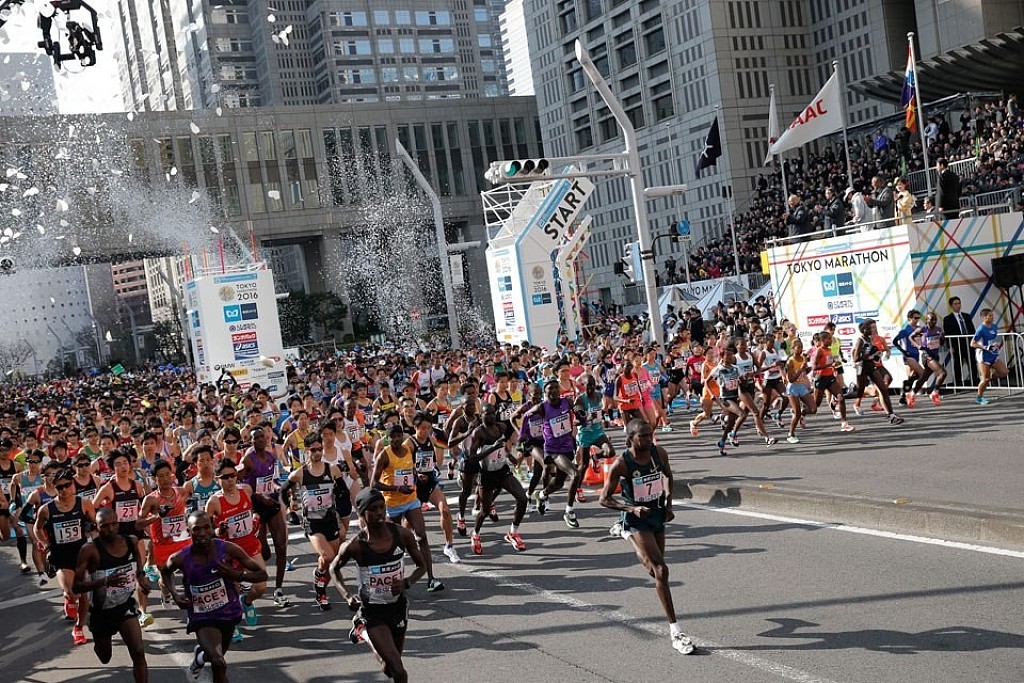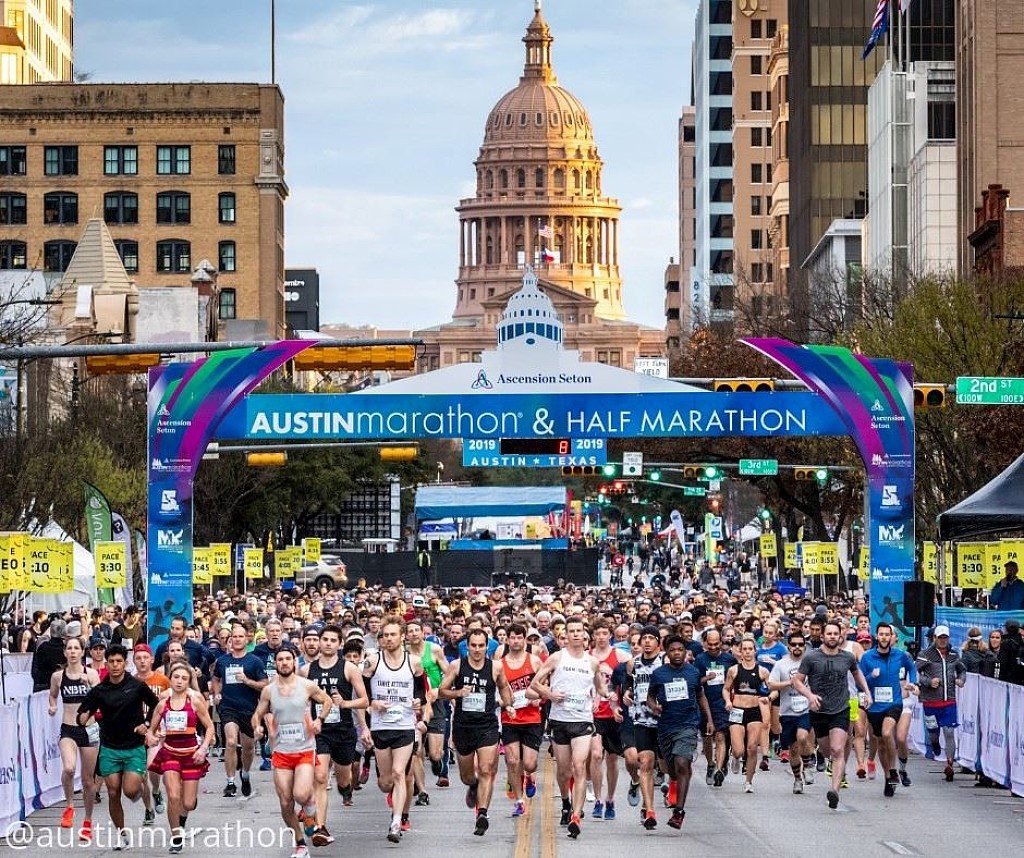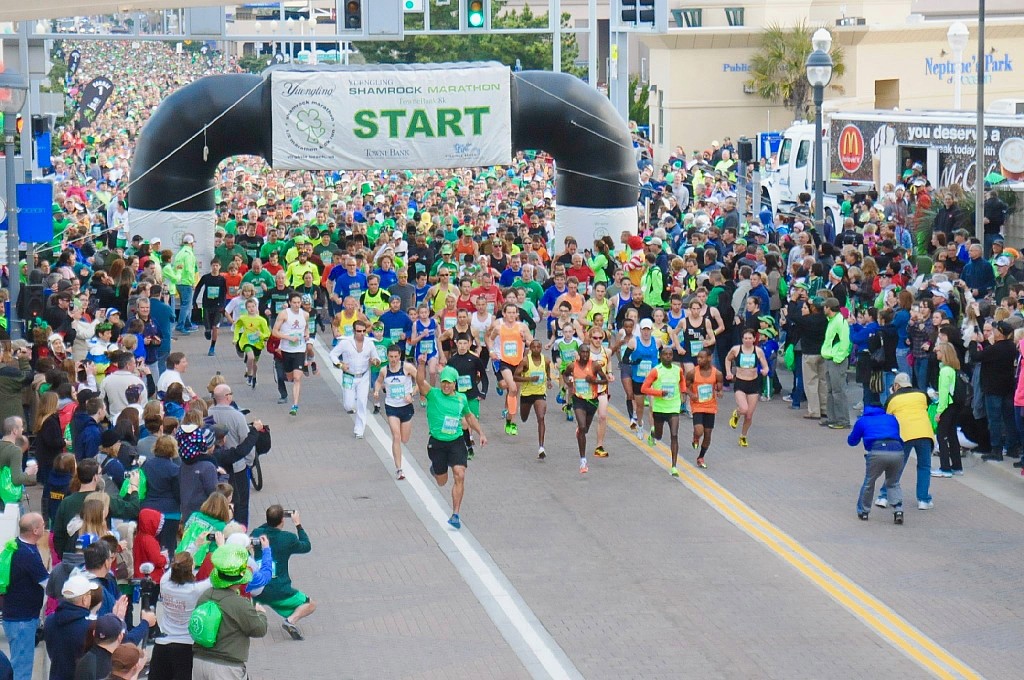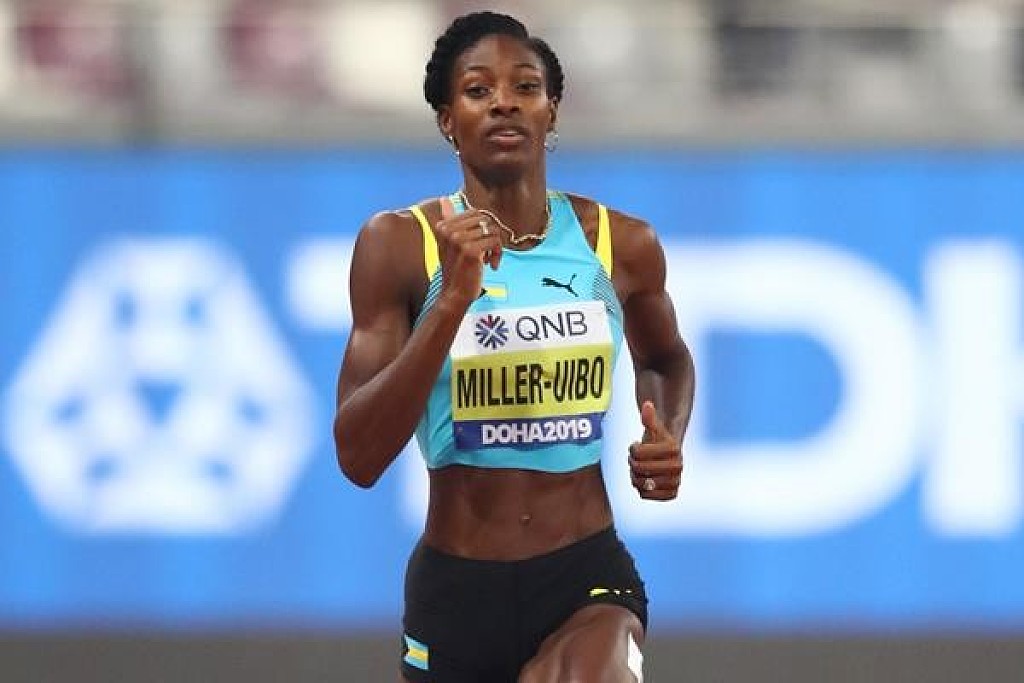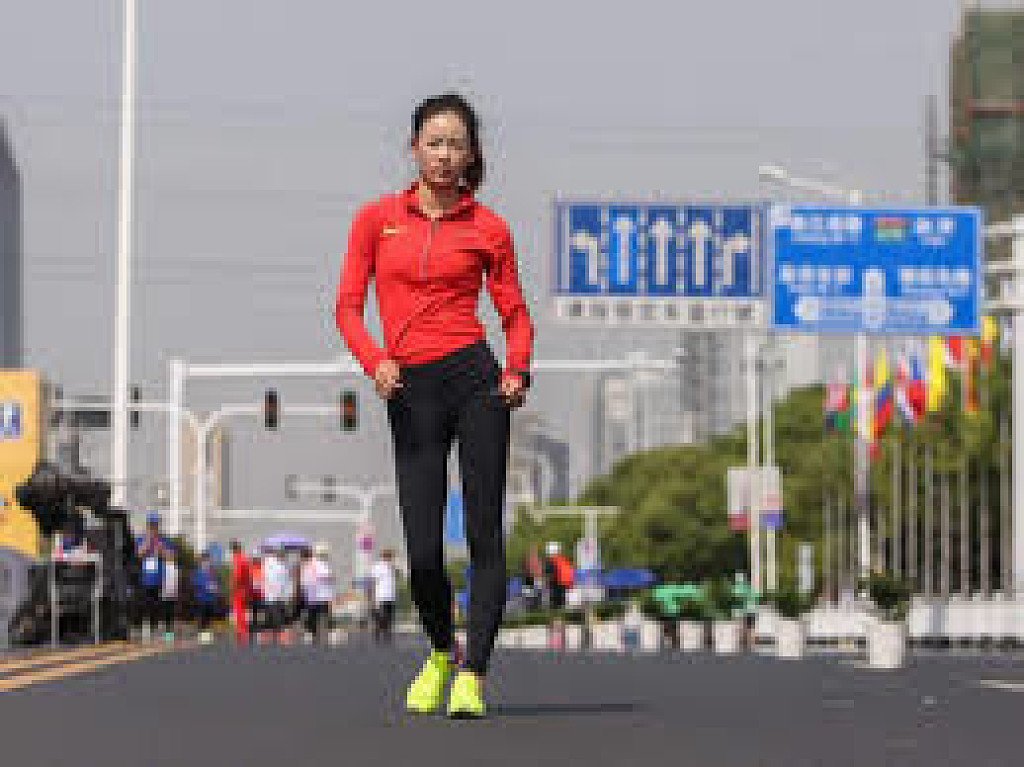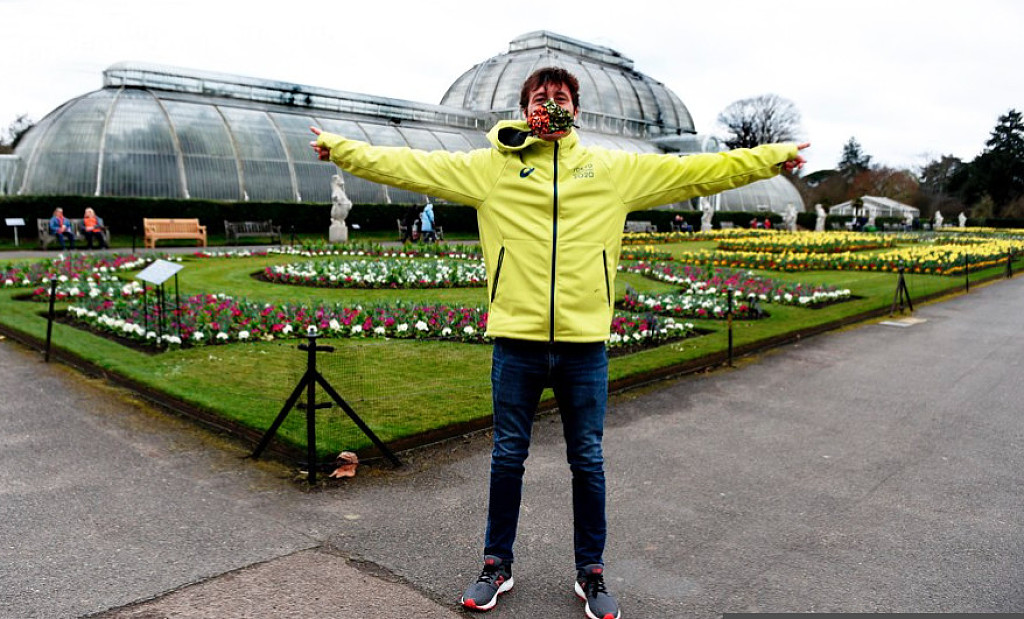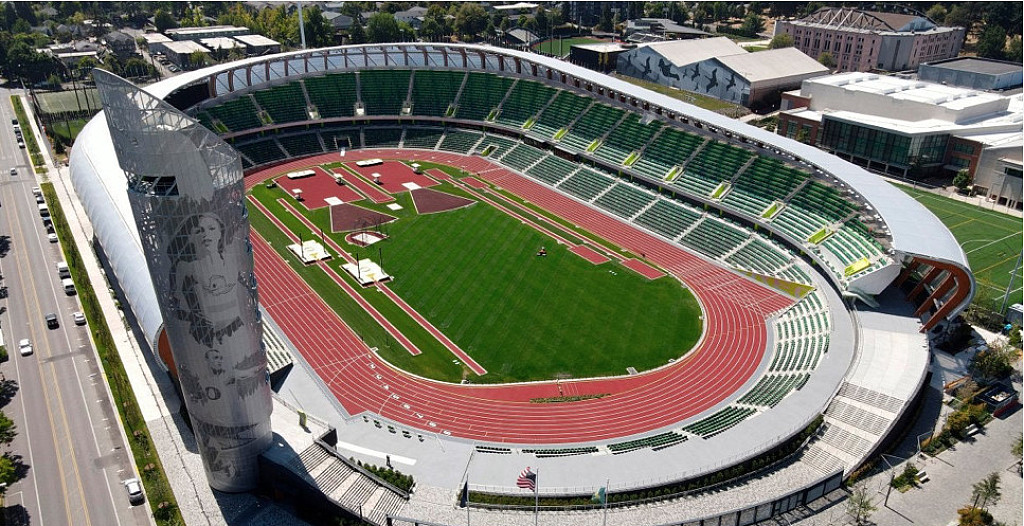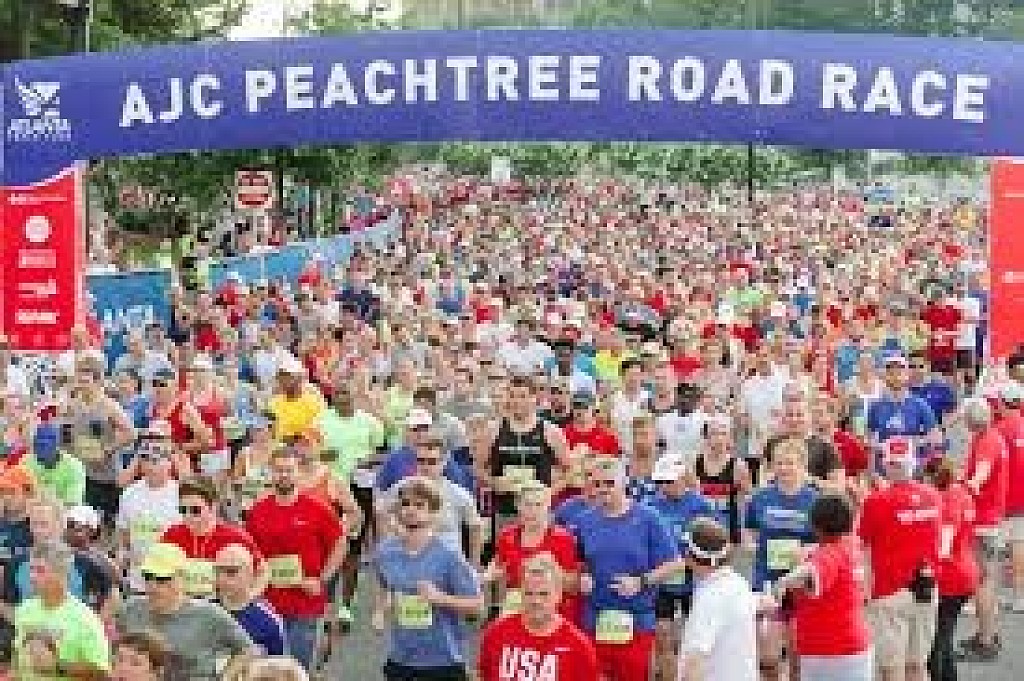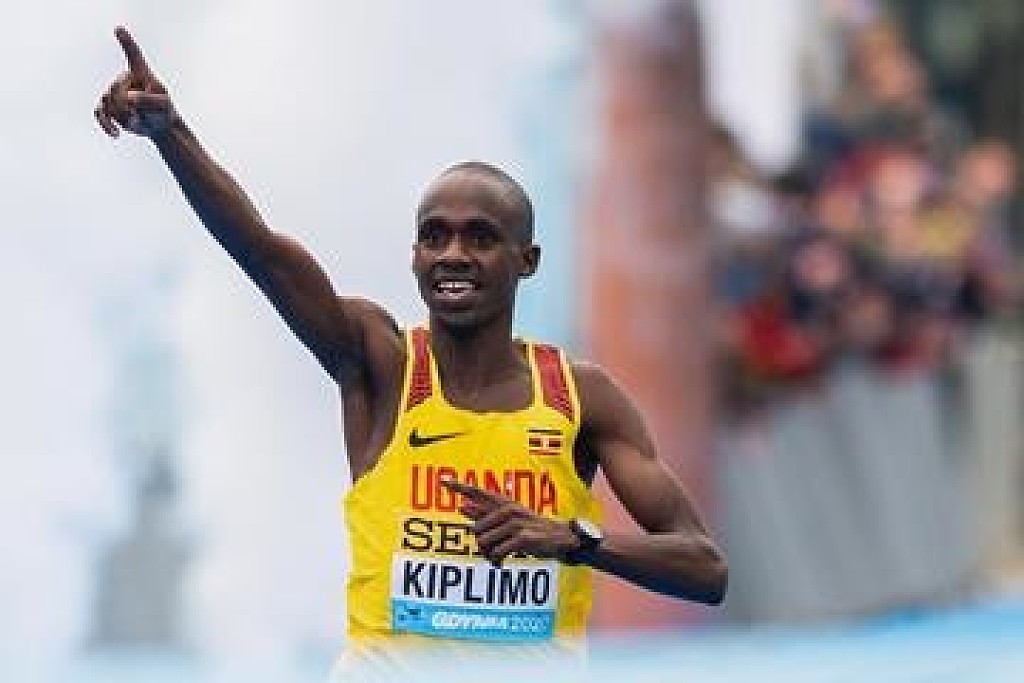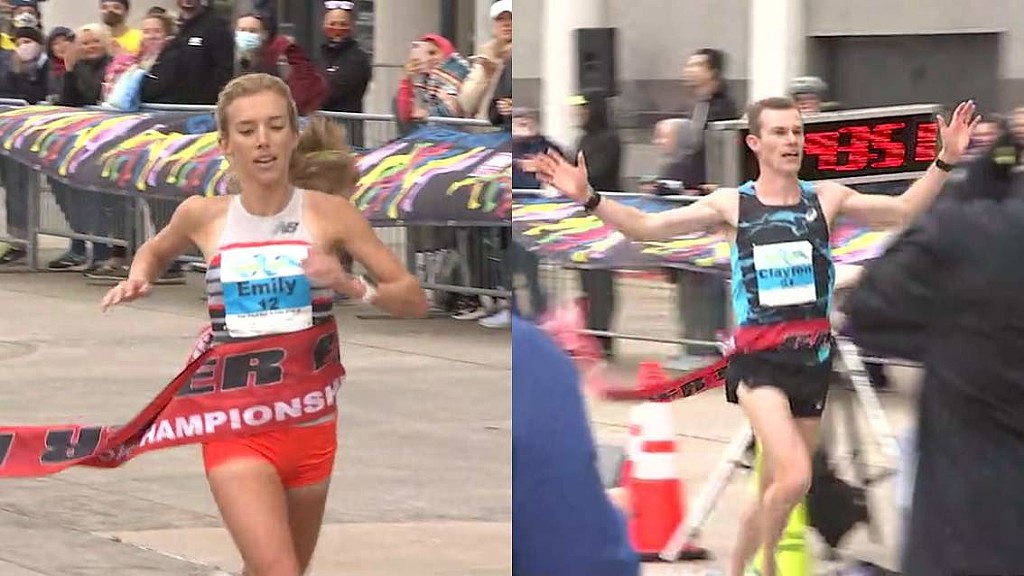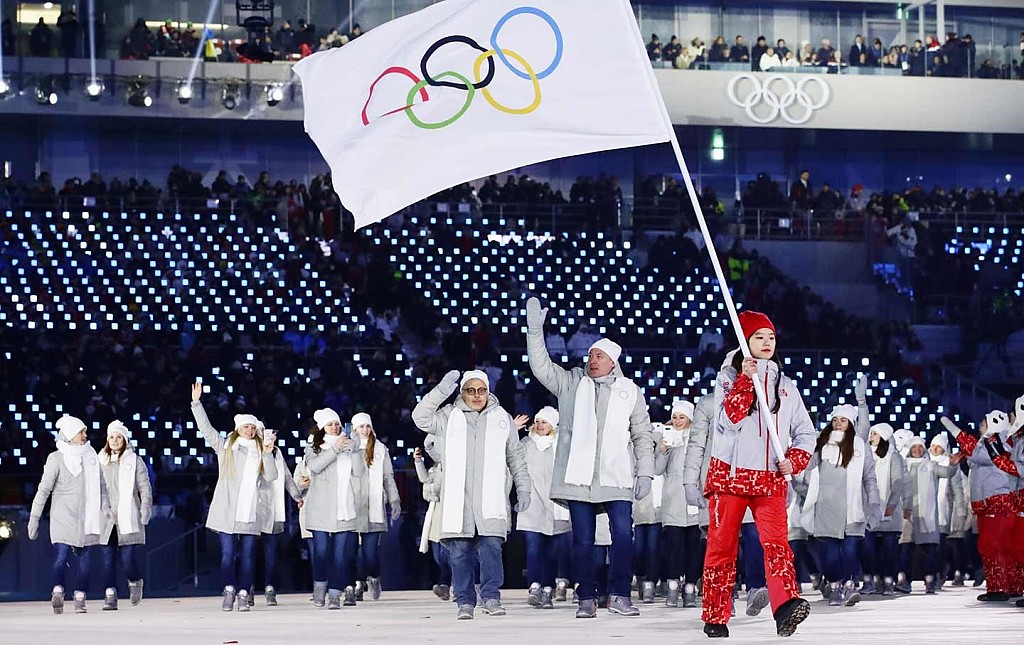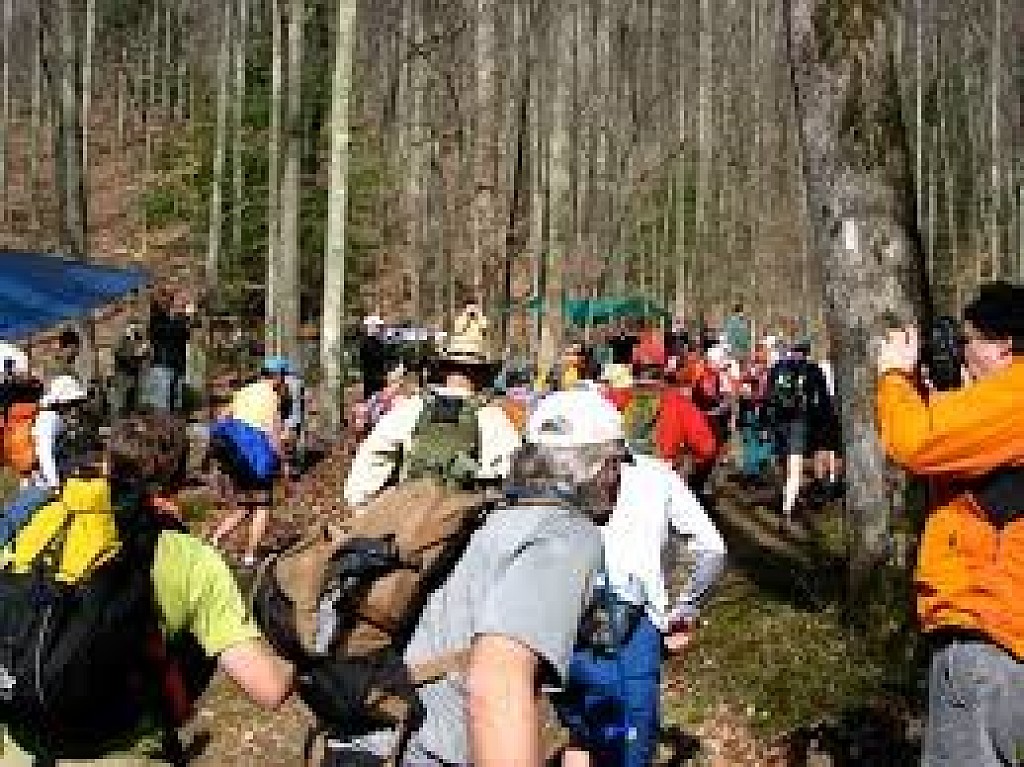Running News Daily
Running News Daily is edited by Bob Anderson in Mountain View, California USA and team in Thika Kenya, La Piedad Mexico, Bend Oregon, Chandler Arizona and Monforte da Beira Portugal. Send your news items to bob@mybestruns.com Advertising opportunities available. Over one million readers and growing. Train the Kenyan Way at KATA Running Retreat Kenya. (Kenyan Athletics Training Academy) in Thika Kenya. Opening in june 2024 KATA Running retreat Portugal. Learn more about Bob Anderson, MBR publisher and KATA director/owner, take a look at A Long Run the movie covering Bob's 50 race challenge.
Index to Daily Posts · Sign Up For Updates · Run The World Feed
2021 Seoul Marathon will be held virtually in May
The 2021 Seoul Marathon, the largest marathon competition in Korea, will be held virtually this year. The 2021 Seoul Marathon, which is co-hosted by the Seoul Metropolitan Government, The Dong-A Ilbo, and Sports Dong-A, and sponsored by the Seoul Sports Council, will be held from May 1 to May 9.
The race will be kept non-contact due to the COVID-19 pandemic. After the 2020 Seoul Marathon was delayed to the second half of the year, it was held both online and offline.
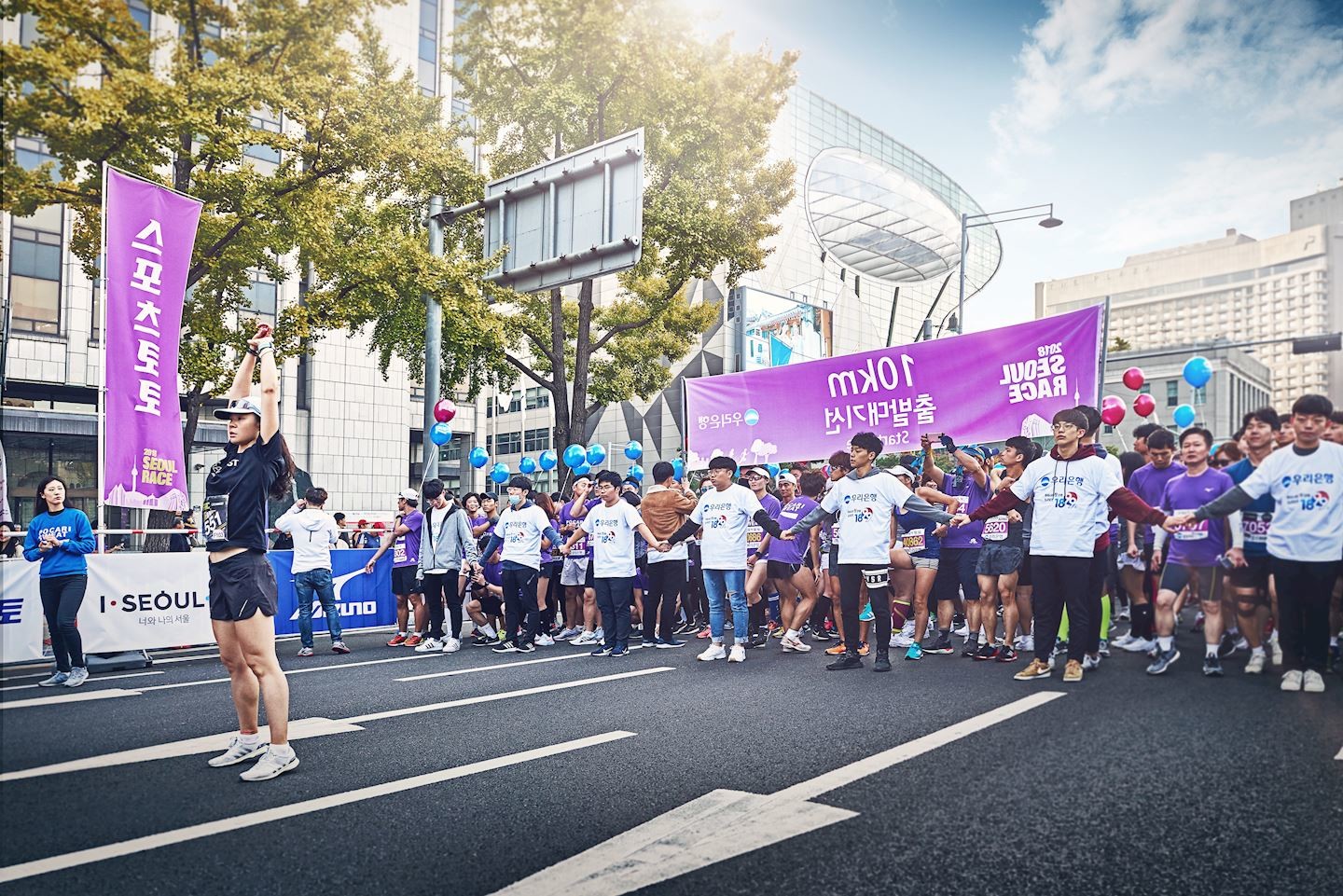
Participants of Seoul Marathon this year will hold a race of their own without restrictions of time and place, using running applications of their choice. Those who have applied for participation will be provided with race information and recommended courses from May 1.
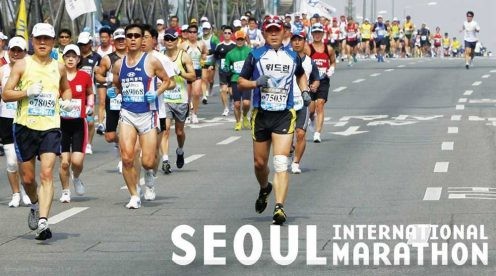
Moreover, 30 ambassadors of Seoul Marathon, who have been selected for the first time, will promote exercise in daily life in time of social distancing by introducing their own stories of running.Those who wish to participate can sign up at www.seoul-marathon.com from 10a.m. on April 12. Up to 15,000 runners will be accepted on a first-come, first-served basis. Once accepted, a package will be sent to participants by courier to help them enjoy their race.
The package will include a lace poncho for warm-up and cool-down before and after the race, a memento t-shirt and a t-shirt celebrating the completion of the marathon by New Balance, and a finisher medal. The participation fee is 30,000 won. To sign up, visit the official Seoul Marathon website at www.seoul-marathon.com.
(03/30/2021) ⚡AMPSeoul International Marathon
The only marathon hosted in the heart of the Korean capital. Seoul marathon is the oldest marathon race hosted in Asia andis one of the fastestmarathon in the world. First held in 1931, Seoul marathon is the oldest marathon eventcontinuously held in Asia, and the second oldest in the world followingthe Boston Marathon. It embodies modern history of Korea, also...
more...Registration for virtual Boston Marathon opens today
Registration opens Tuesday for the 2021 virtual Boston Marathon.
The Boston Athletic Association opens registration at 10 a.m. to the first 70,000 people who register. Rules will require participants to complete the 26.2 miles in one, continuous attempt in order to earn their finishing medal.
“For the first time in our history, most everyone will have the opportunity to earn a Unicorn finisher’s medal for every B.A.A. race in 2021—no matter whether they choose to walk or run," said Tom Grilk, president and CEO of the BAA.
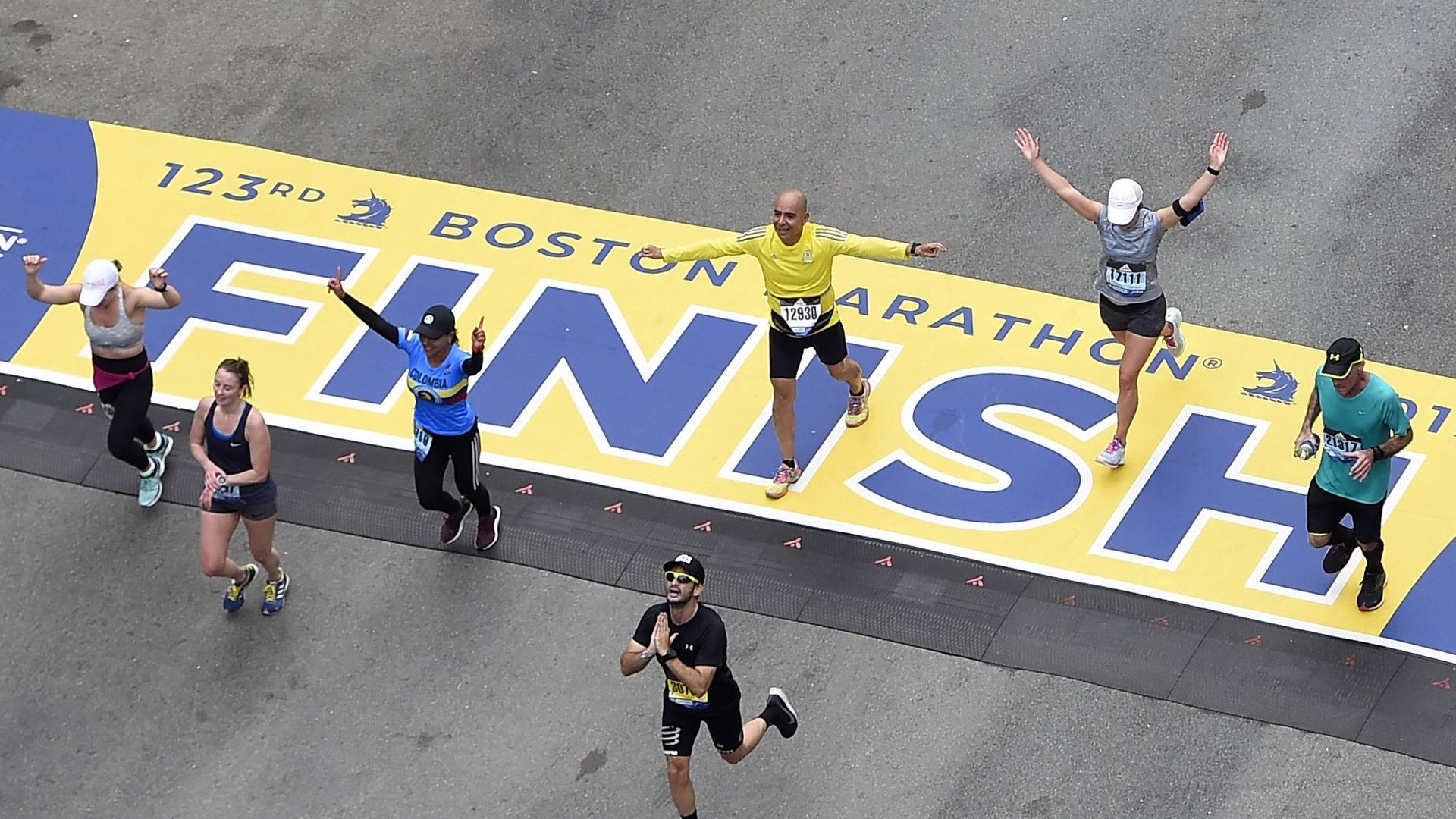
The virtual race will be held Oct.8 to Oct. 10, followed by the in-person race that will be held on Oct. 11, 2021, as long as state reopening rules allow.
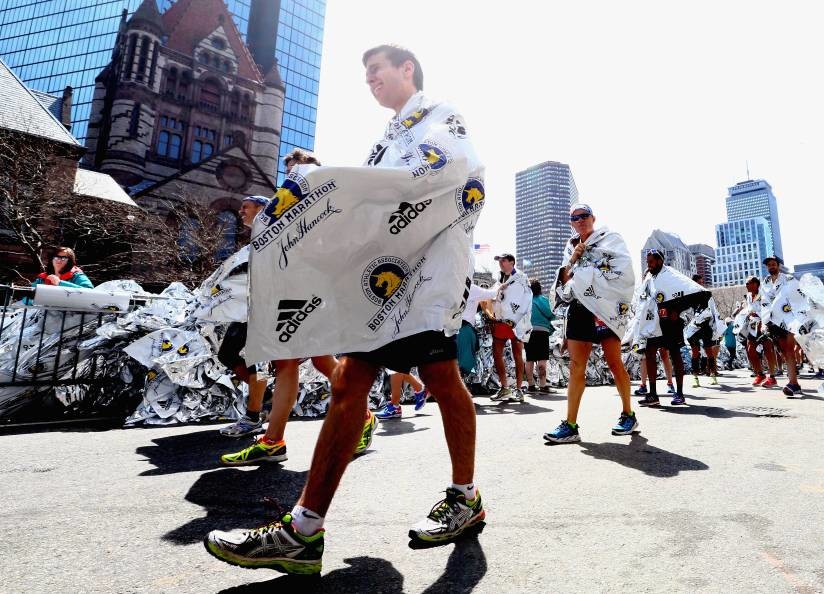
The 2020 Boston Marathon, the 124th running of the race, was initially postponed to September before it was ultimately cancelled because of the COVID-19 pandemic.
Last year, instead of 30,000 runners covering the course from Hopkinton to Boston on Patriots Day in April, more than 16,000 people from all 50 states and 83 countries covered the required 26.2 miles in their own neighborhoods during a 10-day period in September.
(03/30/2021) ⚡AMPBoston Marathon
Among the nation’s oldest athletic clubs, the B.A.A. was established in 1887, and, in 1896, more than half of the U.S. Olympic Team at the first modern games was composed of B.A.A. club members. The Olympic Games provided the inspiration for the first Boston Marathon, which culminated the B.A.A. Games on April 19, 1897. John J. McDermott emerged from a...
more...Kenyan Abel Kirui eyes Mumbai Marathon title in May
Two-time world marathon champion Abel Kirui has landed an invite for the Mumbai Marathon set for May 30 in India.
The assistant superintendent of police based in Mombasa, said said he is ready to make his debut in Mumbai, where he will be up against other bigwigs.
Speaking at his Global Sports Communication training camp in Kaptagat, Kirui said he started his Marathon journey in Asia, specifically Singapore Marathon where he finished third in 2:15:2 and wants to improve on that.
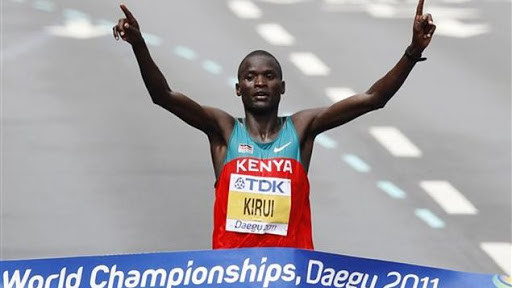
“Now I still have about two months to prepare and as an athlete, I will be fighting for the title and nothing less. I expect a crowded field by considering my training, i believe I am up to the challenge,” said Kirui, who finished third at the 2007 Vienna City Marathon in 2:10:41 before winning the title the following year in 2:07:38.
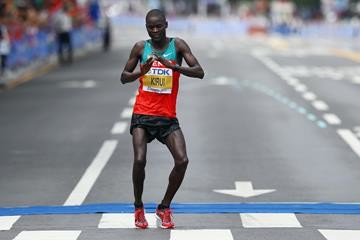
The 39-year-old first won the world title in 2009 in Berlin, Germany before defending it in 2011 Daegu, South Korea. Kirui won silver at the 2012 Olympic Games in London .
The former Chicago Marathon champion said he will be keen to lower his personal best of 2:05:04, which he set in 2009 Rotterdam Marathon. “ I always run well under warm weather conditions, which I expect in Mumbai City,” he added.
(03/30/2021) ⚡AMPby Emmanuel Sabuni
Tata Mumbai Marathon
Distance running epitomizes the power of one’s dreams and the awareness of one’s abilities to realize those dreams. Unlike other competitive sports, it is an intensely personal experience. The Tata Mumbai Marathon is One of the World's Leading Marathons. The event boasts of fundraising platform which is managed by United Way Mumbai, the official philanthropy partner of the event. Over...
more...How to boost your immune system
Since the pandemic of Covid-19 has started, more people than ever are focusing on boosting their immune systems. This is truly important since we need to keep our bodies as healthy as possible in case we get infected. Even though there isn’t one magical way you can boost your immune system, a few things combined can give you great results.
If you were having trouble finding ways you can help your body during this time, you came to the right place. In this article, we will discuss a few things you can do to boost your immune system and successfully fight the pandemic.
Take vitamins
The way people usually recommend taking vitamins is through food. But, will an apple a day keep the doctor away after all? During a pandemic, it is important to boost your immune system as much as you can. If you don’t get enough vitamins through your diet, it can make a significant change in how your body fights with Covid-19.

This is why it would be smart to start taking vitamins if you aren’t already doing so. Pros on vitamins from Dose + Remedy say that vitamins D and C, as well as Zinc and Quercetin, are the most powerful in the fight against Covid-19. If you take these supplements regularly, the chances of getting a severe case of Covid-19 can be significantly lowered. And since they have shown their effectiveness in the fight against the pandemic, you can find them all together as a part of one pack. So, you can avoid the extra hustle and costs of getting them individually.
Get enough sleep
Even outside of the pandemic, getting enough sleep is important for our health. When you sleep well, your whole body is revitalized. Otherwise, you can suffer from memory problems, heart disease, mood disorders, and many other issues.

But, more than ever, we all must get enough sleep. Besides all the things we already mentioned, a good night’s sleep is important for our immune system as well. If we are constantly tired, any kind of infection that we may have can be worse. So, to make your body as prepared as possible in case you get Covid-19, make sure you sleep for six to eight hours every night.
Avoid stressful situations
Stress is often underestimated when it comes to its impact on our health. In reality, many health conditions can be worsened, or even caused by stress. Unfortunately, our immune system is not an exception either. A molecule called cortisol is a hormone that our bodies produce when we are in stressful situations. Even though it has its benefits, when produced in a huge amount, it can reduce the activity of the immune system.
Since we need all the goodies our immune system can provide to fight Covid-19, it is best to avoid any kind of stress. We know it is hard to avoid stress altogether. But, try to learn how to deal with stress and anxiety better, and to focus on good things. If you have any kind of activity that is proven to reduce your stress levels, now would be the best time to embrace it. Or, if you have the chance to do so, you can always do psychotherapy.
Stay active
Physical activity has numerous benefits for your overall health. One of the things that gets a major boost when we exercise is our immune system. Regular exercise increases the production of antibodies and T-cells which can help us fight Covid-19. Besides this direct path of boosting the immune system, exercise reduces the levels of that stress hormone cortisol we previously mentioned. Plus, sweating raises your body’s temperature, making it easier to kill pathogens.
Depending on your age and your abilities, adjust the amount of weekly exercise. Aim for at least 150 minutes per week, but make sure you don’t overdo it. You can do yoga, dancing, or anything else you usually enjoy.
Nutritional Diet
Having a well-balanced diet will help your body stay in balance. To keep your immune system in good shape, make sure to eat seasonal fruits, seeds that can give you essential nutrients, as well as fresh vegetables. Besides improving your immune response, having a nutritional diet can reduce the risk of infection as well.
Since living with Covid-19 became the new normal, at least for now, we must try to do everything we can to boost our immune system. Even though all the things we talked about have a huge impact on our immune response, don’t do just one. To help your body be as prepared as possible in case you get infected, make sure you sleep well, avoid stress, exercise and get all the necessary nutrients, either through supplements or food.
(03/29/2021) ⚡AMPby Colorado Runner
2021 Rock ‘n’ Roll Marathon Set for Oct. 23-24, As Organizers Run Up New Brand Flag
The next edition of the Rock ‘n’ Roll marathon is set for Oct. 23-24, after being rescheduled from its traditional early-summer slot due to the pandemic.
The distances runners can choose that weekend include a marathon, half marathon and 5K.
In addition to the new dates, organizers have rebranded the races.

The event series, run in the U.S., Mexico, England and Colombia, will be known henceforth as the Rock ‘n’ Roll Running Series, while the Rock ‘n’ Roll San Diego Half Marathon will be dubbed the Rock ‘n’ Roll Running Series San Diego.
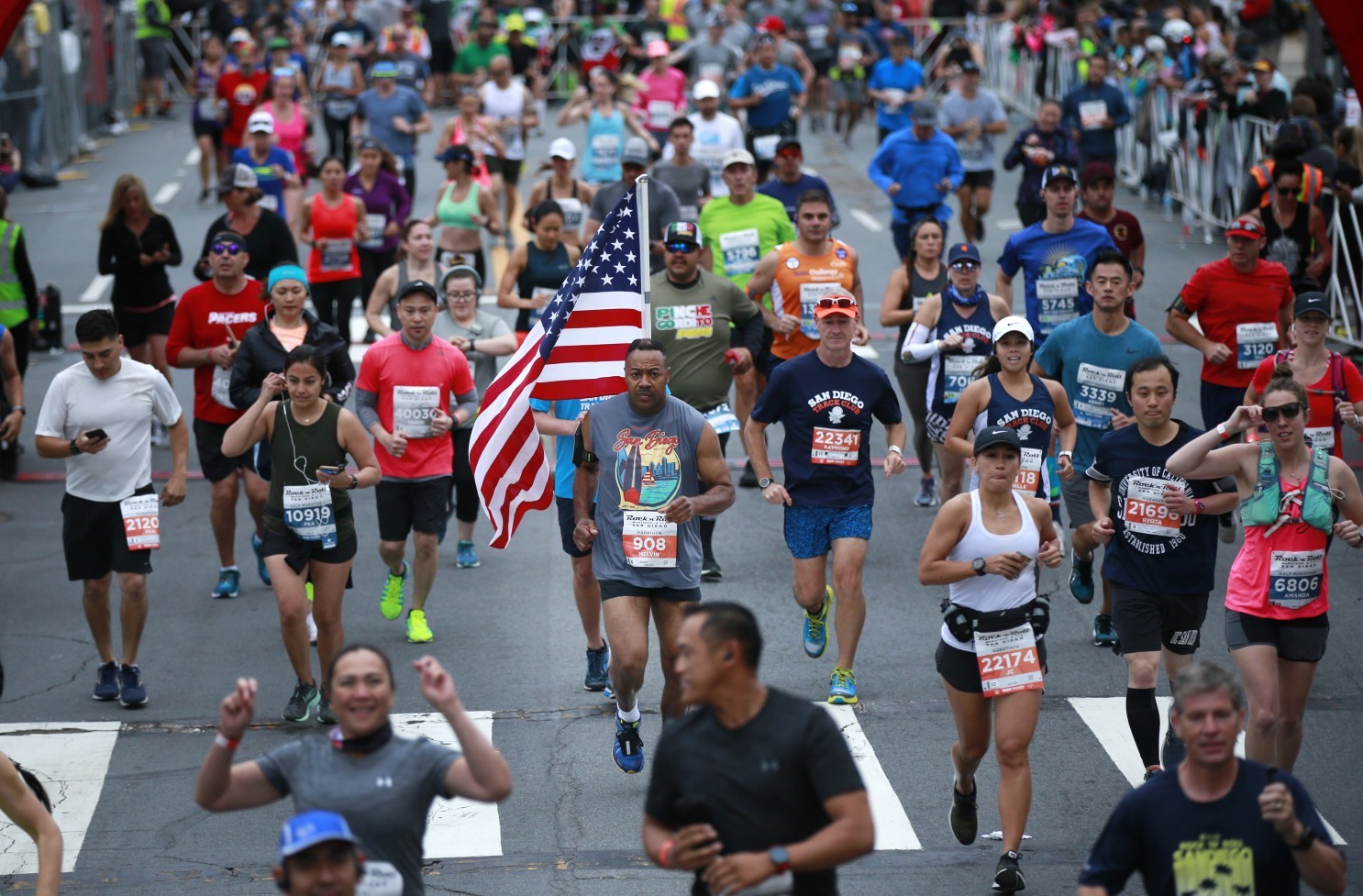
The changes, organizers argue, call attention to the half-marathon being more than a single-distance event.
The half marathon and marathon courses lead runners on a tour through some of San Diego’s most notable neighborhoods, including Balboa Park, Hillcrest, North Park, Normal Heights, before finishing in downtown San Diego.
The rebrand includes a new series logo, event logos and website. The site, organizers say, will make it easier for participants to select race locations, distances and favored course features.
Organizers launched the Rock ‘n’ Roll Virtual Running Series during the pandemic last April to provide runners with the opportunity to bring events to their own communities. It will continue as in-person events return, to help participants train for upcoming races.
(03/29/2021) ⚡AMPRock 'n' Roll San Diego Marathon Weekend
Run through historic neighborhoods including Balboa Park and Old Town. The Marathon, Half Marathon and Relay are packed with live entertainment on course that will keep you rockin’ all the way to the finish line. The Rock ‘n’ Roll Marathon Series is an awesome collection of running events centered on having fun running. Bands, cheerleaders and more fill the courses...
more...Tsehay Gemechu and Nibret Melak claimed a double win for Ethiopia at the Cinque Mulini, the second leg of the World Athletics Cross Country Permit series
Gemechu and Melak secure Ethiopian double at Cinque Mulini, it was Gemechu’s second high-profile victory in as many weeks, following her triumph last weekend at the Campaccio meeting.
The Cinque Mulini, meaning 'five mills' in Italian, boasts one of the most iconic cross-country courses in the world. Back in the 1930s, the course passed through five mills along the Olona river. The race has had to adapt over time and it is now held on a two-kilometre loop which passes through the Cozzi and Meraviglia water mills.
In 2019 the Cinque Mulini was awarded the World Athletics Heritage Plaque.
Gemechu, fellow Ethiopian Alemitu Tariku and Kenya’s Sheila Chelangat and Beatrice Chebet pulled away from Burundi’s Francine Niyomukunzi in the early stages and completed the first lap in 6:45.
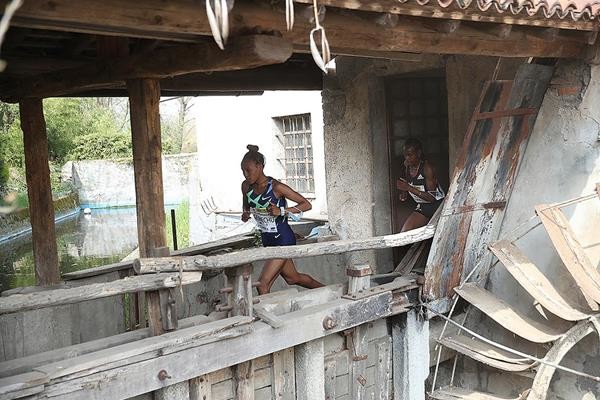
Chebet, Gemechu and Chelangat stepped up the pace on the second lap, opening up an 11-second gap on Tariku. Chelangat was the next to drift back, leaving Chebet and Gemechu to battle it out on the final lap.
Chebet led for most of the final lap, but Gemechu launched her kick in the final straight to take a three-second win in 18:53.
“I feel good,” said Gemechu, the fourth-place finisher in the 5000m at the World Athletics Championships Doha 2019. “It was a great race for me. I am happy that I won my second consecutive race. I will now return to Ethiopia to prepare for my next race over 10,000m in Hengelo.”
Melak took the honours in the 10.2km men’s race in 28:57, holding off last year’s Cinque Mulini winner Leonard Bett Kipkemoi by one second and two-time world 5000m champion Muktar Edris by two seconds in a close sprint.
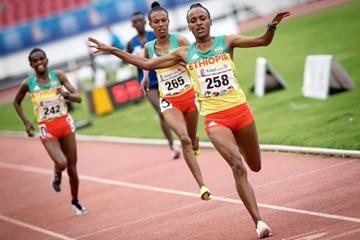
Bett led a nine-man lead group that included Melak, Edris, Uganda’s Samuel Kibet and Hosea Kiplangat, Italian marathon record-holder Eyob Faniel, Marouan Razine, Yohannes Chiappinelli and Oscar Chelimo.
The lead pack was whittled down to seven runners during the second lap as Bett took the initiative, going through the second lap mark in 12:14, closely followed by Melak, Kibet, Edris, Kiplangat, Chiappinelli and Chelimo.
The pace increased on the fourth lap when Melak, Bett, Kiplangat, Edris broke away from Kibet with the leading quartet going through 8km in 23:30.
In a dramatic final sprint, Melak edged ahead of Bett to win by one second in 28:57. Edris, who won the Cinque Mulini in 2013 and 2015, finished third in 28:59, sharing the same time as Chelimo.
It was Melak’s second consecutive podium finish in the Cross Country Permit series, following his runner-up spot at the Campaccio in San Giorgio su Legnano last week.
The 21-year-old has a 5000m PB of 13:07.27, set as an U20 athlete in 2018, but it’s cross country where he excels. Earlier this year he successfully defended his senior men’s title at the Jan Meda Cross Country, which doubles as the Ethiopian Championships.
“It was a very competitive race,” said Melak. “I expected that the battle for the win would be very close, as I ran against great athletes. Cross country is the perfect build-up to the track season.”
(03/29/2021) ⚡AMP
by World Athletics
Caster Semenya ran just the second 5,000m of her racing career on Saturday
South Africa’s Caster Semenya ran just the second 5,000m of her racing career on Saturday, finishing in second place at the AGN Championships in Pretoria. The multiple world and Olympic 800m champion finished in 16:14.43, finishing far back of the race winner and well off the Olympic standard of 15:10.00. She owns a 5,000m PB of 16:05.97 from 2019.
Semenya has DSD (differences of sexual development), and after a 2019 World Athletics ruling, athletes with DSD aren’t allowed to compete in events from the 400m up to the mile. Semenya has challenged this ruling many times, taking it to several courts, but she has been unsuccessful in her attempts to have it overturned.
(Semenya is currently waiting on an appeal with the European Court of Human Rights, which is likely her last chance to get the ruling changed.)
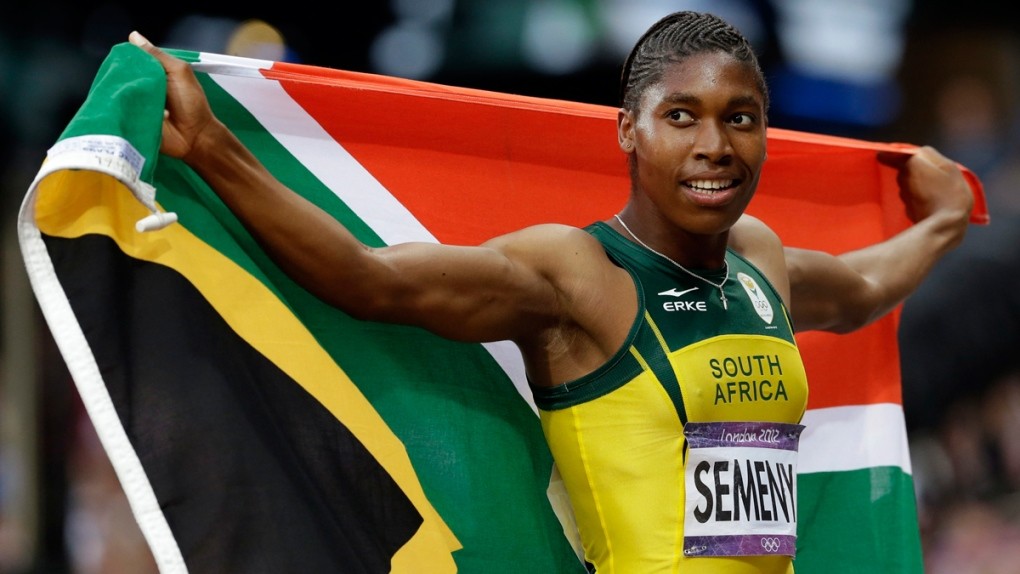
One way Semenya could continue to compete in the 800m would be to take medications to lower her testosterone levels, but she has refused to do so. This leaves her with one option: to compete outside of that banned zone from the 400m up to mile, meaning she has to drop to the 200m or jump to the 5,000m if she wants to race at the Olympics again.
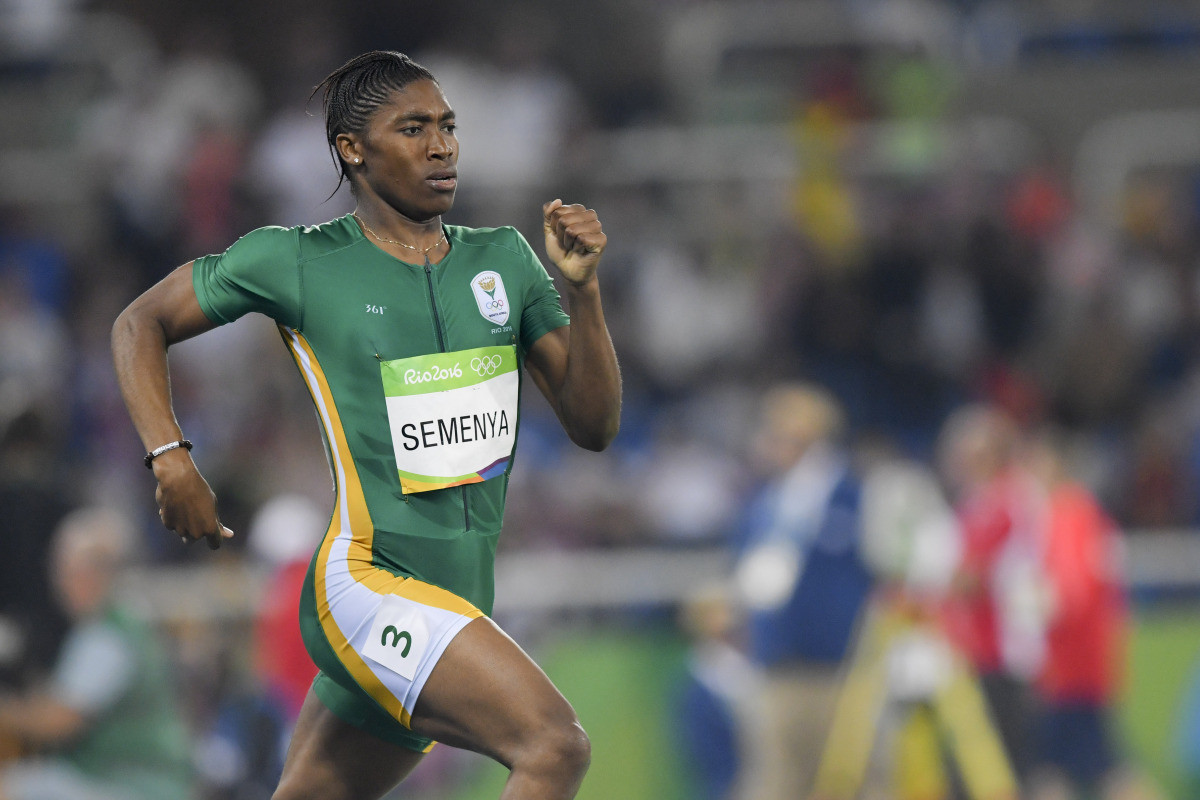
Last year, Semenya entered several sprinting races ahead of the pandemic. She won each of them (even setting the South African 300m record in 36.78) and eventually lowered her 200m PB to 23.49 seconds, still more than half a second off the Olympic standard of 22.80.
Despite the large jump required to qualify for the Olympics, Semenya remained confident, and last May she said she planned to stick with the 200m “no matter what.” Now, with just a few months to go until the Tokyo Games, she seems to have reconsidered, although it doesn’t look like the 5,000m standard will be any easier to reach before the summer.
(03/29/2021) ⚡AMPby Ben Snider-McGrath
Running “together†no longer has to mean running with others in-person.
Running is an individual sport. No one else can grind through the mental and physical challenges of a run for you; it’s something you have to find the fortitude to do on your own. But there’s camaraderie in braving that kind of type-2 fun with others—which is why, as long as people have been able to run, they’ve run in groups, signed up for running classes, and raced alongside each other.
And while running together in-person is a best-case scenario, just knowing your friends are also running elsewhere can impact your fitness. In fact, a 2017 study published in the journal Nature Communications found that running is actually “socially contagious.” After analyzing over five years of data uploaded by more than one million people to a global social media platform, the researchers found that people are likely to run an additional three-tenths of a kilometer after seeing their friends log an extra kilometer that day, or another three minutes after seeing a friend run an extra 10 minutes.
So while the COVID-19 pandemic has forced limited capacity in gyms and workout studios and canceled some run club meet-ups and races, runners haven’t retreated into isolation. The running community has simply moved online, redefining what social running looks like.
(03/29/2021) ⚡AMP
by Runner's World
Timetables confirmed for Bathurst and Yangzhou
World Athletics and World Masters Athletics have reached a historic agreement that will see masters championships held for the first time alongside the World Athletics Cross Country Championships in Bathurst, Australia, next year.
The World Athletics Council approved the proposal last week while confirming the competition timetables for both Bathurst and the World Athletics Half Marathon Championships Yangzhou 2022.
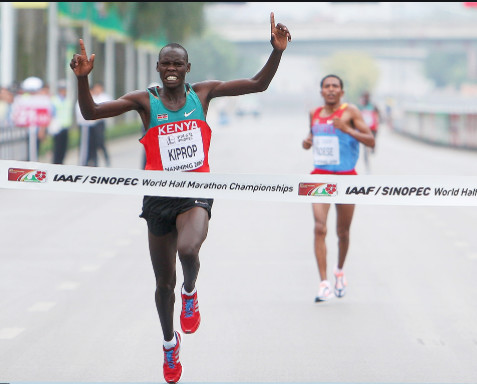
World Athletics, World Masters Athletics and the Bathurst Local Organising Committee will work together to organise the inaugural World Masters Cross Country Championships (short course) on the weekend of 19-20 February 2022.
"We have worked hard over the last few years to develop closer relationships with the various sectors of the global running community, including recreational running, mountain and trail running, and parkrun, because that makes our athletics community stronger, so I’m delighted to announce this new initiative in cooperation with World Masters Athletics," World Athletics president Sebastian Coe said. "We look forward to welcoming passionate runners of all ages and abilities to Bathurst next year for what promises to be a unique festival of cross country running."
World Masters Athletics president Margit Jungmann added: "We are excited to offer this new opportunity for masters athletes around the world to come together and celebrate their love of running and competition, and to join with the best cross country runners in the world to test themselves on the scenic Mt Panorama course at Bathurst in Australia. We are pleased to be working with World Athletics to make this a uniquely memorable event for all the masters athletes who attend."
Originally scheduled to take place in March 2021 before the Covid-19 pandemic led to its postponement, the World Cross Country Championships in Bathurst will now be held on 19 February 2022. The timetable is as follows:
14:35 U20 women’s 6km15:15 U20 men’s 8km16:25 mixed relay17:05 senior women’s 10km18:05 senior men’s 10km
The World Masters Cross Country Championships will include a mixed 4 x 2km relay, tentatively scheduled before the World Athletics events on Saturday, 19 February, and a series of age group races on Sunday, 20 February.
World Athletics Half Marathon Championships Yangzhou 2022
The timetable for the World Athletics Half Marathon Championships, scheduled to take place in Yangzhou, China, on 27 March 2022, is as follows:
9:30 women’s race10:00 men’s race, followed by mass race
As with previous editions, there are no entry standards for the competition. A maximum of seven athletes may be entered by a member federation, but only five can start the race. The top three finishers for each member federation will count towards the team competition.
For the fifth successive edition, the World Half Marathon Championships will feature a mass race, giving thousands of recreational runners the chance to run in the footsteps of the best athletes in the world.
(03/28/2021) ⚡AMPby World Athletics
Have You Ever Felt Guilty for Missing a Workout? If So, You’re Not Alone
Experts offer tips on how to strike a healthy balance between setting big goals and being kind to yourself.
As many runners know, it’s motivating to set goals and create a plan to reach them, and then thrilling when you sprint past them—even in your everyday training, not just when you’re gearing up for a race.
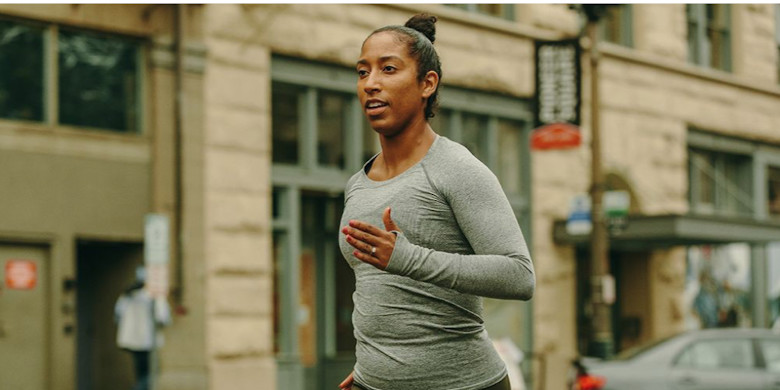
However it’s also easy to become too fixated on your exercise routine. When that happens, you can feel guilty over skipped workouts, have anxiety when your schedule changes, and, perhaps the biggest ripple effect, suffer overuse injuries.
At what point does your desire to exercise start hurting you?
The answer is different for everyone, of course. Whether you’re past that line or not, taking a moment to consider your approach can be helpful. Here are some insights on what to consider when it comes to nurturing your relationship with exercise.
Rediscover Your Why
You run because it’s good for you—a statement backed up by plenty of research—and you cross-train for the same reason. But what does that really mean?
“This is always and forever going to come down to understanding your relationship with exercise in the first place,” running coach Kourtney Thomas, C.S.C.S., told Runner’s World. “Know yourself deeply, peel back the layers, get a firm idea of your ‘why’ for exercise. That means your reason, not anyone else’s, including society or even your doctor.”
Set aside time to ponder why you run, she suggests, thinking beyond vague, external, or clinical “health goals.” One trick is a management technique called the “five whys,” which means you might start with an overarching statement like, “I run to challenge myself.” Then you keep digging: Why is it important to you to do that? With every answer, go one level deeper with another “why” until you’re five layers down.
“Your motivation and ‘why’ should come from a place of autonomy,” Thomas said. “Get at the root of why you exercise, and you’re likely to feel connected to it in a fresh, meaningful way.”
Redefine Your Minimum
Keeping your why in mind, you should then define what your exercise “minimum” really means to you, while also being realistic and compassionate with yourself, Thomas suggested.
Maybe ideally, you plan to take at least a three-mile run daily, but then there’s a day it doesn’t happen, because your boss hits you with last-minute work. What’s your reaction? If you had made that run your absolute minimum, most likely you’re going to be more than frustrated, and that will probably spill over into other interactions. (A tip: Don’t email your boss at that moment!)
But if your minimum is going for a three-mile run a few times a week, then you’re likely to be much less bothered by the shift in your schedule. In other words, lower your bar. You can always do more than your minimum, and keeping it realistic means accommodating changes to your schedule.
Also, if you have a very high minimum, you’re likely to feel guilty about skipping a run on the days when you just don’t feel like getting out there, said Thomas. That can get complicated quickly. Perhaps instead of seeing guilt as a sign you’re not doing what you “should,” think of it as a cue to change your definition of what’s healthy for you.
“The guilt response comes from feeling like you’re doing something wrong, but you’re the one defining that,” she said. “Guilt is just not productive and it’s often irrational and overwhelming.”
Rethink What Constitutes Exercise
One day, you didn’t have time for a proper workout because you were running errands all day, and then you did yard work and tidied up the house. Although you might not have gone for a run, that doesn’t mean all that activity doesn’t add up to similar benefits of a workout.
Called “movement snacks” or high-intensity physical activity (HIIPA), these sporadic bursts of exercise—like sprinting up a flight of stairs, scrubbing dirty pots vigorously, or crawling around with your kid—can be more meaningful than you think.
“Benefits vary by age and fitness level, but in general, doing HIIPA three or four times per day can give you a surprising amount of improvement in cardiorespiratory fitness,” Emmanuel Stamatakis, Ph.D., professor of physical activity, lifestyle, and population health at the University of Sydney, told Runner’s World.
A study he led showed that doing only one minute total of HIIPA per day, broken up into these movement snacks, had measurable increases of 5 percent in fitness over six weeks. Again, that’s just one minute every day. That means it may be much easier to keep up your level of fitness than you might think.
Revisit the Concept of Rest
Rest is crucial for any athlete, and not just as a day built into a larger training plan. It’s normal to take weeks or months off from exercise, in order to give yourself a complete mental and physical break.
And even if you take rest days, you might still be suffering from some degree of exercise burnout, especially right now when stress levels are still high during COVID-19, according to Joe Holder, C.P.T., Nike master trainer and run coach, who just launched a fitness and wellness fundamentals program on MasterClass.
“Our body needs an off-season, especially if we perform races,” he told Runner’s World. “We might think we have to hit every workout or be perfect on our diet, but it can be too much if our stress loads are out of whack. Don’t be afraid to reduce your exercise load and just focus on other wellness strategies if you feel like you need a moment.”
Not sure if you need that break? Holder suggested thinking about whether you consider exercise a form of punishment, or at least something you’re forcing yourself to do. If you’re dreading a run and finding ways to procrastinate it, that should be a huge sign that you might need an off-season.
Consider other self-care tactics for a couple weeks or even months, such as focusing on your sleep quality, stress management, relationship dynamics, gut health, or work scheduling. Taking a break can not only help you come back to exercise stronger physically, Holder said, but you’ll also have healthier perspective when you return.
(03/28/2021) ⚡AMPby Runner’s World
Gu Is Developing a ‘Cooling’ Energy Gel for Those Hot Summer Runs
The gel lowers perceived heat stress, which could improve performance in warm weather.
In research to be published in the International Journal of Sport Nutrition and Exercise Metabolism, athletes who took a menthol gel during a workout in warm conditions reported feeling cooler.
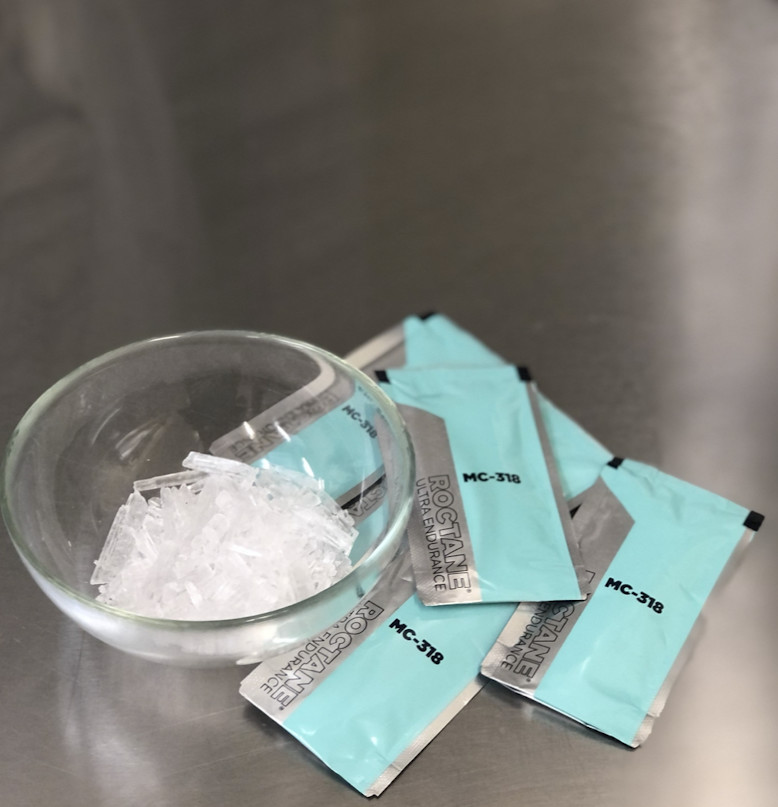
Study participants also reported feeling less airway constriction and that they could breathe more freely.
This supports the growing evidence that there could be natural performance-enhancing benefits to different types of tastes when you’re working out or competing.
As we reported last year, there’s growing evidence for the performance-enhancing benefits of various tastes, independent of whatever energy the food or drink they’re in provides. That’s true for some of the most common forms—sweet, bitter, spicy, cooling—of what researchers call “tastants.”
A barrier to everyday athletes making use of this phenomenon is a dearth of commercially available sport nutrition products containing one of these tastants. So, for example, if you’re inspired by the study in which runners improved their 1500-meter time after taking a capsule containing capsaicin, the chemical that gives chili peppers their heat, you’ll have to come up with a DIY solution, such as swilling diluted hot sauce.
There might soon, however, be an easy-to-use option for people wanting to capitalize on research showing improved performance in the heat after athletes ingest menthol taste solutions. GU Energy Labs is developing a mint-flavored menthol gel that, in research to be published in the International Journal of Sport Nutrition and Exercise Metabolism, imparted a significant cooling sensation when taken during warm-weather training. The basic idea is that such a gel could make exercising in the heat feel more comfortable, and thereby encourage athletes to go faster or longer.
For the study, 40 national- or world-class endurance athletes consumed a gel on three separate workouts done in average conditions of 78 degrees Fahrenheit and 56 percent relative humidity. The participants were split evenly between men and women; 19 were cyclists, 15 were race walkers, and six were runners. During one workout, they downed a gel with a menthol concentration of 0.5 percent, during another they had a gel with a menthol concentration of 0.1 percent, and during the third they consumed a mint-flavored placebo gel that contained no menthol.
Both of the menthol gels imparted a cooling sensation, while the placebo didn’t. Participants reported feeling cooler for two to 15 minutes after taking the lower-concentration menthol gel, and for up to 45 minutes after using the higher-concentration one. However, half of the athletes said the cooling sensation was too intense after the higher-concentration gel. The lower-concentration gel received a better overall rating on the confluence of cooling, mint flavor intensity, and sweetness. That’s the one that Gu is continuing to develop in collaboration with Southern Cross University in Australia.
How does this phenomenon work?
“The chemical compound in menthol activates receptors linked to temperature-sensing neurons that send your brain information about the presence of cold stimuli,” Roxanne Vogel, who developed the gel as the focus of her Ph.D. research, told Runner’s World. “Essentially, menthol ‘turns on’ the same messaging pathway that responds to cold, so you get the sensation of cooling without any actual change in temperature.” 

Many of the study participants also reported feeling less airway constriction, and that drinks tasted colder, after they consumed the menthol gels. Cold/menthol receptors in the upper respiratory tract “can provide a sensation of increased ventilation,” Vogel said. “This is why menthol is commonly used in medicinal chest rubs and cough drops.”

Vogel’s explanation meshes with my own individual experience taking the lower-concentration menthol gel during a few long runs. The cooling sensation was more or less immediate, and strong. (Whether I needed a cooling sensation during winter in Maine is another matter, but duty calls.) I also felt I could breathe more freely. The latter sensation can’t be ascribed to the power of suggestion, because I hadn’t yet read the full study text in which participants reported the same feeling.
I’m now saving my remaining prototypes for this summer, to use them in their intended conditions. When I do so, I’ll be sure to remember a caveat noted in Klein’s quote above and in other research on the topic: Don’t confuse the feeling of being cooler with actually being cooler. Again, menthol lowers your perception of warmth, but doesn’t affect your core temperature, which will rise when you run in hot weather.
Gu is planning real-world field testing of the menthol gel this summer to help decide the product’s release date , according to Magdalena Lewy Boulet, the Olympic marathoner and Western States 100 champion who is the company’s senior vice president of innovation, research, and development.
(03/28/2021) ⚡AMPby Runner’s World
University of Oregon seniors facing virtual graduation frustrated by Olympic Trials, track plans
When the University of Oregon announced in early February it will have a virtual commencement ceremony for the second year in a row, the university was met with frustration from some students — not because they wanted to shirk COVID-19 guidelines, but because they believed it was a double standard.
UO's virtual commencement ceremony is scheduled for June 12. A week later, the 2020 U.S. Olympic Team Trials for Track & Field will be held at Hayward Field on UO's campus.

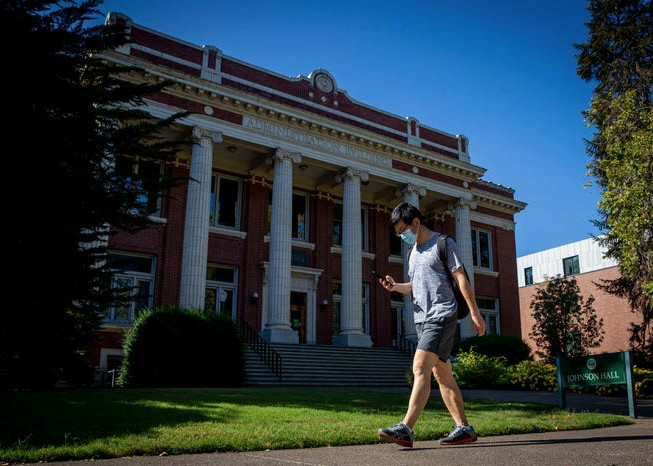
UO also announced this week it will host five collegiate track and field meets at Hayward, starting the weekend of April 2 and ending with the NCAA Championships June 9-12, the same week as graduation.
The university is not involved with the planning or organization of the Olympic trials. The trials are run by TrackTown USA, an outside party that contracts with UO for the use of Hayward Field.
Spectators are not welcome at the first NCAA meet, UO said.
While the university is unwavering on a virtual commencement, it is looking at adding some form of in-person activity for graduation.
For some students, though, it's not enough.
"I just want the (Olympic) trials and graduation to be held at the same standard — so either they both happen or they both don't," said Morgan Leone, a 22-year-old UO senior graduating in June. "And if they both don't, it's unfortunate they couldn't make it happen. (People) worked really hard for both of them, but I would love to see them both happen regardless."
Spring sports moving forward
The Olympic trials for track and field has been held at Hayward Field six times since 1972, though the first year only included men's events. The 2020 trials will be the seventh.
They are organized locally by TrackTown USA, a Eugene-based nonprofit organization that runs other large-scale track and field events. TrackTown has contracted with UO to rent space on campus for these events before, and this year is no exception.
The 2020 Olympics, which were postponed globally because of the COVID-19 pandemic, are scheduled to be held July 23 through Aug. 8 in Tokyo.
Although TrackTown consistently had to adjust plans for the trials, working with public health officials and the UO to adapt to changing policies, said CEO Michael Reilly, the organization still plans to host it in June.
"We are full-steam ahead in planning to host the Olympic trials in June," Reilly said. "We are remaining hopeful that the event is going to continue to be able to be held, and, the conditions here in Oregon and around the country continue to improve. But, if anything, we've learned over the last year we have to take things week by week."
UO sports such as softball, soccer and track and field are underway this spring. The NCAA has been regularly testing athletes for COVID-19 this year.
The Oregon track and field team will host five meets at the new Hayward Field this spring, which will "only be hosting guests of student-athletes and coaches as the meet schedule begins," and no spectators, Oregon Athletic Director Rob Mullens said.
More in-person activities will be allowed as guidelines change, potentially meaning spectators at events.
State guidelines vary standards
Lane County's risk level set by Oregon Health Authority has been dropping for several weeks. As the vaccination rate increased, the number of new cases has decreased significantly and as of Friday, the county was put in the "lower risk" category, which is the lowest category a county can be in.
"Even with Lane County moving into a lower risk category, the university’s educational and research activities are still restricted by the governor’s orders for higher education issued last June," UO spokesperson Molly Blancett told The Register-Guard in an email.
The governor's executive order notes that for research, residential and instructional activities, universities should follow what is directed from the Higher Education Coordinating Commission. It also states other activities on campus, such as athletics, need to comply with other executive orders and OHA guidance specific to the risk level of the county.
In the lower risk category, indoor classroom instruction cannot exceed 50 people, and outdoor classroom instruction 300 people, the HECC states. Outdoor recreation, including college athletics events, are allowed a maximum of 50% occupancy, according to OHA guidelines.
"These restrictions (for UO) are independent from activities organized by outside parties that have contracted to use UO facilities," Blancett said.
TrackTown's operating plans not set yet
However, TrackTown always has to comply with the policies laid out by UO on the use of the space, Reilly said, as part of the contractual agreement.
UO also will be paid by TrackTown for space used, as part of that contract. The exact dollar amount is still unclear, Reilly said, but will likely be set in the coming weeks as they come to better understand the amount of space the organization will rent from UO.
Lane County Public Health also is involved in Olympic trials planning and has been for past trials, Reilly said. When the time comes, TrackTown will present its plan to OHA.
"We fully expect a good rigorous analysis from them. We'll try to do our best to answer their questions that may evolve at that point, a need for us to adapt and change the operating plans that we're proposing," Reilly said.
"I imagine it's going to be an ongoing back-and-forth discussion with them in the coming weeks to try to arrive at a set of operating plans that they feel comfortable about," he said. "That will enable us to not only conduct a safe event for the participants there, but also do a good job of protecting the broader community."
UO entertaining in-person grad activities
The Olympic trials being contracted out to a third party doesn't change students' call for UO to seek alternatives for graduation.
"That really frustrated me in the sense that they're kind of hiding behind TrackTown," Leone said about UO. "I feel like they've been using that as an excuse.
"In a way like I feel like we signed a contract with the school, and we all paid our way through the university whether we liked it or not," she said.
"And it's frustrating to see that (UO) will be getting a paycheck out (from) TrackTown, and it seems very correlated to why they also want to keep pushing it to go on. I feel like the university tends to forget that we are also paying students and paid a lot of money to go here."
Leone is one of 1,600-plus people who have signed an online petition for UO to reconsider the decision to hold a virtual commencement and include more student input on alternatives.
The petition points out changes such as increased access to vaccines in Lane County, along with the track and field plans as reasons to reconsider.
UO announced there may be some opportunity for in-person activities at commencement, though the actual commencement ceremony will still be virtual. However, it's still unclear what these activities could be.
In a typical year, each school and college at UO (the business school, college of arts and sciences, etc.) has its own smaller commencement ceremony. This is where students actually have their names read and walk across stage to receive their degrees. Then there is a separate, university-wide commencement ceremony with speeches from UO President Michael Schill and other guests.
When asked whether these smaller school-specific ceremonies still were being considered, Blancett said UO is "actively exploring how it might add an in-person activity to complement planned virtual commencement ceremonies," but had nothing more to share at this time.
Students suggest safe alternatives
Leone set up a template email that students could fill out and send to UO leaders suggesting a way of doing in-person commencements. The program she uses shows about 200 people have used the template.
"It's basically suggesting doing many different ceremonies throughout the day at many different locations, without families, so Hayward, also at Autzen field, the EMU lawn," she said. "Everything I wrote followed the extreme risk guidelines, so it'd be 25 people outside all socially distanced ... it would be very strict, but at least families could tune in and watch."
With about 30 minutes per ceremony, following the most stringent guidelines the state has set, Leone said she calculated it would take a couple of days to get through everyone including the 2021 graduates, but it would be possible.
"I don't want anyone to think I'm disregarding COVID or trying to push for unsafe COVID activities," Leone said. "I just figured there are other universities working really hard to try and make something else safe. (UO) can absolutely do that for the seniors."
In the statement, UO's Blancett said UO is "eager to recognize students’ successes and achievements in meaningful ways."
"The health and safety of our community is a top priority, as is the ability to remain flexible while adhering to a rapidly changing guideline that may become more or less stringent over time," she said. "The safety of our campus community remains a top priority and a guiding principle as we navigate moving operations in and out of different risk levels."
(03/28/2021) ⚡AMPHAYWARD FIELD TO HOST USATF GRAND PRIX AT OREGON RELAYS AS PART OF 2021 JOURNEY TO GOLD - TOKYO OUTDOOR SERIES
USATF is pleased to announce that the USATF Grand Prix at the Oregon Relays will be held April 24, 2021 at the University of Oregon’s Hayward Field in Eugene, Oregon. The meet, part of USATF Journey to Gold - Tokyo Outdoor Track & Field Series, is a World Athletics gold label designation. The USATF Grand Prix at Oregon Relays is the first time professional athletes will compete at the newly renovated Hayward Field, which is the site for the 2022 World Athletics Championship. Events to be contested are as follows (subject to change):
Men’s events: 100m, 400m, 800m, 1500m, 3000m Steeplechase, 5000m, Long jump, Triple jump, Hammer throw, Javelin throw

Women’s events: 100m, 400m, 100m Hurdles, 800m, 1500m, 3000m Steeplechase, 5000m, Triple jump, High jump, Shot put
Due to the ongoing COVID-19 pandemic, all meets are pending USATF, local and state health protocols and are subject to change.
(03/28/2021) ⚡AMPParis 2024 is offering 100 spots at mass-participation marathon just to women, in an effort to boost gender balance at the event
Club Paris 2024 is offering 100 spots in the public marathon being held alongside the Paris 2024 Olympics to women, in an effort to boost gender balance at the event.
The membership club associated with Paris 2024 is offering entry to the marathon to those who collect 700 points by March 31.
Every kilometer run from March 8 until this date will give a person 10 points, with those running 70km reaching the target.
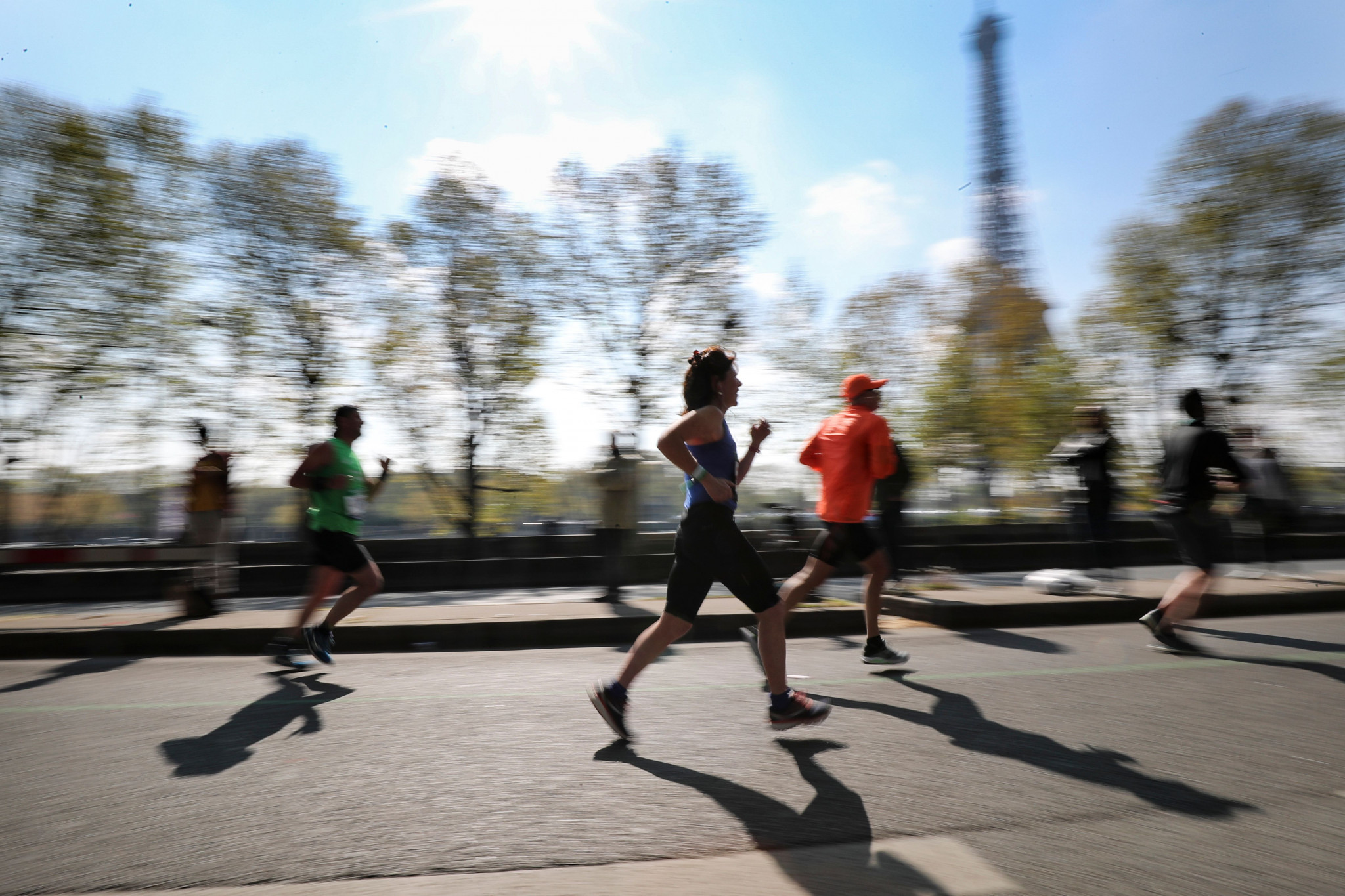
Walking 1km will give you five points, swimming 1km awards 40 points and cycling 1km is worth 2.5 points.
For other activities, one minute of sport will earn one point.
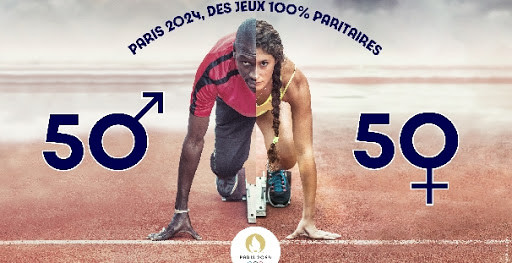
Club Paris 2024 requires women to collect the points by the deadline and enter their gender to be part of the draw.
An identity card may be requested.
From April 1 to 7, a raffle will be conducted, drawing 100 winners and 50 alternates.
Just 27 per cent of participants in the 2019 Paris Marathon were women, which is why Club Paris 2024 has launched this scheme.
The Paris 2024 Olympics are scheduled to run from July 26 to August 11 in 2024, with the schedule yet to be announced for athletics.
The marathon finish is set to be the Avenue des Champs-Élysées, and the mass-participation race will offer members of the public the chance to run the same course on the same day as Olympic athletes.
Le Club Paris 2024 is backed by AliExpress, which is offering clients the opportunity to earn an additional 500 points for each challenge completed, using the code "AliExpressParis2024".
"We are really delighted about our partnership with the Olympic and Paralympic Games Paris 2024, which is aimed at promoting the sporting values to which we are particularly attached at AliExpress," said Christina Lu, head of marketing for AliExpress.
"The benefits of sports practice no longer need to be demonstrated, and we hope that our collaboration with Le Club Paris 2024 will make people want to practice physical activity on a regular basis."
Alibaba, a member of The Olympic Partner worldwide sponsorship programme since 2017, is the parent company of AliExpress and one of the most important International Olympic Committee sponsors.
(03/27/2021) ⚡AMPby Michael Houston
Paris 2024 Olympic Games
For this historic event, the City of Light is thinking big! Visitors will be able to watch events at top sporting venues in Paris and the Paris region, as well as at emblematic monuments in the capital visited by several millions of tourists each year. The promise of exceptional moments to experience in an exceptional setting! A great way to...
more...How to prepare your body for a workout
It’s a wonderful time to be alive because we have all become so much more aware of our bodies and how they work, and this motivates us to take better care of ourselves. Health and fitness has been taking top priority with more and more people, and this is something that you need to get into if you haven’t already. Working out is something you can do on your own in the comfort of your home, but you need to be well informed about what the process is so you don’t end up hurting yourself. This is why we’re going to fill you in on 8 ways you can prepare your body for a workout.
Create a Workout Schedule
The best way to workout effectively and ensure that your body is prepared for the workout is to be organized about it. You need to create a workout schedule, and it’s actually preferable if you have a set time for exercise every day. By doing so, you create a consistent cycle and your body is able to get into this routine while having the same amount of rest time between each workout. When you do your workouts whenever you feel like you’re in the mood and at an inconsistent pace, you’ll find that you’ll either have too little time to rest between workout, which can cause damage, or you simply won’t see any progress at all.
Understand Your Body First
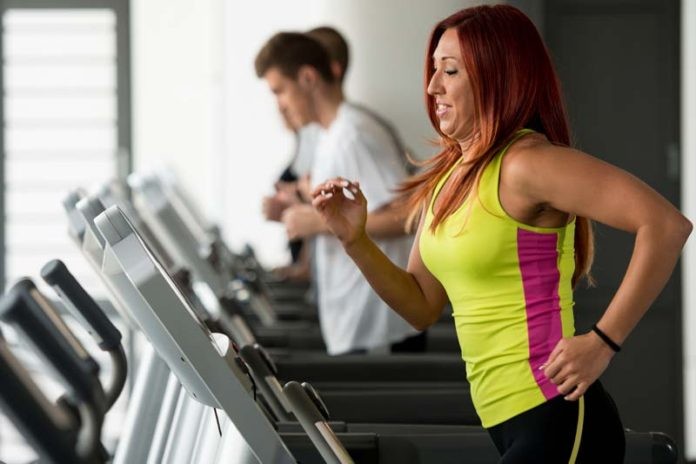
Before committing to any kind of workout, it’s really important that you have a better understanding of your body first. The first thing you need to do is visit your doctor to see what state your body is in to know what kind of workouts would be suitable for you and which ones you need to stay away from. If you’re interested in focusing on muscle building, then it’s advised that you get bodybuilder tests done to get a better understanding of the condition of your muscles. This way, you’ll know exactly how much pressure to put on yourself without getting hurt.
Watch What You Eat
Before getting into any kind of workout, your body needs to be healthy inside out. The best way to reach the ideal condition is by paying attention to your diet. It’s time for you to switch to a healthy diet filled with a balance of fresh produce and healthy fats and carbs as well. If you’re not sure how to do this properly, visit a nutritionist and they’ll be able to set you on the right track.
Always Stay Hydrated
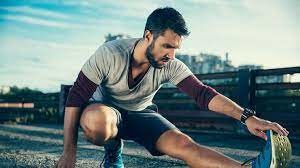
Nothing is worse than working out with a hydrated body- this is the best way to cause damage to your muscles and tendons. Make a habit of always having water by your side before you start working out and make sure that you’re hydrating yourself throughout the day. Water is a given, and also look into the healthiest kinds of smoothies and protein shakes as well. Stay away from sugary drinks, caffeine, and sodas.
Sleep Affects the Condition of Your Body
A rested body will be able to take on much more than one that is fatigued. Sleep allows your muscles and your body in general to rejuvenate itself, so there’s no point in attempting a workout if you haven’t gotten a good night’s sleep. You’ll have stiff muscles and you’ll never be able to get what you want out of your workout if you don’t rest it the way it should. You need 7 to 8 hours of sleep, ideally.
Meditation Does Wonders
Stress has become so common that we tend to overlook it and just try to get on with our lives. If you want to prep your body for an effective workout, you need to make sure that you meditate first. Meditation allows you to clear your mind by focusing all your energy on your thoughts and decluttering all the mess that resides in your mind. Meditation also helps you focus on your breathing patterns, which will go a long way in allowing you to have longer and more effective workouts because you won’t have to feel out of breath too early on.
Look into Supplements
When you visit your doctor and your nutritionist, you’ll be able to find out what kind of deficiencies you might have. Most of these, you’ll be able to control by changing your diet and your lifestyle in general. However, in some cases, you’ll be advised to take supplements as well to really make sure that your body is in the best shape before a workout. There are also supplements made specifically for workout that you can take in either tablet form or as a smoothie. These prep your muscles for exertion and allow you to build your muscles more effectively.
Always Stretch
Last but not least, you always need to stretch. By not doing this, you’re going into your exercises with a body that simply isn’t prepared for the kind of effort and movement you’re going to be putting into it. Think about looking into yoga stretches and also look into stretches that focus on the points that you feel are the most tense, such as your neck, shoulders and back. Don’t forget about the leg and hip stretches as well so that you don’t end up pulling any muscles. You can easily find stretching tutorials online or you can ask a professional trainer to guide you so that you have the basics down for whenever you want to work out at home.
(03/27/2021) ⚡AMPby Colorado Runner
U.S. Supreme Court to reconsider death penalty in Boston bomber case
It was announced on Monday that the U.S. Supreme Court will review the case of Dzhokhar Tsarnaev, one of the two men who set off explosives at the finish line of the Boston Marathon in 2013. Tsarnaev, now 27, was convicted in 2015 and sentenced to death, but that decision was overturned by a federal appeals court in July 2020. Now, the Supreme Court will review the case once more, and Tsarnaev’s death sentence could be reinstated.
During his trial, Tsarnaev’s lawyers did not try to prove their client was innocent, and they openly accepted that he and his brother, Tamerlan, had detonated a pair of bombs at the marathon finish line. These explosions killed three people and injured hundreds of others.

Instead of trying to prove his innocence, Tsarnaev’s lawyers simply argued that he was not as guilty as Tamerlan, whom the lawyers claimed to have orchestrated most of the attack. Tamerlan, who was 26 at the time, died a few days after the bombing in a shootout with police.
This approach did not work out for Tsarnaev’s team, and he was given the death penalty. This sentence was overturned, however, when a federal appeals court decided that the judge presiding over Tsarnaev’s original trial had not ensured (or at least not attempted to ensure) that the jury would be unbiased in reaching their verdict.
After the appeal, the court said Tsarnaev would still spend the rest of his life in prison for his “unspeakably brutal acts” in Boston in 2013. As of Monday, that is no longer necessarily Tsarnaev’s fate, and the Supreme Court is likely to hear his trial later in 2021.
(03/27/2021) ⚡AMPby Running Magazine
Why are people in China burning their Nikes?
If you’ve been following the news this week, you may have noticed videos popping up on the internet of people in China burning their Nikes. This isn’t some weird new internet trend, this is an attempt by Chinese citizens to stand up against and boycott the brand, along with Adidas and several other apparel companies over accusations of the alleged use of forced labour in Xinjiang, the country’s main cotton-producing region.
To understand what’s really going on here, we have to turn back the clock a bit. Last September, Swedish clothing retailer H&M released a statement expressing its concern over allegations of forced labour in Xinjiang, where approximately 20 per cent of the world’s cotton is produced. Other brands like Nike, Adidas, New Balance and Puma also made statements against cotton from the region. In a lengthy statement made nearly a year ago, Nike said that they prohibit “any type of prison, forced, bonded or indentured labor”.
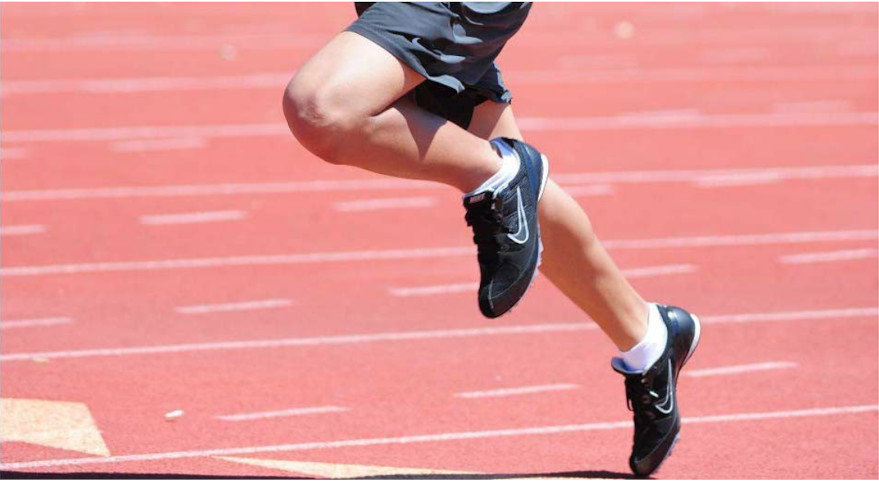
“Nike is committed to ethical and responsible manufacturing and we uphold international labor standards. We are concerned about reports of forced labor in, and connected to, the Xinjiang Uyghur Autonomous Region (XUAR). Nike does not source products from the XUAR and we have confirmed with our contract suppliers that they are not using textiles or spun yarn from the region.”
So why are statements made several months ago creating a scandal now? According to CNN, human rights groups have been accusing Beijing of detaining minority groups in the area and using them as forced labour, claiming it’s part of global retail supply chains. Recently, the U.S. and other Western countries (including Canada) have placed sanctions on China over Xinjiang, which has resulted in significant pushback from the Chinese government. Several news outlets in the country have called the allegations lies, and Chinese Communist Youth League released its own statement, saying “Spreading rumors to boycott Xinjiang cotton, while trying to make a profit in China? Wishful thinking!”
Popular Chinese e-commerce platforms have now pulled products from H&M, Nike, Adidas and several other brands from their websites, and several of the country’s celebrities are dropping their Nike and Adidas endorsements. As outrage on social media has continued to spread, several users of the popular Chinese social media app, Weibo, have posted videos of them burning their Nike shoes and other apparel, and many users have stated that they will stop buying from Nike.
Nike and Adidas are both part of the Better Cotton Initiative (BCI), the group that promotes sustainable cotton production, which suspended its approval of Xinjiang cotton in October. According to Reuters, users have also attacked the organization for its stance.
“If you boycott Xinjiang cotton, we’ll boycott you. Either Adidas quits BCI, or get out of China,” one internet user wrote.

The human rights allegations in question are the same reason why some parties are calling for a boycott of the 2022 Winter Olympics, set to take place in Beijing next year.
(03/27/2021) ⚡AMPby Running Magazine
Chris Thompson (2:10:52) and Stephanie Davis (2:27:16) Win British Olympic Marathon Trials
It has been a momentous week for veteran distance runner Chris Thompson, and it’s only Friday.
On Monday, the 39 year-old Olympian and his wife Jemma Simpson celebrated the birth of their son, Theodore, their first child. Then today, in a perfectly timed effort at the Müller British Athletics Marathon and 20km Walk Trials, he ran his way on to his second Olympic team in dramatic fashion, coming from behind to win in a personal best 2:10:52, comfortably under the Tokyo Olympics qualifying standard of 2:11:30. According to statistician Jon Mulkeen, Thompson has now made 25 British national teams since qualifying for the World Junior Championships in 1998 in the 3000-meter steeplechase.
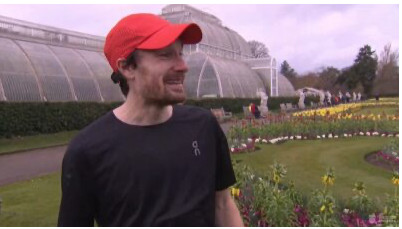
“I’ve never felt so much emotion in my life,” a teary-eyed Thompson told commentator Tim Hutchings in his post-race broadcast interview. He continued: “Everything fell into place in the last couple of laps.”
At today’s race, held in the Royal Botanic Gardens in Kew in southwest London, the top-two men and women could earn automatic selection for the Tokyo Olympics if they left the finish area with the Olympic qualifying standard under their belts. Only one man and one woman, Ben Connor and Stephanie Davis, possessed those respective standards of 2:11:30 and 2:29:30 coming into the race. So Thompson had to hit the time today, plus finish in the top-2 to gain automatic team selection.
In the first five kilometers Thompson, Connor, Dewi Griffiths and Mohamud Aadan (making his marathon debut) ran close behind the pacemakers Callum Hawkins and Jake Smith. Hawkins, who finished fourth in the 2019 World Athletics Championships Marathon, had already been pre-selected for the Olympic team and ran today to “show fitness” as required by British Athletics selectors and also to help his compatriots fulfill their Olympic dreams. Through 10-K (30:51) they were all together running at a 2:10 pace, but over the next five kilometers Thompson would drift back. The 2010 European Athletics Championships 10,000m silver medalist decided that the pace was a little too ambitious.
“After 30 minutes I realized I’d worked the course out,” Thompson explained. “Listen, you can’t keep pushing like this. The turns, everything, was just building up and I thought, I need to check back. These guys need to be in very, very good shape to keep this going.”
At the halfway mark (about 1:04:42), Thompson was about 20 seconds back. Because the Garden’s paved paths are narrow and the primary 3.3-kilometer race loop had 11 turns or bends, Thompson was hidden from his rivals. Indeed, it seemed to the broadcast audience as if he was completely out of contention.
Between 25 and 30 kilometers, the leading men only put up a sluggish 5-K split time of 15:43. Thompson was a whopping 36 seconds behind, and was still out of sight. But over the next five kilometers –after pacemaker Hawkins had dropped out at around 32 kilometers– Thompson made up that entire deficit, while Griffiths dropped back (the Welshman would finish fourth in 2:13:42). At 35-K (1:48:32) it was a three-man race and they were running at about a 2:11 pace. Thompson took stock of his position.
“I’ve either messed this up royally or it’s going to turn around very quickly,” Thompson said.
After running briefly with Connor and Aadan, Thompson left his rivals and forged ahead on his own. By the 40-kilometer mark (2:04:07) he had a commanding 44-second lead. He checked his watch a few times to make sure he was going to make the time, then in the final meters to the finish he started celebrating, nearly stopping at the finish tape as he punched his fists in joy. His official time of 2:10:52 put him well under the standard and on his second Olympic team in nine years.
“I was in dreamland,” Thompson marveled. “The last two laps, I’m like nothing’s stopping me now.”
Behind Thompson, Connor and Aadan battled for second right through the final kilometer. Connor finished a clear second in 2:12:06, and since he already had the qualifying standard from the Virgin Money London Marathon last October where he ran 2:11:20 he locked up his team spot. Aadan got third in 2:12:20, a solid debut.
“Satisfaction, relief. Whatever you want to call it,” Connor said when asked to describe his emotions He was impressed with how Thompson managed his effort today. “I could hear him breathing about ten seconds before he came by,” Connor said. He added: “Smart running from him. Fair enough.”
Women’s Race
The women’s race, which used two male pacemakers, was dominated by Scotswoman Stephanie Davis. Davis, 30, was the only woman who started today’s race in possession of the Tokyo Olympic qualifying standard (she ran 2:27:42 in Valencia in December, 2019). She ran a smart race, following the pacers closely through halfway in an honest 1:14:05. That whittled the lead pack down to five: Davis, Sarah Inglis, Natasha Cockram, Lily Partridge and Charlotte Arter (making her debut). By 25-K Davis had just a four-second lead. Over the next five kilometers that cushion mushroomed to 52 seconds and the race was over. Davis cruised to the finish in a personal best 2:27:16 booking her first Olympic team berth.
“I can’t believe it,” Davis said in her post-race broadcast interview wearing a surgical mask. “I’m smiling so much underneath this mask, and I’m just so delighted. I knew I was in good shape, but anything can happen in the marathon.”
Natasha Cockram finished second in a personal best 2:30:03, but her performance was 33 seconds outside of the minimum required time for Tokyo so she did not earn a team berth. Third place went to Rosie Edwards in 2:31:56, also a personal best. Inglis finished sixth in 2:34:09 (she had run 2:29:41 at The Marathon Project last December in Arizona), and both Lily Partridge and Charlotte Arter dropped out.
With today’s race in the books, British Athletics selectors will have to fill the other two places on the women’s team by going through the remainder of their multi-step selection process. Three women who did not race today —Jess Piasecki, Charlotte Purdue, and Steph Twell-– all have the qualifying time and could be considered for team selection.
Today’s race was the first stand-alone British Olympic Marathon Trials since 1980. The Virgin Money London Marathon, typically held in late April, is usually used as the primary selection race, but that event won’t be held in 2021 until October because of the pandemic.
Full results with 5km splits can be found here. The full race broadcast is here.
Talk about the race on the LetsRun.com messageboard.
(03/27/2021) ⚡AMPby Let’s Run
Could Running Stairs Be the Secret to More Speed and Power?
Yes, stair workouts are humbling as hell. That's why you should do them more often.
Stairs are a part of everyday life; you probably don’t think much of them as you’re hauling laundry up a flight or carrying the trash down. But if you’ve ever found yourself wheezing at the top of a set of steps (who hasn’t?), you should think about incorporating stairs into your running regimen.

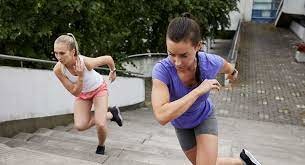
The Benefits of Stair Workouts for Runners
Stairs, like hills, up the intensity of a running workout. But the intensity of the stairs’ elevation is often harder than a gradual hill, which increases the load. Physiologically, that intensity “makes you breathe harder and faster so you can take in more oxygen, which spikes your heart rate,” says Meghan Kennihan, a USATF- and RRCA-certified running coach. Doing stair workouts consistently eventually leads to an improved VO2max, she adds, because your body learns to use oxygen more efficiently—which means faster paces will feel easier on flat ground.
Research proves this: When scientists had sedentary people vigorously climb 60 steps of stairs three times a day (with one to four hours between climbs for recovery) for six weeks, those people showed improvements in their peak oxygen uptake and peak power output in a cycling test, according to a 2019 study published in Applied Physiology, Nutrition, and Metabolism.
Speaking of power output, stairs work some of the biggest muscles in your body (think: glutes, quads, and calves. Plus, you’re working against gravity to propel yourself up the stairs, which adds resistance—a great way to build strength, says Brady Irwin, owner of and head coach at Science of Speed.
“When you push off each stair, it’s a form of explosive or plyometric training,” adds Kennihan. This kind of training builds strength and power, increasing the ability of your muscles and joints to react upon landing. It also trains your body to recruit muscle fibers more efficiently, which “means you don’t need to work as hard to hit a particular pace,” she explains. “That keeps your energy expenditure lower, so you can go faster longer without fatigue or pick up the pace mid-run without getting as winded.” (In one study published in the Journal of Sport and Health Science, two plyometrics training sessions per week over six weeks led to improved 10K times, despite a reduction in training mileage.)
Stairs can also help you dial in your running technique. “Like running uphill, stairs are a great teacher of running efficiency,” says Irwin. “They naturally require you to shorten your stride and emphasize lean angle. It’s easy to understand if you try running uphill or on stairs while landing on your heels or if you try going upstairs without leaning forward—it may be one of the most awkward things you’ve tried in some time!”

And, in an era where gym access is still limited, stairs become a playground of workout opportunities beyond just sprinting up and down. You can use them to add in other plyometric exercises, as well as variations of standard bodyweight moves, like push-ups, squats, and lunges. Considering how many runners skip strength training, this is an easy way to knock out strength and cardio in one.
How to Incorporate Stair Workouts into Your Routine
An easy way to add stair workouts is to sub them in for hill workouts. But you can also do them in place of a strength training session every so often, during the first half of an easy run, or even in the middle of a longer run.
Whenever you do them, make sure to keep your form on point—since stairs require that explosive form and a little more technique than running in a straight line, you want to be focused and engaged. “Eyes should be straight ahead, not staring down at your feet,” says Kennihan. “Lean slightly forward and pump your arms to help you drive your knees up as you lift your feet up each stair.” Only do stairs at the end of the run if you’ve still got the energy to do them right.
Pyramid Stair Workout
Warm up for 10 to 15 minutes running on flat ground
Run up and down stairs or bleachers for 2 minutes
Rest for 30 to 60 seconds
Run up and down stairs or bleachers for 3 minutes
Rest for 30 to 60 seconds
Run up and down stairs or bleachers for 4 minutes
Rest for 30 to 60 seconds
Run up and down stairs or bleachers for 3 minutes
Rest for 30 to 60 seconds
Run up and down stairs or bleachers for 2 minutes
Rest for 30 to 60 seconds
Cool down by running for 10 to 15 minutes on flat ground
Total-Body Stair Workout
Warm up for 10 to 15 minutes running on flat ground
Run up and down the stairs 5 times
Perform 10 push-ups at the bottom
Run up and down the stairs 5 times
Perform 10 triceps dips at the bottom
Run up and down the stairs 5 times
Perform 10 air squats at the bottom
Run up and down the stairs 5 times
Perform 10 full sit-ups at the bottom
Run up and down the stairs 5 times
Hold a plank for 60 seconds at the bottom
Repeat the circuit 2 times total
Cool down by running for 10 to 15 minutes on flat ground
Stability Stair Workout
Warm up for 10 to 15 minutes running on flat ground (or do this workout after a steady-state run)
Perform 3 x 30-second pick-ups (start at a jog and increase the speed until you are at a 9/10 intensity), recovering with a 1-minute walk between each rep
Do 3 x 30 single-step sprints
Do 3 x 30 double-step sprints
Do 2 x 20 single steps with lateral bounding
Do 3 x 10 double-leg jumps
Cool down by walking or jogging for 10 to 15 minutes on flat ground
Leg Burnout Bleacher Workout
After a moderate run, perform 3 x 30-second pickups (start at a jog and increase the speed until you are at a 9/10 intensity), recovering with a 1-minute walk between each rep
Do 2 sets of 4 x 40 stair sprint repeats (run up the stairs, laterally across the bleachers, and down the stairs, then walk laterally across the lower bleacher to recover)
Take 4 minutes to recover between sets
(03/27/2021) ⚡AMPby Runner’s World
Entries for Comrades Marathon virtual race open
The world’s greatest ultramarathon is all set to stage the world’s greatest virtual event with runners from around the globe invited to participate on Sunday, 14 June 2020 with FREE entry to all South African runners who entered the 2020 Comrades Marathon.
The Comrades Marathon Association (CMA) last month launched its one and only officially sanctioned virtual race, ‘Race the Comrades Legends’ which promises to be The Ultimate Virtual Race.
GET A REAL MEDAL:
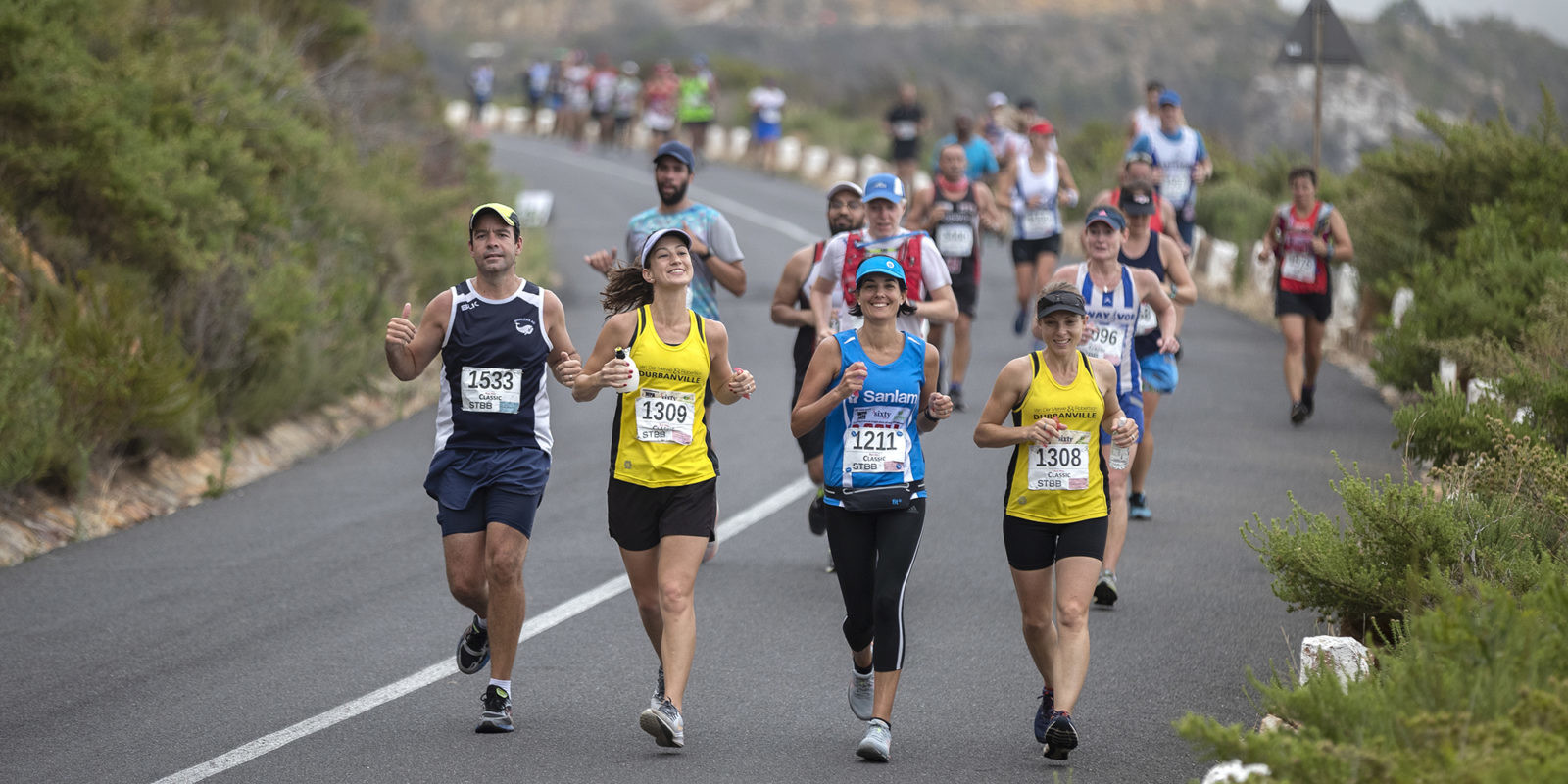
Participants who sign up for and complete the ‘Race The Comrades Legends’ are guaranteed a real finishers medal, together with the bragging rights of having completed the very first virtual event hosted by the CMA.
YOU ARE NOT ALONE:

It may seem new age to traditional Comrades Marathon runners but ‘Race the Comrades Legends’ is a great option for runners who for months have done training runs in isolation and no longer feel part of a close-knit running community. The ‘Race the Comrades Legends’ will provide a platform to engage with other runners throughout South Africa and the rest of the world as well as opportunity for family members to participate in the action, all with the reassurance of safety and convenience, while here in South Africa doing so within the constraints of the government’s National Lockdown regulations.
RACE AGAINST THE LEGENDS:
The CMA’s ‘Race The Comrades Legends’ is a running concept based on the stories of the greatest Comrades Legends in history. The official Comrades Marathon website will include an online functionality where runners can virtually compete, run with and compare with each other and the likes of Bruce Fordyce, Frith van der Merwe, Samuel Tshabalala and many others; where each participant creates their own personal story and on completion is able to earn a real medal.
CHOOSE YOUR DISTANCE - 5, 10, 21, 45 OR 90KM:
By creating an international virtual event with great public focus, based on a series of distances that various running legends have defined in their time, from the 5km to the marathon as well as the usual Comrades Marathon ultra, the CMA has effectively created a virtual mass-participation event for everyone to be a part of.
All that runners need to do is go to the Comrades website; register for ‘Race The Comrades Legends’; select their distance of 5km, 10km, 21km, 45km or 90km.
ENTER ONLINE:
The cost is R150 for South African runners and $25 for foreign athletes.
(03/26/2021) ⚡AMPComrades Marathon
Arguably the greatest ultra marathon in the world where athletes come from all over the world to combine muscle and mental strength to conquer the approx 90kilometers between the cities of Pietermaritzburg and Durban, the event owes its beginnings to the vision of one man, World War I veteran Vic Clapham. A soldier, a dreamer, who had campaigned in East...
more...The Chicago Marathon faces more competition this year to attract elite runners because of the pandemic.
Don’t expect the Bank of America Chicago Marathon to have a wide array of the world’s best runners this year.
Competition to sign them up will be fierce because the world’s six major marathons, which are normally spread across the spring and fall months, are all being scrunched into an eight-week window in September, October and November because of the pandemic.
The Boston Marathon, for instance, a race that’s traditionally held on the third Monday in April, will take place Oct. 11, the day after Chicago’s marathon.
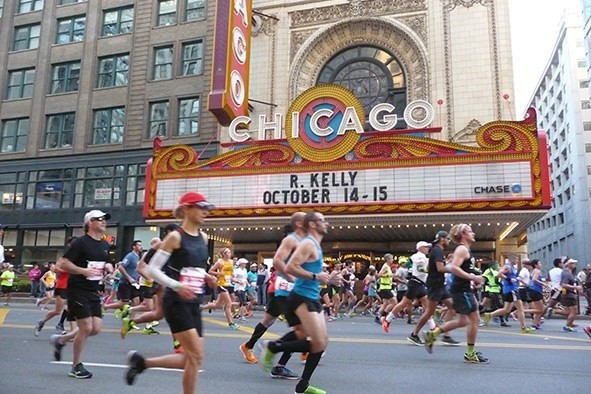
“I’m not going to say it’s not a challenge, but it gives us an opportunity to go a little deeper and find athletes who may have not had a chance in the last year or two and have them here where they may do something memorable,” said Carey Pinkowski, the longtime director of the Chicago Marathon who built the race into a world-class event.
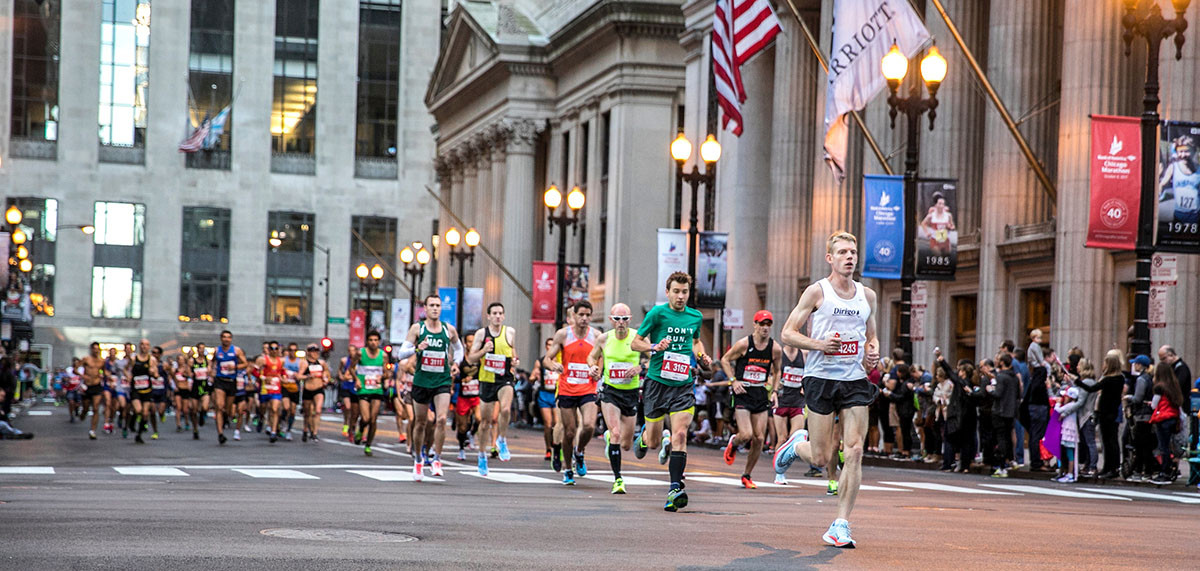
Pinkowski said he expected top athletes, many who run one marathon in the spring and one in the fall, to start deciding next month what races they’ll run.
“We’ve had some nice discussions with managers and coaches,” he said.
“You never know, we may see one of the stars we’ve seen in the past,” he said, noting the unpredictability of the pandemic that caused Chicago, along with many other cities, to cancel its marathon last year.
“This year is a transitional year, so we’ll just have to get through it,” he said. “We hope to be back to normal in 2022.”
Marathon organizers anticipate the number of non-elite runners this year to be in line with previous years.
In 2019, the last year the marathon took place in Chicago, a record 45,786 runners crossed the finish line in Grant Park.
Pinkowski cited positive developments with vaccinations taking place around the country and said there was “a great deal of optimism” for this year’s race.
(03/26/2021) ⚡AMPby Mitch Dudek
Bank of America Chicago
Running the Bank of America Chicago Marathon is the pinnacle of achievement for elite athletes and everyday runners alike. On race day, runners from all 50 states and more than 100 countries will set out to accomplish a personal dream by reaching the finish line in Grant Park. The Bank of America Chicago Marathon is known for its flat and...
more...2021 Fukuoka International Marathon will be Its final running
The prestigious Fukuoka International Open Marathon Championship will be discontinued after the 75th edition in 2021 due in part to a lack of sponsors, a source close to the matter said Friday.
The international men's marathon held in the southwest Japan city is one of the longest-running footraces in Japan. First held in 1947 in Kumamoto Prefecture, it moved to Fukuoka permanently in 1959.
The marathon has served as a qualifier for Olympics and world championships.
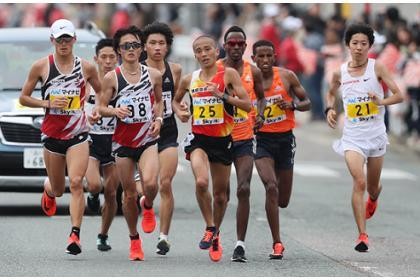
The marathon is one of six events, each one of the world's oldest footraces, that received a World Athletics heritage award in October.
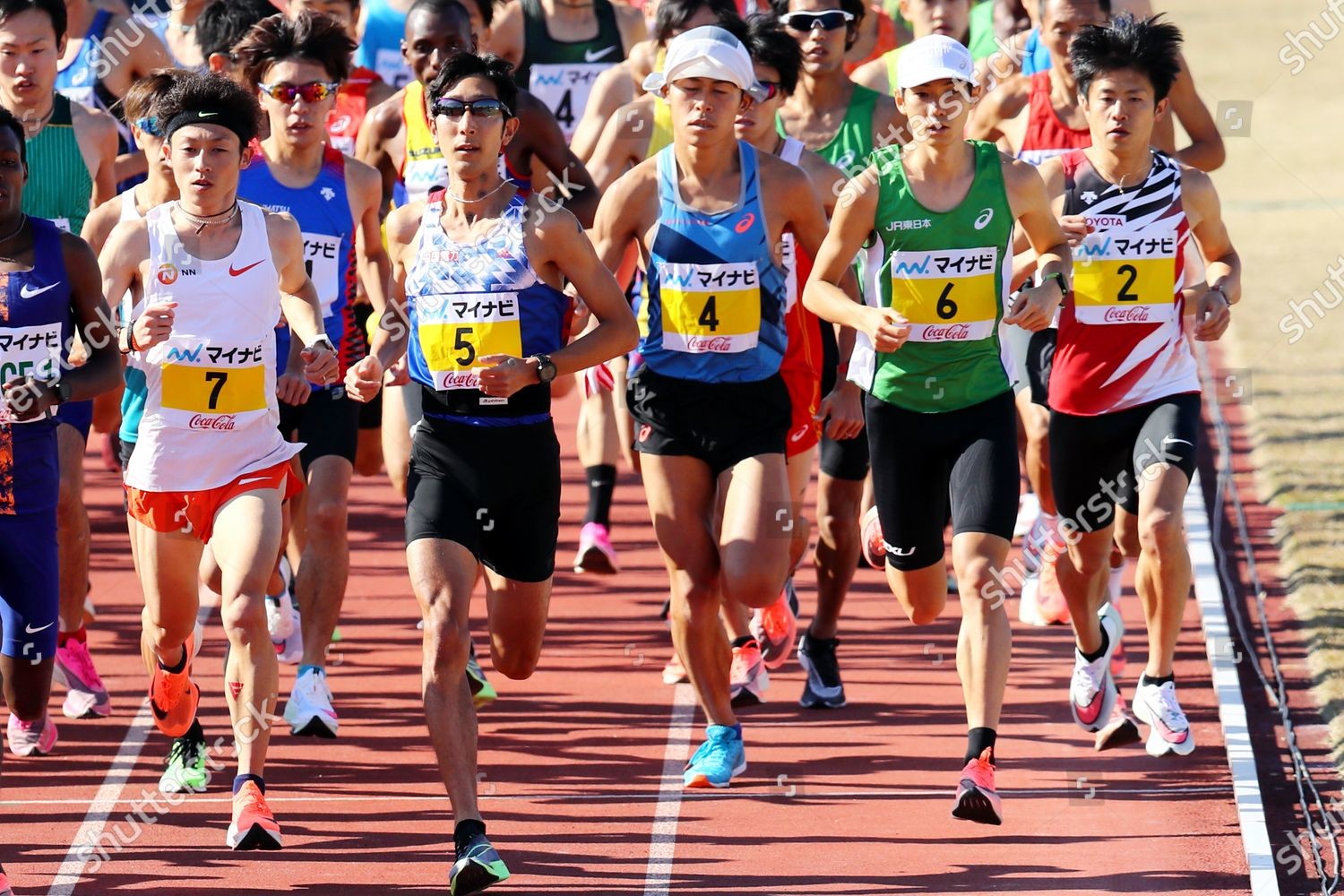
Some of Japan's greatest racing moments, including those involving Olympians Toshihiko Seko and twin athletes Shigeru So and Takeshi So in the 1970s and 1980s, have been witnessed at the Fukuoka marathon.
The Lake Biwa Mainichi Marathon, considered the oldest marathon in Japan, will be absorbed into the Osaka Marathon from 2022. It was run on the banks of the Shiga Prefecture lake for the 76th time in February.
(03/26/2021) ⚡AMPFukuoka Marathon
The Fukuoka International Open Marathon Championship is one of the longest running races in Japan, it is alsoan international men’s marathon race established in 1947. The course record is held by Tsegaye Kebede of Ethiopia, running 2:05:18 in 2009. Frank Shorter won first straight years from 1971 to 1974. Derek Clayton set the World Record here in 1967 running 2:09:37. ...
more...Differences between running on grass and running on concrete
If you live in an area with the option to run on both grass or concrete, it can be difficult to decide, especially when you don’t know the pros and cons of each.
Running on grass makes running a little more difficult due to the softer impact. Alternatively, running on concrete provides a harder impact surface, making the running process a little easier as you don’t need to put as much force into pushing away from the ground with each stride.
In this short article, we are going to talk about the pros and cons of running on grass VS running on concrete.
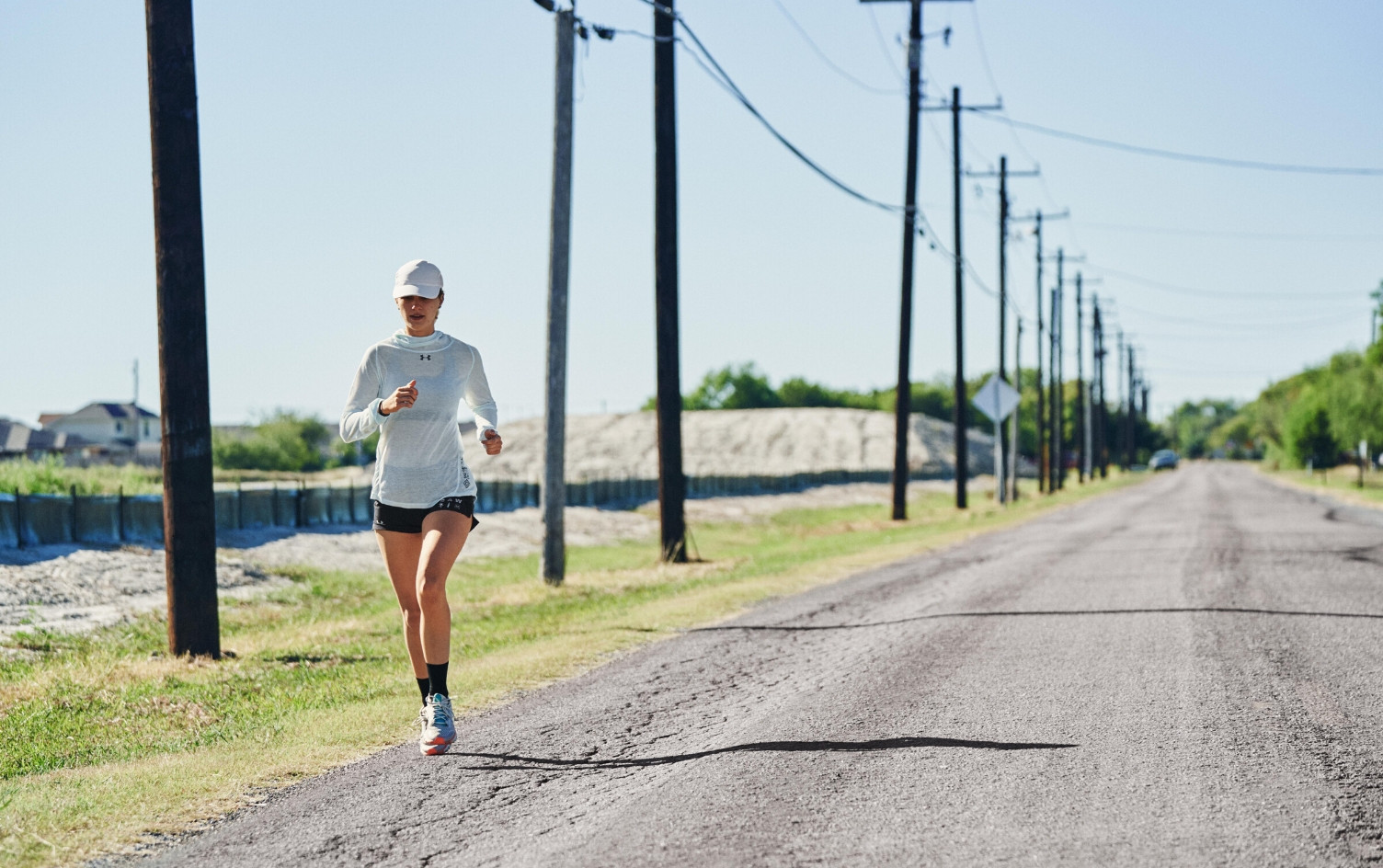
Running On Concrete

If you were to think back to all your runs, the majority of them have probably been on concrete, as this is the most common surface for runners; however that doesn’t mean it’s necessarily the best or worst way to do things, it depends on your goals and preference.
Pros
The most common benefit of running on concrete is the fact that it tends to be a lot easier, as it doesn’t require you to use as much force as you would when running on grass.
This also means you’ll be able to run faster, so don’t get discouraged if your running time is faster on concrete, as this is to be expected.
Cons
If you spend a lot of time running on concrete, it can put stress on your joints, leading to arthritis and issues later on down the road. You’re also more prone to falling over due to potholes and other debris you typically find left on the street.
Running On Grass
Running on grass is not as common as concrete; however, it’s definitely something worth considering as it comes with certain benefits. It’s also worth mentioning that it’s important to purchase the right trainers for running on grass, if you want to go down this route. There are significant differences in terms of quality requirements compared to running on concrete.
Pros
Grass is a softer surface, so you’re going to be demanding more out of your leg muscles with each step. This means you’re going to be training harder, which is great if you love a challenge.
In addition, you won’t be putting as much stress on your joints as you would with concrete, helping prevent injuries in the future.
Cons
The first problem with grass is that when it rains, it becomes slippery and can lead to you falling over. Also, it tends to be a little uneven in places, which means one leg is going to be working harder in the other, so you’ll probably get tired quicker.
This can also lead to you tripping over an uneven patch of grass. While this is bad, it’s still better than falling over on the concrete.
If you’re an experienced runner who is looking to build leg strength and challenge yourself, we recommend running on grass.
On the flip side, if you’re relatively new, it’s best to start with concrete and move onto grass once you’ve got a bit more experience.
We hope this article has shown you the differences between running on grass VS concrete. If you have any questions, drop a comment below and we will get back to you as soon as possible.
(03/26/2021) ⚡AMPby Colorado Runner
Tokyo Olympics torch relay got off to a low-key start after a year's coronavirus delay on Thursday
Tokyo Olympics flame begins journey across Japan, with fans kept away as it embarked on a four-month journey across Japan that will end at the opening ceremony on July 23.
Spectators were barred from the departure ceremony and first leg over ongoing fears about the coronavirus, which forced the 2020 Games' historic postponement a year ago.
But organizers hope the 121-day relay, which will criss-cross Japan and involve 10,000 runners, will build excitement and enthusiasm as doubts persist about holding the Games safely.

Tokyo 2020 chief Seiko Hashimoto said the flame was "a ray of light at the end of the darkness".
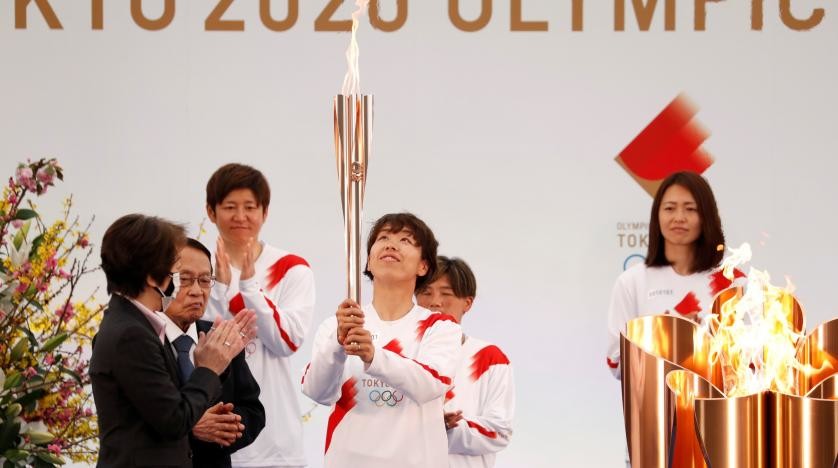
"This little flame never lost hope and it waited for this day like a cherry blossom bud just about to bloom," she told the ceremony at the J-Village sports complex in Fukushima, the former operations base for the 2011 nuclear disaster.
Azusa Iwashimizu, one of Japan's 2011 World Cup-winning women's footballers, was the first to carry the rose-gold, cherry blossom-shaped torch, accompanied by former teammates.
Iwashimizu then passed the flame to the next runner, Fukushima high school student Asato Owada, who was wearing the same torchbearer's uniform of white tracksuit with a red diagonal stripe.
A handful of fans, wearing the compulsory masks, watched the relay's second section, but clicking cameras were the loudest sound. Cheering and large crowds are banned at the relay, to prevent virus infections.
"I think it somewhat lacks excitement because there are rules," spectator Tetsuya Ozawa told AFP.
The torch will take a circuitous route, first heading south to the islands of Okinawa before reversing course for the northern region of Hokkaido and finally back to Tokyo.
But there are still challenges ahead for organizers. Several dozen torchbearers have dropped out, citing issues including scheduling conflicts and concerns about the coronavirus.
(03/25/2021) ⚡AMPby AFP
Tokyo 2020 Olympic Games
Fifty-six years after having organized the Olympic Games, the Japanese capital will be hosting a Summer edition for the second time, originally scheduled from July 24 to August 9, 2020, the games were postponed due to coronavirus outbreak, the postponed Tokyo Olympics will be held from July 23 to August 8 in 2021, according to the International Olympic Committee decision. ...
more...Duluth´s Lakewalk to reopen by Grandma’s Marathon
Duluth has finished reconstructing the boardwalk portion of its popular Lakewalk, but people should not be tempted to use the fenced-off stretch of path running toward Canal Park quite yet, warned Mike LeBeau, construction project manager.
“That section of the Lakewalk remains a construction site that’s closed to the public. We need people to stay off it and stay safe,” he said.
Favorable weather has enabled crews to make quicker progress on the project than anticipated, and LeBeau referred to the work as “probably about 95% done.” But he said grading, landscaping and the installation of a paved asphalt path for wheeled traffic still awaits.
LeBeau said the project is fully on track to meet the goal of reopening before Grandma’s Marathon, June 19.

The Lakewalk was badly damaged by back-to-back storms that undermined the path, leaving holes in it up to 3 feet deep after an October 2018 battering.
Since then, more than $16 million has been invested in efforts to bolster the shoreline and rebuild a path through Canal Park that would be less susceptible to future damage. A combination of state, federal and local funding have all been brought to bear on this Phase 3 of the restoration project.

To lessen the pounding the Lakewalk receives from storms, LeBeau described the revetment that has been installed, beginning with 10- to 12-ton toe stones, many of them the size of an automobile, that were dug into the lake bottom roughly 30 feet from the water’s edge. These base reinforcements then were backfilled toward shore with what LeBeau described as filter stone and core stone topped by two layers of armor stone.
Finally, an 18-inch-thick concrete wall was installed, with the top lip of that structure sitting about 2 feet above the surface of the newly constructed Lakewalk.
The Lakewalk, too, has been elevated about 3 feet above its original level.
“We know that waves will still break over the top in really big storms. But it’s a matter of protecting the Lakewalk, so the wave energy won’t undermine it again,” LeBeau said.
In addition to building a more resilient Lakewalk, the city is significantly enlarging it. The original 6-foot width of the boardwalk will grow to 10 feet, and the paved trail will go from 7 to 12 feet wide.
LeBeau explained that the city enlarged the Lakewalk in recognition of its current popularity and in anticipation that the volume of users it accommodates will continue to grow.
(03/25/2021) ⚡AMPby Peter Passi
Grandmas Marathon
Grandma's Marathon began in 1977 when a group of local runners planned a scenic road race from Two Harbors to Duluth, Minnesota. There were just 150 participants that year, but organizers knew they had discovered something special. The marathon received its name from the Duluth-based group of famous Grandma's restaurants, its first major sponsor. The level of sponsorship with the...
more...The most effective ways to burn fat while running
Are you looking to shed more fat on your next morning jog but aren’t sure how? While running is a great calorie burner on its own, there are a few ways you can tweak your cardio workout to maximize your fat-burning potential while staying fit. With these tricks, you can become the ultimate fat-burning machine that will help you reach your goal weight in no time.
Reduce Snacking Before Workouts
It’s easy to get carried away with carbo-loading before an endurance run. Carbo-loading is the perfect way to fuel your body before a workout, but if you overeat, you won’t be able to burn enough fat. Only carbo-load excessively before a marathon to boost your energy but keep as many calories off your plate as possible to avoid belly bloat and weight gain. On average, runners who have a pre-training snack are more likely to display lower levels of fat metabolism. Eat something in the middle of your run to keep your metabolism in working order.
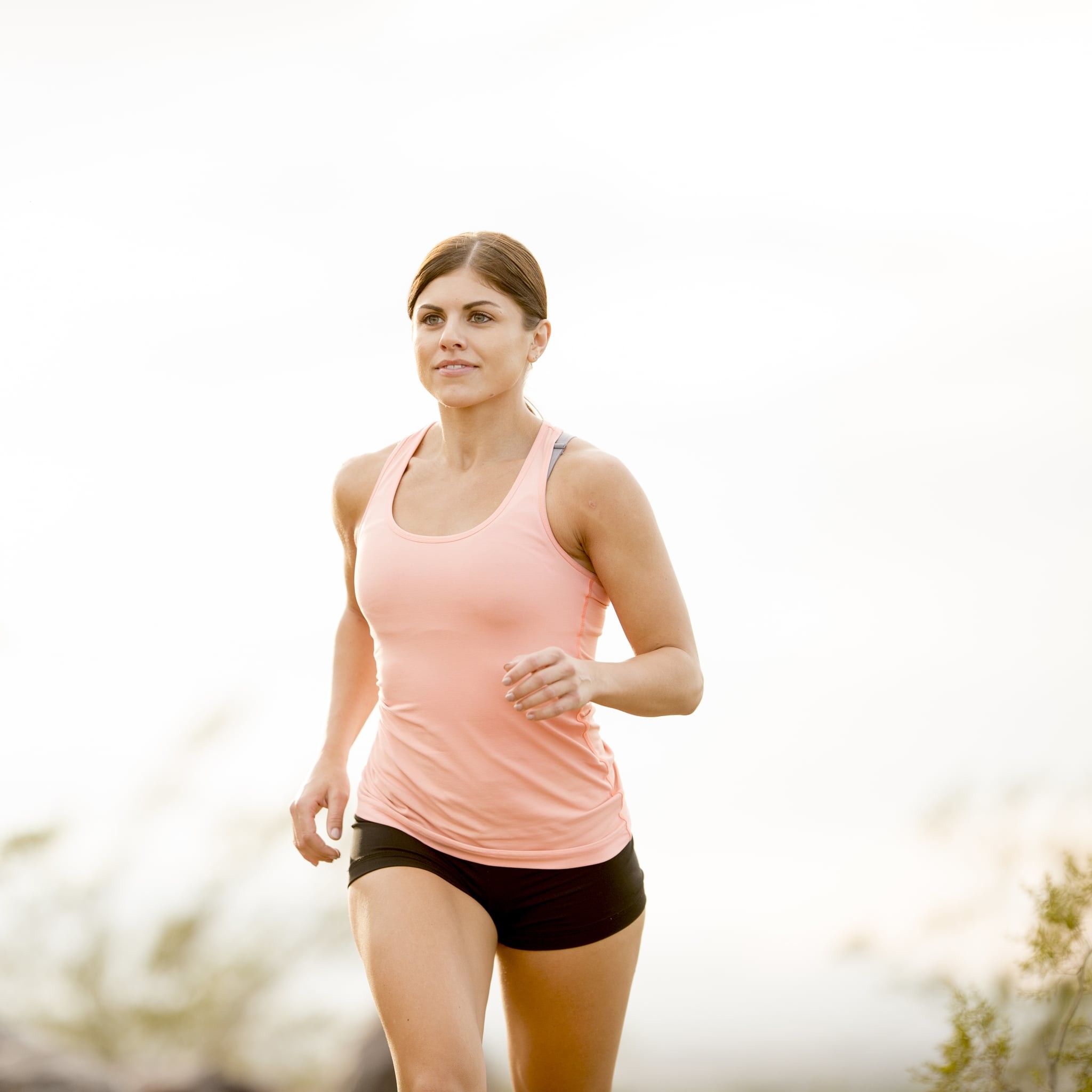
Use Fat Burning Supplements
With fat-burning supplements, it’s possible to eat reasonable portions while still shedding unwanted pounds. Specific vitamins and nutrients can shift your body from fat-storage mode into fat-melting mode. For example, a vitamin D supplement helps to ensure body cells respond to insulin, which pushes glucose into the cells. A calcium, omega-3, and CLA supplement will help you shed fat faster. Thermogenic fat burners found on Amazon can also support healthy weight loss, especially if they contain the energy-boosting ingredient L-carnitine.
Focus on Running Uphill
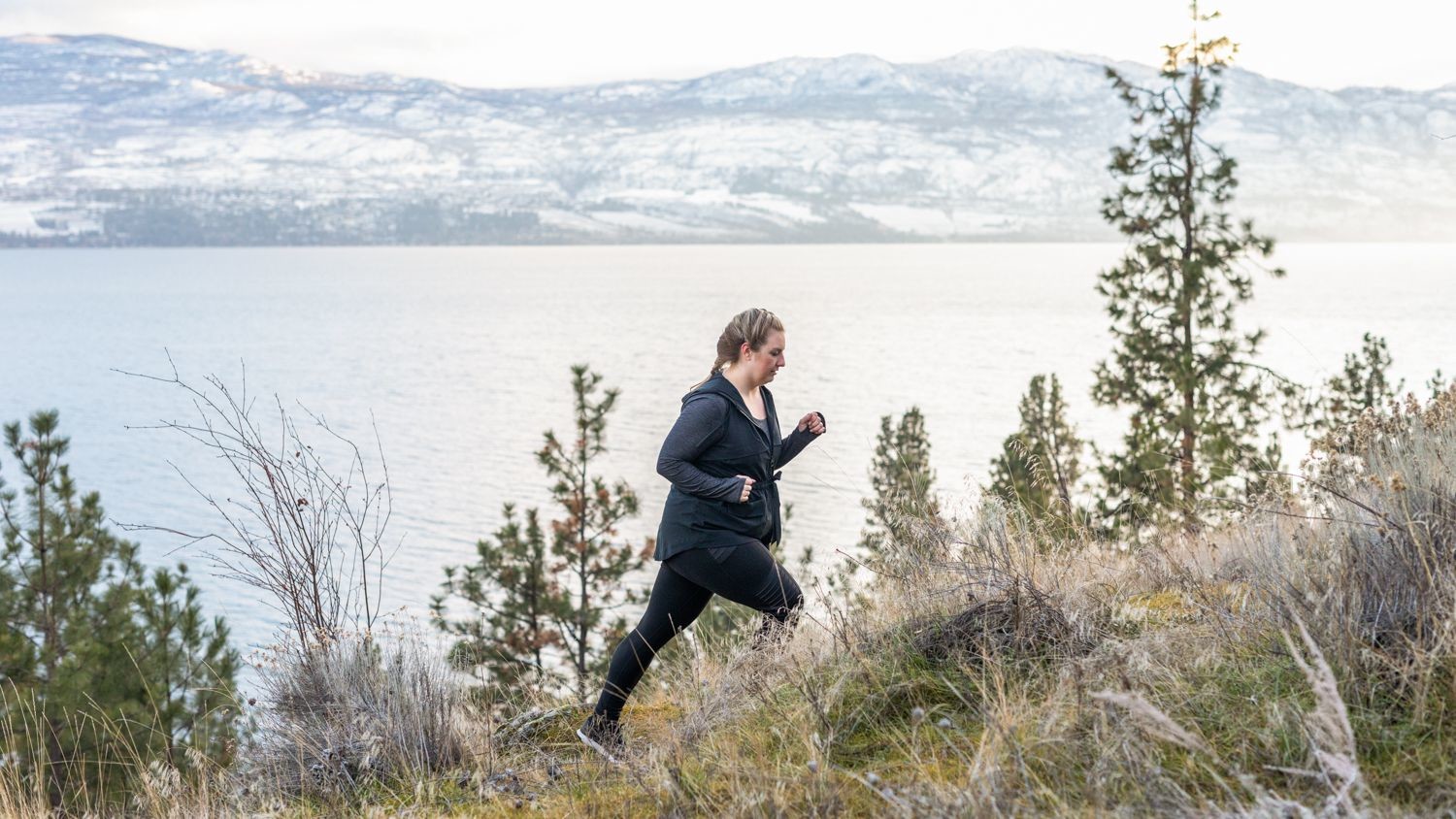
Runners typically jog on flat surfaces because they’re easy to find and simple to train on. However, if you give yourself a bit more of a challenge and run uphill, you’ll quickly notice the benefits of hill training. You’ll feel exhausted at a faster rate than on a flat surface, which is good news for your waistline. Running up a steep hill will land you in the fat-burning zone and increase overall performance in future runs, but be careful not to overexert yourself. After running up the hill, go back down to its base to rest before continuing your workout.
Try High-Intensity Interval Training (HIIT)
High-intensity interval training is a form of exercising that involves getting your heart rate to 90% of its maximum beats per minute. Through HIIT training, runners can instantly propel themselves into the fat-burning zone for a few minutes at a time. To do this, run as fast as you can for 1-2 minutes. Then, slow down to a jog, so your heart rate has the time to stabilize. Since your heart rate spiked quickly, your body’s working overtime to bring it back down. Regulating a quickening heart rate burns significantly more calories in 30 minutes than straight endurance jogging.
Resistance Training
The amount of weight you lose during a workout is directly tied to what you do before you start exercising. Strength or resistance training will improve muscle endurance and strength, but it also helps to burn more calories during a second workout and at rest. Runners with a low resting heart rate have a built-in fat furnace because their muscles require a lot of energy and calories to stay large. Creating a resistance training routine will benefit your overall fitness as well, so start lifting weights and performing squats to burn more fat.
Track Eating Habits
When you start to work out, you tend to consume more calories than you expect. Exercising multiple times a week will put you in a calorie deficit, which sets off an alarm in the part of your brain that regulates hunger. To stay on top of your eating habits, write down everything you eat inside a journal or on your phone. After the first week, examine where the bulk of your calories are coming from. Are you eating more junk food than you realized? Do mornings start well but end in a binge at night? Locate the possible problems of your diet and tackle them quickly.
(03/25/2021) ⚡AMPby Colorado Runner
Welsh runner Natasha Cockram has Tokyo in her sights
Cockram won British marathon title in October despite an ankle injury but now goes into Friday’s Olympic trials fully fit
Six months ago Natasha Cockram endured an injury-hit build-up to the Virgin Money London Marathon but still finished first British woman home.
Struggling with an ankle injury, she only managed two training runs of eight and five miles in the final three weeks before the race plus, of course, plenty of cross-training. Yet on that damp, cool morning in the British capital she overtook Naomi Mitchell in the closing stages to take the national title in 2:33:19.
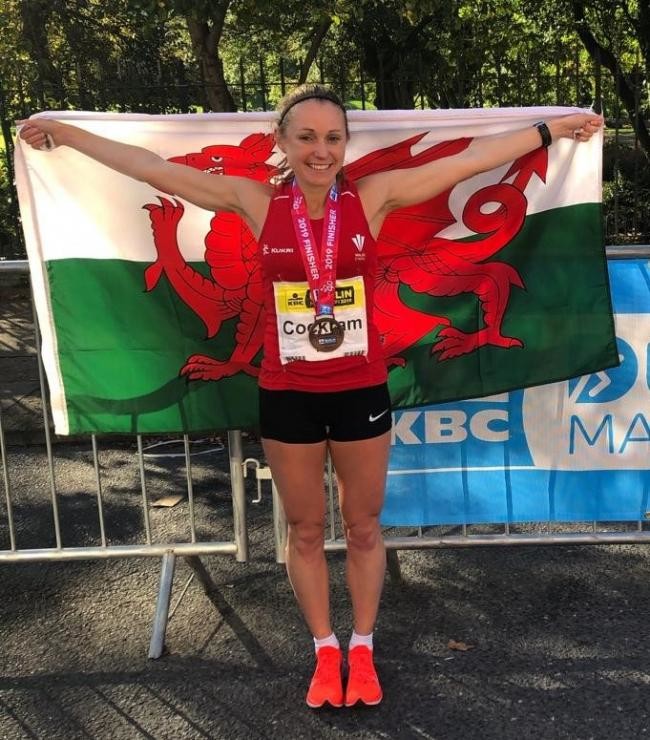
The 28-year-old has enjoyed a much better build-up to the British Olympic marathon trials in Kew Gardens on Friday (March 26), though, which makes her one of the leading contenders for Olympic selection.
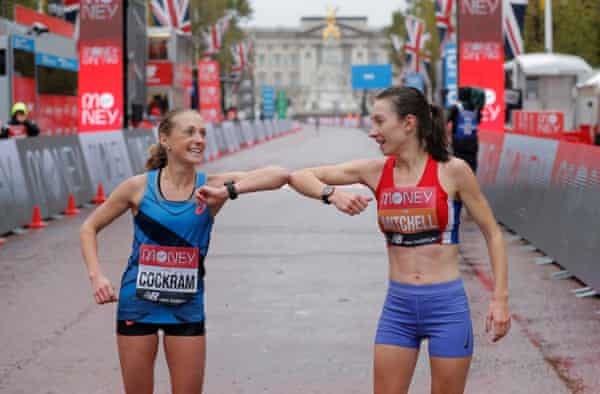
“It’s been a lot smoother than London,” she told AW this week on her preparations for Friday’s big event. “For quite a few weeks after London (last October) I was just focusing getting healthy again.
“But now I’ve got in all the work I wanted to and have had some good consistency. I’m injury free which is the hardest part coming into a race.”
Cockram was a teenage talent who won multiple Welsh titles and the British under-17 indoor 1500m title before going off the boil for a spell until eventually finding her niche in the marathon.
From 2012-15 she studied at Tulsa University in Oklahoma but emerged with a knee injury that was so bad that medics told her “to reconsider her career choice” because running seriously was out of the question.
“I went from 40 miles a week (as a teenager in Wales) to instantly up to 100 miles a week when I went out there and I was constantly burned out and didn’t really perform,” she remembers.
On returning to the UK she realised she needed an operation. “Luckily I had (health) insurance back in the States so I went back there and had knee surgery, which put me out for a year, then I came back just to keep fit initially,” she says.
“I pretty much gave up running after university and then started up again just for fun and did a few mountain running races. But I began training more and in 2017 I ran 2:49 for the marathon in Dublin then 2:45 in Newport in 2018 off cross training. Then I ran 2:35 in Dublin later that year after getting a coach and training more seriously.”
Cockram has been guided by Texas-based coach Tony Houchin for the past four years and the relationship is working. In Dublin in October 2019 she broke Susan Tooby’s long-standing Welsh marathon record with 2:30:49 despite running with a large bruise on her leg after her horse kicked her on the eve of the race.
That performance armed her with the belief that she could beat the Olympic qualifying time of 2:29:30. Conditions in London did not allow it last October but she remains confident she can do it this week at Kew Gardens.
“As a child I wanted to go to the Olympics but I don’t think it was a realistic view back then. Even at university it wasn’t realistic and even going to the Commonwealths didn’t seem realistic back then,” she says.
(03/25/2021) ⚡AMPby Jason Henderson
Tokyo 2020 Olympic Games
Fifty-six years after having organized the Olympic Games, the Japanese capital will be hosting a Summer edition for the second time, originally scheduled from July 24 to August 9, 2020, the games were postponed due to coronavirus outbreak, the postponed Tokyo Olympics will be held from July 23 to August 8 in 2021, according to the International Olympic Committee decision. ...
more...Dave McGillivray will be honored with the Third Lantern Award
Dave McGillivray, president of DMSE Sports and long-time race director of the B.A.A. Boston Marathon, will be honored at Lantern2021 and he will deliver the keynote address. This is the Old North Church & Historic Site’s re-imagined and virtual Lantern Ceremony that will be held on Sunday, April 18, at 7 p.m. The annual event commemorates the 246th anniversary of Old North Church’s fateful lantern signals and Paul Revere’s ride. This one-of-a-kind experience is an uplifting and enduring event that supports the Old North Church & Historic Site’s virtual and on-site programs that aim to inspire children and adults alike to consider the ways they can build a more just and equitable world.
Old North Church, built in 1723, is Boston’s oldest standing church and one of the most famous churches in the United States. The iconic fame of the Old North Church began on the evening of April 18, 1775, when church sexton Robert Newman and vestryman Capt. John Pulling, Jr. climbed the steeple and held high two lanterns as a signal from Paul Revere that the British were marching to Lexington and Concord by sea across the Charles River and Revere embarked on his journey. That fateful night ignited the American Revolution. Educational programs, tourism operations, and preservation of Old North Church & Historic Site are managed by the Old North Foundation, a secular 501(c)3 organization; the church is also a mission of the Episcopal Diocese of Massachusetts.
Lantern2021 will be an uplifting evening featuring original music from singer-songwriter Ryan Ahlwardt (formerly of Straight No Chaser). The night will also include a spirited performance of the poem "Paul Revere's Ride" and reflections on the role of active citizenship in the ongoing struggle for justice and equity. The event concludes with the ceremonial lighting and hanging of the two lanterns in the iconic steeple as a beacon of freedom and justice.
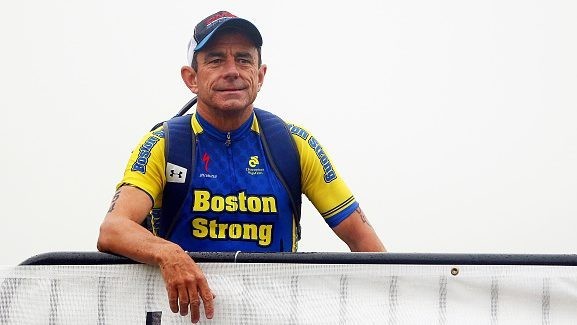
“I’ve received a few awards in my lifetime but this one is really special,” said McGillivray. “Knowing all those who have been a recipient of the award or who have spoken at the ceremony in the past, I am humbled and touched by this true honor.”
Previous recipients of the award include Senator Ed Markey, Governor Charlie Baker, Mayor Marty Walsh and Representative Lori Trahan, among other luminaries. President Gerald Ford spoke at Old North Church in 1975 for the U.S. Bicentennial Celebration.

“Dave’s tenacious commitment to community building and his lifelong drive to create positive change embody the values of the Old North Church & Historic Site and light the way for others to actively engage in their communities,” said Nikki Stewart, Executive Director of the Old North Foundation. “Whether through art, activism, volunteering, philanthropy – we all have the power to hang lanterns that ignite change.”
Although McGillivray is best known as the race director of the B.A.A. Boston Marathon, he and his company, DMSE Sports have directed many of the country’s most prestigious races. Recently, McGillivray’s unique set of skills and experience led to his appointment managing logistics for mass vaccination sites at Gillette Stadium, Fenway Park, the Reggie Lewis Center and the Hynes Convention Center. Dave is an athlete, businessman, and philanthropist who embodies Old North’s core value of active citizenship. At Lantern2021, Dave will share his personal journey and inspire us to “hang a lantern” in our communities.
Lantern2021 is a virtual family-friendly event that will celebrate the heroic actions of April 18, 1775 and Old North’s legacy of active citizenship.
McGillivray will be introduced as the keynote speaker by Governor Charlie Baker. In his videotaped remarks, Governor Baker said, “Long before the pandemic, and over the course of the last year, Dave McGillivray has proven time and again to be a shining example of the spirit of service to others. Dave is a man of many talents and he's shared them readily in support of his community and the entire Commonwealth.”
(03/24/2021) ⚡AMPShanghai Half Marathon is set for April 18
The 2021 Shanghai Half Marathon, featuring 6,000 runners, has been scheduled for April 18, organizers announced on Wednesday.
The 21-kilometer routes starts from Fenghe Road, close to the Oriental Pearl TV Tower in the Pudong New Area. Runners will go past the 2010 World Expo site and the riverside New Bund Leisure Park before reaching the finish line at the Shanghai Oriental Sports Center.
The annual event was canceled last year due to the COVID-19 pandemic. Making a return, the event this year will not invite elite runners from overseas, but foreign runners meeting health requirements are welcome.
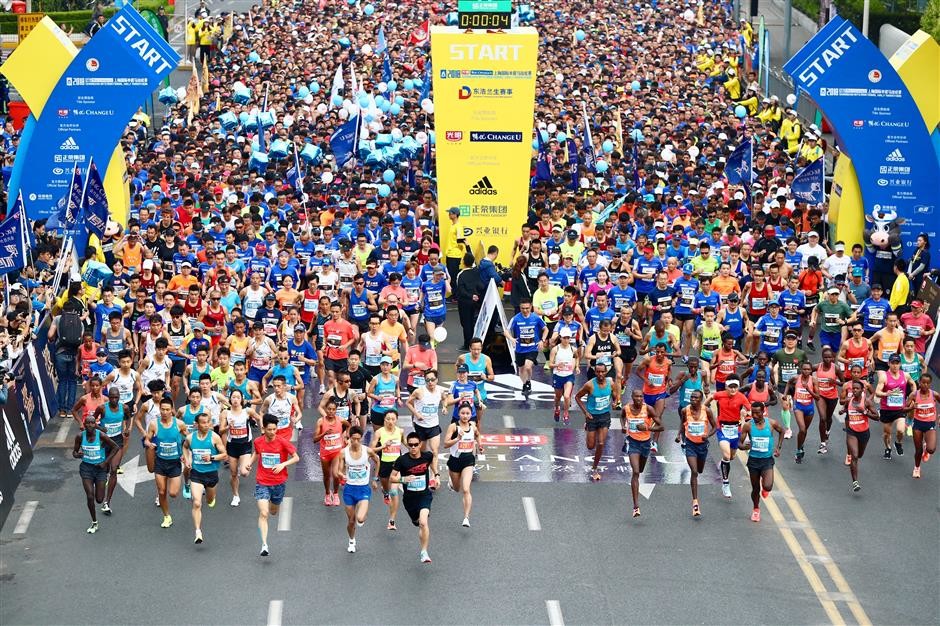
Those interested can log on to the official website (www.shang-ma.com) before March 26 noon for registration. A draw will be held to distribute quotas, and the result will be announced on March 30. The entry fee is 160 yuan (US$24.5).
All runners and front-line staff are required to hand in nucleic acid test reports taken within seven days ahead of the event. Fifteen ambulances and 21 medical spots will be arranged along the route, with water and snack supply stations set up every 5km.
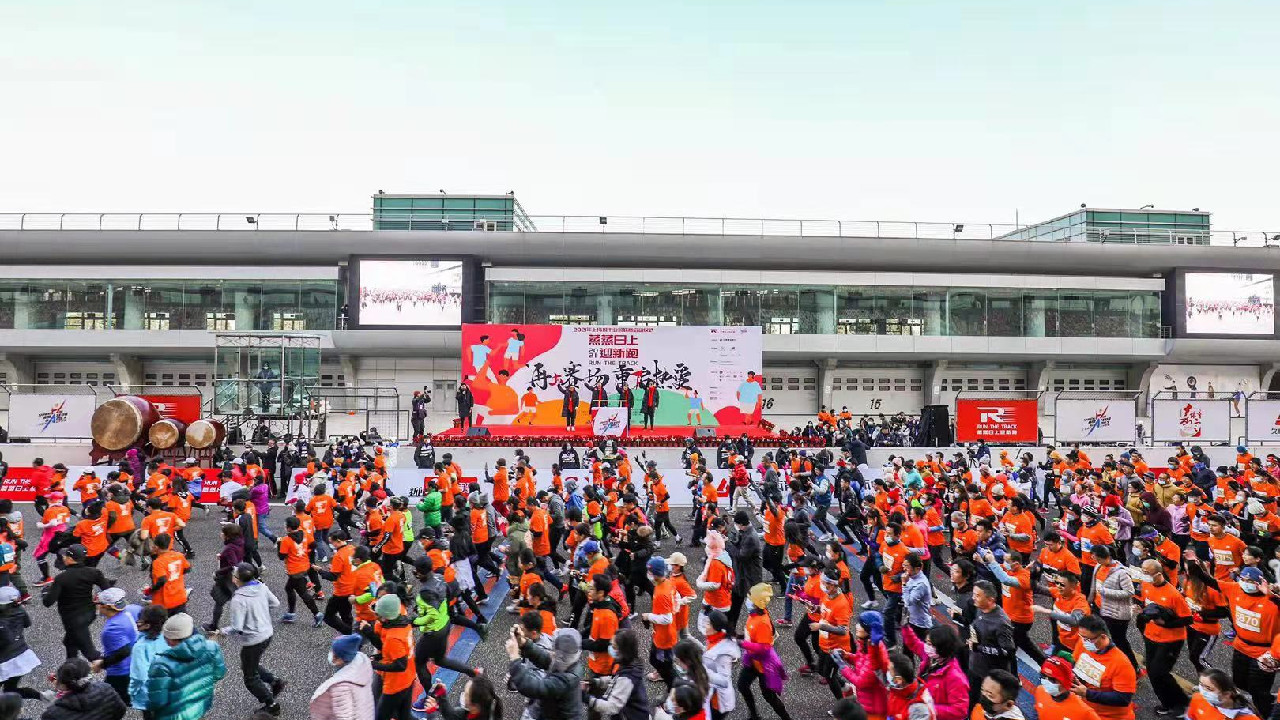
The top three men and women finishers will win 50,000 yuan (US$7,785), 30,000 yuan and 20,000 yuan, respectively. The first 200 male and 100 female finishers will also win quotas for the 2021 Shanghai Marathon, which will be held in the second half of the year.
(03/24/2021) ⚡AMPby Ma Yue
Shanghai International Marathon
Shanghai International Marathon has established itself as the marquee running event on China’s Marathon calendar. Every November, tens of thousand participants run passing the many historical places of this city such as Bund Bull, Customs House, Shanghai Museum, Shanghai Grand Theater, Shanghai Exhibition center, Jing’an Temple, Nan Pu Bridge, Lu Pu Bridge, Long Hua Temple, Shanghai Stadium. The course records...
more...New Zealand Olympians to get early access to Covid-19 vaccine
Olympic athletes eligible to jump the queue for Covid-19 vaccine on compassionate grounds or to compete in events of "national significance", says New Zealand's minister responsible for response to coronavirus.
Athletes representing New Zealand at the Tokyo Olympics later this year will be able to apply to be vaccinated against COVID-19 before they depart.
Chris Hipkins, the minister responsible for New Zealand's response to the global health crisis, said people would be eligible to jump the queue for the vaccine on compassionate grounds or to compete in events of "national significance".
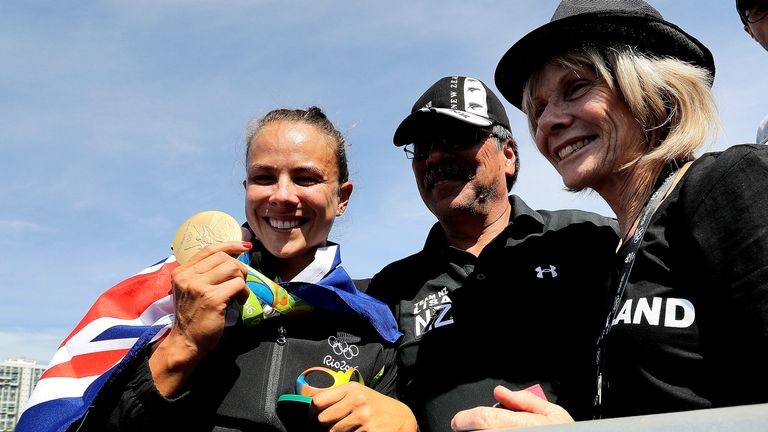
The latter category would include Olympians, Paralympians and the national cricket team, who will be travelling to Britain to play India in the final of the ICC World Test Championship in June.
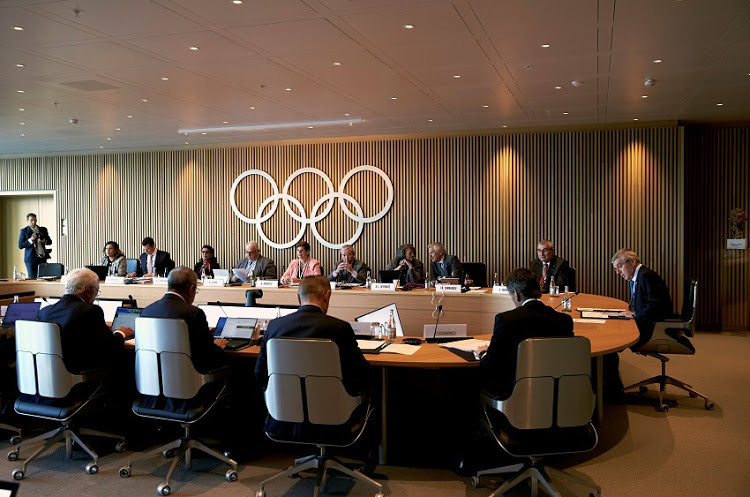
"The key yardstick here is people travelling in an official capacity and ensuring their participation is in our national interest," Hipkins told reporters.
"They will have to make an application and it will depend on what sort of events they are participating in, to whether they fit the national interest criteria.
New Zealand has been one of the most successful countries at containing the virus and started the second round of its vaccine rollout for border and quarantine workers last week.
New Zealand Olympic Committee (NZOC) secretary-general Kereyn Smith, who had lobbied for Olympians to be vaccinated early, said the announcement would be a relief to many athletes who were "hanging on the edge of their seats".
"It's not mandatory but we feel it's a very positive and important step in keeping our athletes safe," she told Radio New Zealand.
(03/24/2021) ⚡AMPby Reuters
Tokyo 2020 Olympic Games
Fifty-six years after having organized the Olympic Games, the Japanese capital will be hosting a Summer edition for the second time, originally scheduled from July 24 to August 9, 2020, the games were postponed due to coronavirus outbreak, the postponed Tokyo Olympics will be held from July 23 to August 8 in 2021, according to the International Olympic Committee decision. ...
more...Covid-Safe Medtronic Twin Cities Marathon Planned for October 3
The 2021 Medtronic Twin Cities Marathon is scheduled to take place as a reduced-size, COVID-safe event on Sunday, October 3, race organizer Twin Cities In Motion announced. The race, which was cancelled last year due to the pandemic, will limit marathon participation to 4000 runners, and COVID-safety measures will be in place throughout the event.
Registration for the 2021 marathon and other Medtronic Twin Cities Marathon Weekend events will open on Thursday, April 8. The marathon race runs from downtown Minneapolis to the State Capitol grounds in St. Paul.
“We’re optimistic about our ability to host an in-person event this fall,” Twin Cities In Motion Executive Director Virginia Brophy Achman said. “Our team has consulted medical and crowd science experts and worked closely with relevant public agencies to get to this point. That work will continue until race day as we properly calibrate the event to this fall’s public health situation.”
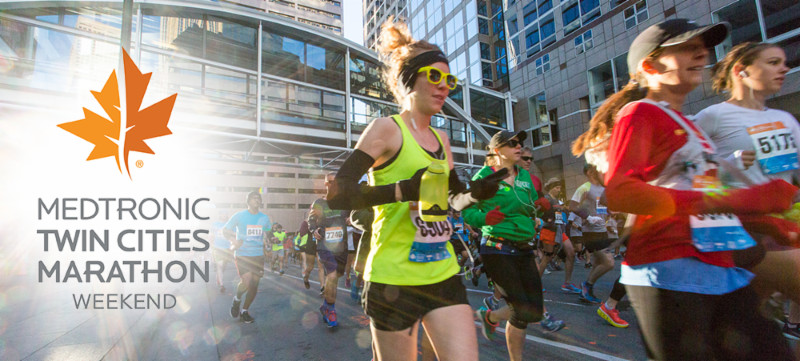
Participants can expect to see changes in the event from previous editions. While plans will be modified to match conditions later in the year, Twin Cities In Motion is telling participants to expect:
• Reduced field sizes in all marathon weekend races
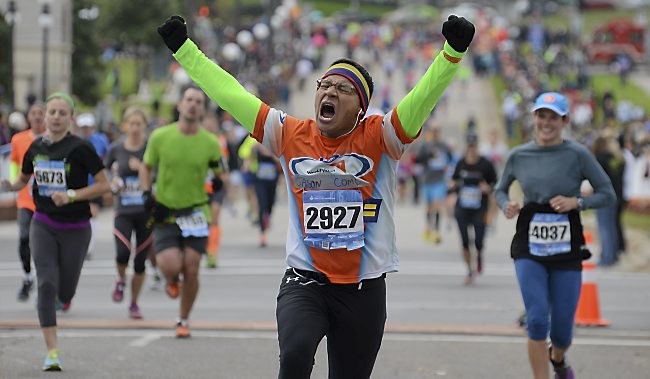
• Mask-wearing requirements except while racing
• Social distancing requirements across the event weekend
• Spectating discouraged and spectator access limited in certain areas
• Reduced touchpoints when possible
“While there will be noticeable differences from pre-COVID days,” Brophy Achman said, “we plan to do all we can to maintain the spirit and energy of the event despite the constraints. The power of the event lies in the thousands of personal achievements that culminate at our finish line, and we’re excited to return those moments to our participants’ lives after all they’ve endured.”
The return of the event to streets of Minneapolis and St. Paul will also reestablish an important fundraising platform for dozens of local nonprofits who use the marathon to raise money and awareness of their organizations. Runners raised more than $1 million at the last in-person edition of the race in 2019.
“The TCM team is pleased to be preparing for an in-person race, because it’s the work we love to do,” Twin Cities In Motion President Dean Orton said.
“But we know the event is an important annual event in our community and we’re excited to be bringing back all the meaningful elements marathon weekend offers – from youth fitness to volunteer opportunities, from economic impact to the unique fundraising platform we offer.”
Registration for the marathon will be conducted online through the Twin Cities In Motion website, tcmevents.org, beginning at 10:00 a.m. CDT on April 8. Registration will also open for the following Medtronic Twin Cities Marathon Weekend events:
• Medtronic TC Family Events
• TC 5K, presented by Fredrikson & Byron P. A.
• TC 10K
Those events take place at the State Capitol grounds on Saturday, October 2. Registration will also open for the TC Loony and TC Ultra Loony Challenges – where runners participate in the TC 5K and TC 10K prior to running either the 10 mile or marathon the following day. The registration drawing for the Medtronic TC 10 Mile held on October 3 will be open in mid-summer.
More than 25,000 runners participated in the 2019 Medtronic Twin Cities Marathon Weekend, including more than 7,000 marathoners and more than 13,000 10 milers.
(03/24/2021) ⚡AMPMedtronic TC 10 Mile
Twin Cities In Motion originated in a grassroots effort to bring the energy and positivity of a community-wide running event to Minneapolis and St. Paul. From the first strides of the inaugural Twin Cities Marathon in 1982 through a rich history that saw the addition of events and programming to serve the community, TCM has inspired and empowered the Twin...
more...The most remarkable line-up has been announced for Istanbul Half Marathon
Organizers of the N Kolay Istanbul Half Marathon have announced the most remarkable line-up in the history of this World Athletics Elite Label road race, to be held on 4 April.
Having staged a successful edition under intense measures against Covid-19 in September last year, the event is now set to host a limited number of 4000 participants on its traditional date of the first Sunday of April.
The race will see the long-awaited clash of the reigning and former world record-holders over the distance. Kibiwott Kandie of Kenya, now the world’s fastest half-marathon runner, improved the time set by his compatriot Geoffrey Kamworor in Valencia in December, bringing down the world record to 57:32 from 58:01. Kamworor, who has three World Athletics Half Marathon Championships gold medals under his belt, will be back on the roads following his recovery from surgery after he was hit by a motorcycle in June last year.
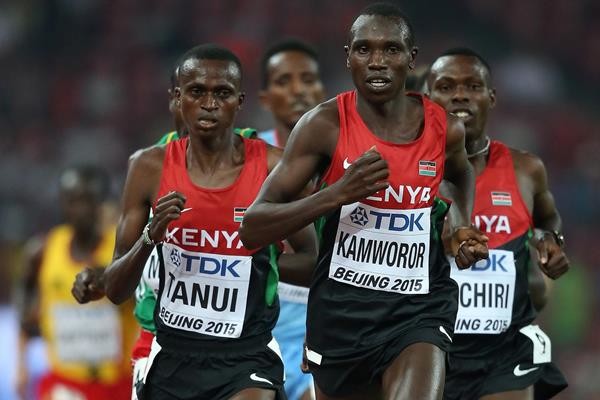
The two Kenyans will be joined by two sub-59 minute runners in Amedework Walelegn of Ethiopia, the Istanbul Half Marathon record-holder who won in 59:50 in 2018, and Uganda's Stephen Kissa, who made his debut over the distance in February 2020 and finished the year with a time of 58:56. Kenya’s Leonard Barsoton, sixth at the World Athletics Half Marathon Championships in Gdynia last year, will also be one of the fastest athletes on the start line.
Home hopes in Istanbul will be led by Kaan Kigen Ozbilen, who holds the national record with 59:48. Aras Kaya, European cross country champion in 2019, will also be a strong contender in the event that incorporates the National Half Marathon Championships.
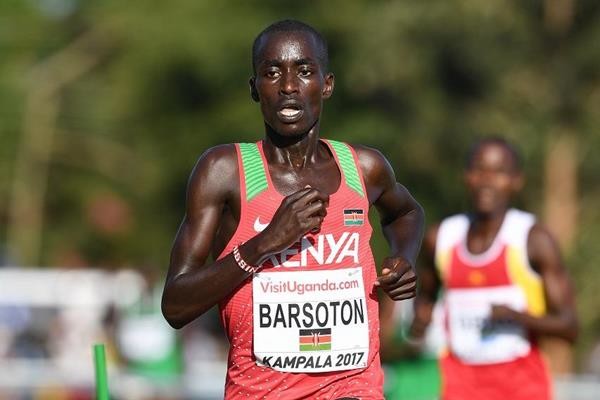
The women’s field is equally as strong. Kenya’s marathon world record-holder Brigid Kosgei and the women-only half-marathon world record-holder Peres Jepchirchir, plus the second fastest female half-marathon runner of all time Yalemzerf Yehualaw of Ethiopia, will head the line-up.
Kenyan Ruth Chepngetich, the race record-holder and the reigning world marathon champion, will be a co-favorite in the race along with Joan Chelimo Melly.
The European women-only record-holder Melat Kejeta from Germany will also be on the start line on 4 April. The home crowd expects Kejeta’s record to be challenged by Yasemin Can.
Kamworor, Kandie, Kosgei and Yehualaw had been among the athletes set to race at the Ras Al Khamimah Half Marathon in February before it was cancelled due to the pandemic.
(03/24/2021) ⚡AMPby World Athletics
N Kolay Istanbul Half Marathon
The Istanbul Half Marathon is an annual road running event over the half marathon distance (21.1 km) that takes place usually in the spring on the streets of Istanbul, Turkey. It is a IAAF Gold Label event. The Istanbul Half Marathon was first organized in 1987. After several breaks it was finally brought back to life in 2015 when the...
more...Karla Del Grande, 67, has been named female athlete of the decade by World Masters Athletics
Toronto’s Karla Del Grande, a 67-year-old sprinter with multiple masters world records to her name, has been named the Female Athlete of the Decade (2010 to 2019) by World Masters Athletics (WMA).
Nominated alongside five other women who have run, jumped and thrown their way into the WMA record books, Del Grande was selected as the best of them all, adding yet another accolade to her already lengthy resume.
As outlined on the WMA website, to be nominated for the Athlete of the Decade awards, athletes had to have broken a WMA record and won a WMA Championship in at least two different age groups in the previous decade. Del Grande checked these boxes many times over, as she set a whopping nine world records (five outdoor, four indoor) between 2010 and 2019 and won multiple gold medals at the world championships.
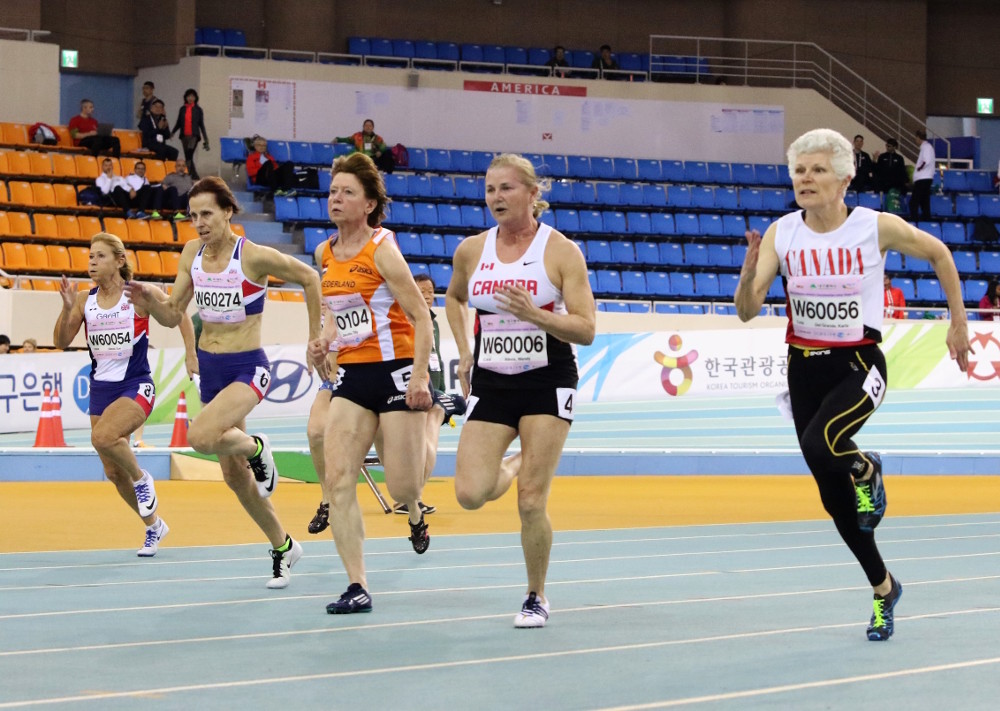
Competing outdoors in the 2010s, Del Grande set the 100m and 200m world records in the W60 and W65 categories, and she added a W65 400m world best as well. Indoors, she ran to 60m (W60), 200m (W60 and W65) and 400m (W65) world records.
Additionally, Del Grande owns an incredible 17 Canadian indoor masters records and 12 national outdoor records, some of which date back to the early 2000s when, at the age of 49, she first began competing in masters athletics.
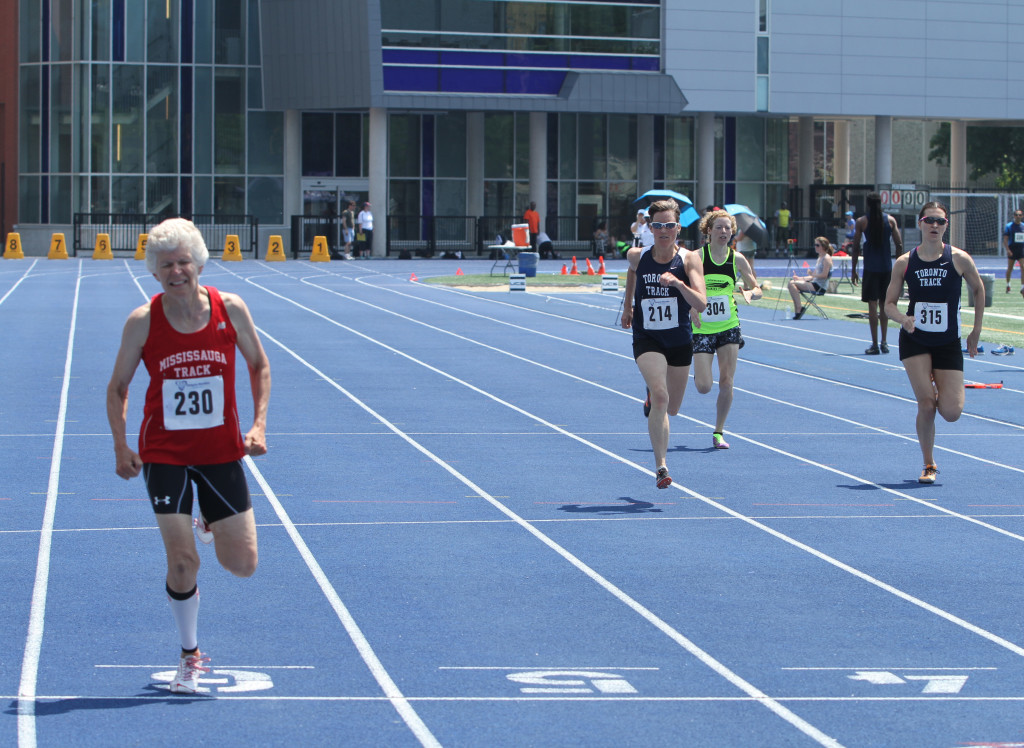
This is not the first time Del Grande has been honoured as a masters athlete. In 2018 and 2019, the WMA named her the Female Sprint Athlete of the Year, and again in 2019, the NCCMA (North American, Central American and Caribbean Masters Athletics) gave her overall Female Athlete of the Year honours. She has also been inducted into the Ontario and Canadian Masters Athletics Halls of Fame.
At 67, Del Grande still has a few years left in the W65 division to better her own world records, and while the 2020s have only just started, it shouldn’t be a surprise if she’s nominated for Athlete of the Decade once again come 2030.
(03/23/2021) ⚡AMPby Ben Snider-McGrath
Ethiopian Athletics Federation (EAF) will host its Tokyo Olympics track and field trials in the Dutch city of Hengelo in June
EAF President Derartu Tulu Thursday announced that besides the track and field trials being held in the eastern Netherlands city, Ethiopia will also hold trials to pick its Olympic marathon teams in Zurich, Switzerland, on May 2.
The Hengelo trials will run on June 6 and 7 and will feature events from the 800 to 10,000 meters at the Blankers-Koen Stadium which will be hosting FBK Games, part of the World Athletics Continental Tour Gold series.
Over 90 Olympic track probables, along with 20 coaches, have been in residential training in three different hotels across Addis Ababa from November 3 last year.

Golden Jubilee championships.
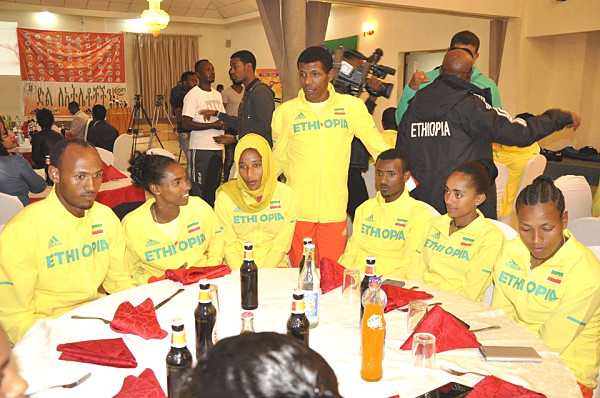
Before the Hengelo trials, these elite athletes will feature in the six-day, 50th Ethiopian national athletics championships to be held in Addis Ababa from April 6 to 11.
The Golden Jubilee national championships will have prize money and will be broadcast live as part of EAF's Olympics countdown.
There has been a tug-of-war between Ethiopia's athletics federation and the country's Olympic committee over preparations for the Tokyo Olympic Games.
Reports from Addis Ababa indicate that the athletes will now move into one hotel, starting today, "so that it's good for the team spirit."
Sources within Ethiopian athletics yesterday indicated that EAF is expected to take over all the preparations "because the Olympic committee has failed to honor its commitments for the last four months."
Zurich time trials
EAF's highly-respected President Tulu is Africa's first black female Olympic champion, winning gold in the 10,000 meters at the 1992 Barcelona Olympic Games.
Ethiopia were initially scheduled to hold their marathon trials on April 4 at home, but the arrangements were met with protests from the athletes, prompting the switch to Zurich where a 35-kilometer time trial is planned instead of a full, 42-kilometer race.
(03/23/2021) ⚡AMPby Elias Makori
How to increase your running stamina
Whether you’re an elite marathon runner or starting week 3 of a 5K program, running further and faster are two common training goals for people of all fitness levels.
While there’s no hard and fast rule or “one best way” to boost running stamina, there are some general guidelines you can follow that will help you perform better while staying injury-free.
How to increase stamina
To increase your stamina, you need to have a working definition of what it is. The easiest way to understand stamina in relationship to running, according to Steve Stonehouse, NASM-CPT, USATF certified coach, director of education for STRIDE, is to think of it as your body’s ability to sustain effort for a long period of time.
In general
1. Start slow and tackle small steps
Even if you feel ready to bump up your distance or speed, it’s a smart idea to go slow and aim to make incremental gains in your training program. This is especially true if you’re new to a regular running schedule.
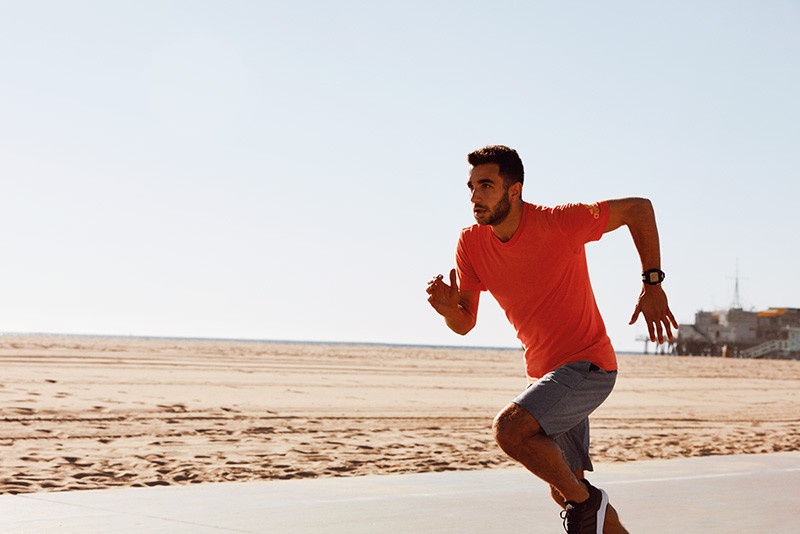
If you’ve been averaging 4-mile runs, don’t bump it up to 7 miles. To avoid injury and burnout, go up in small steps, such as increasing by 1 mile each week.
“Progress should be over many weeks, allowing time for recovery, but getting harder and harder,” Harrison explains.
2. Add strength training
If you’re not already doing resistance training workouts, then you need to add them to your running program.
Performing strength training exercises at least 2 to 3 days a week can help improve running economy, according to a review of literature from the National Strength and Conditioning Association.
3. Commit to training
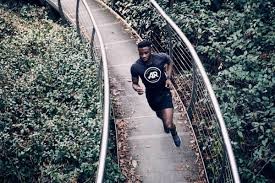
You have to be consistent with your training to increase running stamina.
“Training needs to progress from less total training and less intense training to more total training volume and more intense sessions,” says Harrison.
If your running workouts don’t progress in volume or intensity over the course of months, there will be no progression.
4. Alter rest times and intervals
Other than simply increasing the number of miles you run each week, Stonehouse says he likes to limit recovery time between intervals, while also increasing the intensity of the running intervals. Both are great steps toward building stamina.
However, he does point out that the recovery period both during the workout and after is critical, especially when it comes to avoiding injuries.
5. Sprint interval training
Sprint interval training is a type of high-intensity training used in many sports like running to help boost stamina and speed.
In fact, a 2017 studyTrusted Source found that six sessions of sprint interval training improved the running performance, both endurance and anaerobic, in trained runners.
The intervals of work performed are at 100 percent of your effort, or all-out sprints. The rest periods are longer to help with recovery.
6. Train for your distance
The distance or time of the intervals will be relative to the race distance you’re training for, according to Stonehouse.
For example, if you’re training for a marathon, “speed work” may consist of mile repeats. But if the training is for a 1,600-meter or 1-mile race, the speed work may be repeats of 100 meter, 200 meter, or 400 meter distances.
7. Slowly increase weekly mileage
The overall goal for a beginner should be to slowly increase mileage while getting stronger with resistance training. Following a training plan can help beginners build stamina and endurance while reducing the risk of injury.
8. Increase running volume
Running 1,600 meters or 1 mile may not seem too difficult, but if you’re racing against the clock, every second counts. And when you consider that a mile or 1,600 meters is an aerobic event, Harrison says you have to be incredibly fit to run it faster.
The best way to get incredibly fit, he says, is to run lots of miles per week, and progressively increase them over time.
9. Stay hydrated
While hydration may not be a specific training strategy, it does affect your ability to increase stamina.
Since you lack the cooling effect of the air flowing by your body when you run on a treadmill, Harrison recommends using a fan or running in a facility with air conditioning.
“Running in 70-degree temps with no airflow on a treadmill is more like running in 85-degree temps outdoors,” he explains.
That’s why hydration before, during, and after your workouts is so important. For longer sessions, consider consuming carbs and electrolytes while exercising.
(03/23/2021) ⚡AMPby HealthLine
Dunkin’ will serve as the official coffee and donut of the DICK’S Sporting Goods Pittsburgh Marathon
Pittsburgh runs on Dunkin’ is taking on a whole new meaning this week, as P3R and Dunkin' team up for the DICK'S Sporting Goods Pittsburgh Marathon. Through this collaboration, Dunkin’ will serve as the official coffee and donut of the DICK’S Sporting Goods Pittsburgh Marathon, to keep runners of STEEL fueled throughout their training, and help them celebrate after their runs.
Dunkin’ will kick off the 2021 DICK’S Sporting Goods Pittsburgh Marathon weekend with a special black and gold Pittsburgh Marathon donut at participating local Pittsburgh locations, so runners and fans alike can join in to celebrate the virtual weekend of events. The donut will feature vanilla flavored icing with black and gold sprinkles and will be available at participating Dunkin’ locations April 30 through May 2, 2021.
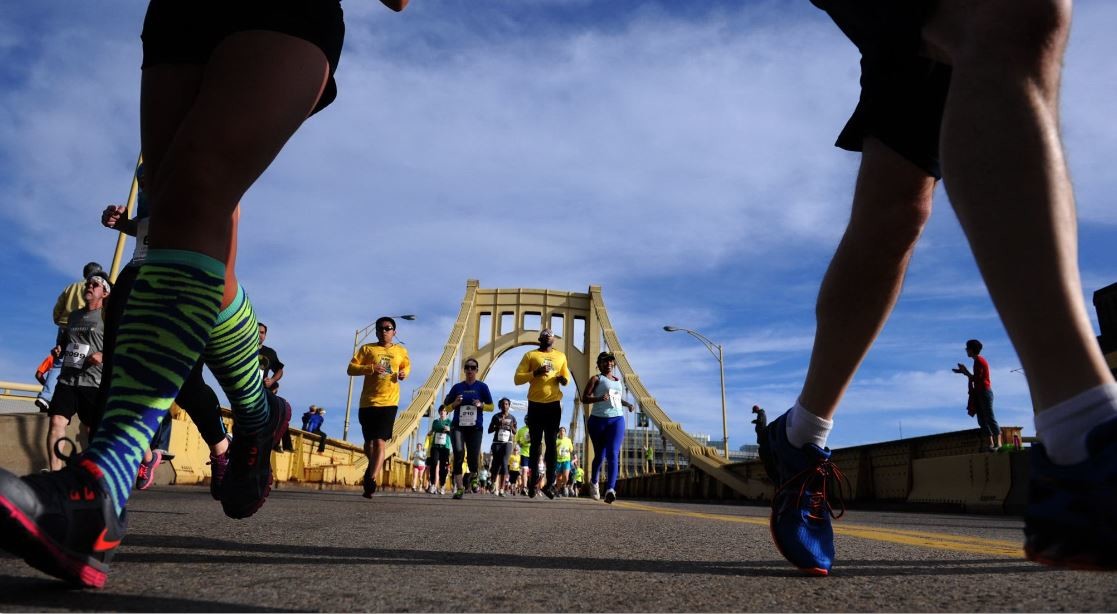
“We are always excited to participate in collaborations that furthers our strong connections with the local community, ” said Anthony Braun, COO and CFO of Heartland Restaurant Group, a Dunkin’ franchisee. “We are thrilled to keep the DICK’S Sporting Goods Pittsburgh Marathon participants running on Dunkin’.”
Dunkin' is the world's leading baked goods and coffee chain, serving more than 3 million customers each and every day. Dunkin’ offers more than 30 varieties of donuts as well as dozens of premium beverages, bagels, breakfast sandwiches and other baked goods.
“Teaming up with Dunkin’ is important to us because we know that coffee and running go hand-in-hand,” said P3R VP of Partnerships & Runner Experience, Caroline Fitzgerald. “Dunkin’ is the perfect place to fuel-up pre-run, and to celebrate post-run.”
(03/23/2021) ⚡AMPDick's Sporting Good Pittsburgh Marathon
This race is your game - however you decide to play it. As a competitor. A fund raiser. An enthusiast. A veteran. A team player. It's whatever you want it to be. It's whatever you make it. It's YOUR game..... Run it. Play it. Own it. Love it. Runners will race on the North Shore of Pittsburgh, cross each of...
more...Eugene Marathon Is Offering Medals Made of Wood
Organizers of the Eugene Marathon, which typically finishes at Hayward Field, were able to procure some of the old steps from the east grandstand, and those steps are being refashioned into race medals for this year’s virtual marathon and half marathon, scheduled for April 23 through 25. Next year’s event medals will feature the old Hayward wood as well.
Race director Ian Dobson told Runner’s World the organization submitted a proposal to the University of Oregon in order to get his hands on the antique steps. When approved, he then filled his truck and moved the wood to the race’s storage facility. Dobson also had them tested to make sure they didn’t contain any lead paint. (They didn’t.)

In the past, the race medals had come from overseas, which is the industry standard. For this, the race’s staff selected a local designer for processing and fabricating. “For the whole project, we were able to keep everything local,” Dobson said.

The medals are being made from the interior wood of the grandstand; they might look new, because that section of wood was unweathered by nearly a century of rain, wind, and snow. To maintain a connection to their historic past, the medals will be cut in the same proportion as the former Hayward Field steps.
Additionally, the unusual medals are driving participation for this year’s race, which will be virtual—for the second year in a row—in response to the COVID-19 pandemic. Dobson said fewer than 100 spots remain for the marathon ($75) and about 500 spots remain for the half marathon ($60).
Race packets—including shirts, numbers, and medals—will go out before the race to everyone who signs up. So technically, there’s nothing stopping memorabilia collectors from registering in order to get the medal, even if they have no intention of doing the race.
Dobson’s not worried, though. “We trust the running community,” he said.
(03/23/2021) ⚡AMPby Runner´s World
Eugene Marathon
Consistently ranked in the top 15 races most likely to qualify for Boston by Marathon Guide, the Eugene Marathon is a beautiful, fast, USATF certified race with amazing amenities and an unrivaled finishinside Historic Hayward Field. The Eugene Half Marathon starts alongside full marathon participants in front of historic Hayward Field home of five Olympic trials, ten NCAA championships and...
more...Sebastian Coe warns Italy not to be on wrong side of history following Schwazer doping clearance
World Athletics President Sebastian Coe has warned Italy to not be on the "wrong side of history" after a court cleared Olympic race walking champion Alex Schwazer of doping in a criminal case.
An Italian court in Bolzano ruled last month that urine samples belonging to Schwazer, who was given an eight-year ban before the Rio 2016 Olympics, were "highly likely" tampered with.
The criminal court case was dismissed after the court stated it was possible that the sample was tampered with to show up a positive result.
Schwazer was given the lengthy ban as it was his second doping offence, having previously served a three-and-a-half year suspension for testing positive for erythropoietin before the London 2012 Olympics.

The Italian has not disputed results of that first test.
He did claim he was a victim of foul play related to his second ban, which was handed to him following a sample from January 1 2016.

It had initially given negative results, but a new analysis revealed traces of steroids.
The World Anti-Doping Agency (WADA) gave the Beijing 2008 50-kilometre race walk champion an eight-year ban for his second offence, but after the Italian court ruling, Coe criticised its decision.
"We do resolutely reject any attempt by the athlete or any individuals associated with the athlete to undermine or seek to annul the final CAS ruling," said Coe in a press conference.
"It was an award based on what can be best described as far-fetched manipulation theories."
The ruling in Bolzano has led to a suggestion that Schwazer could appeal to the Swiss Federal Tribunal.
CAS rejected an appeal from Schwazer to overturn his lengthy ban in August 2016 and the Swiss Federal court upheld CAS' ruling when the Italian later appealed to it.
Schwazer was stripped of a World Race Walking Team Championships title won in Rome in 2016 as a result of the second anti-doping violation.
"I don't want Italy to be on the wrong side of history here," added Coe.
"The Athletics Integrity Unit and World Athletics stand absolutely by the position they've taken.
"The issue is clearly one that is exercising Italy and it is important that we remain very firm and very resolute here.
"I don't want Italian track and field to be tainted, I just hope that people recognise that this is an important issue and history will be unkind."
(03/22/2021) ⚡AMPby Michael Houston
General Entry for Tokyo Marathon 2021 is now open
Tokyo Marathon 2021 General Entry started from today, Monday, March 22 at 10 a.m. The entry will be open until 5 p.m. on Wednesday, March 31. The Tokyo Resident Entry is only available through the Japanese page.
Entries made through the English page will not be subject to the Tokyo Resident Entry, even if the registered address is in Tokyo.
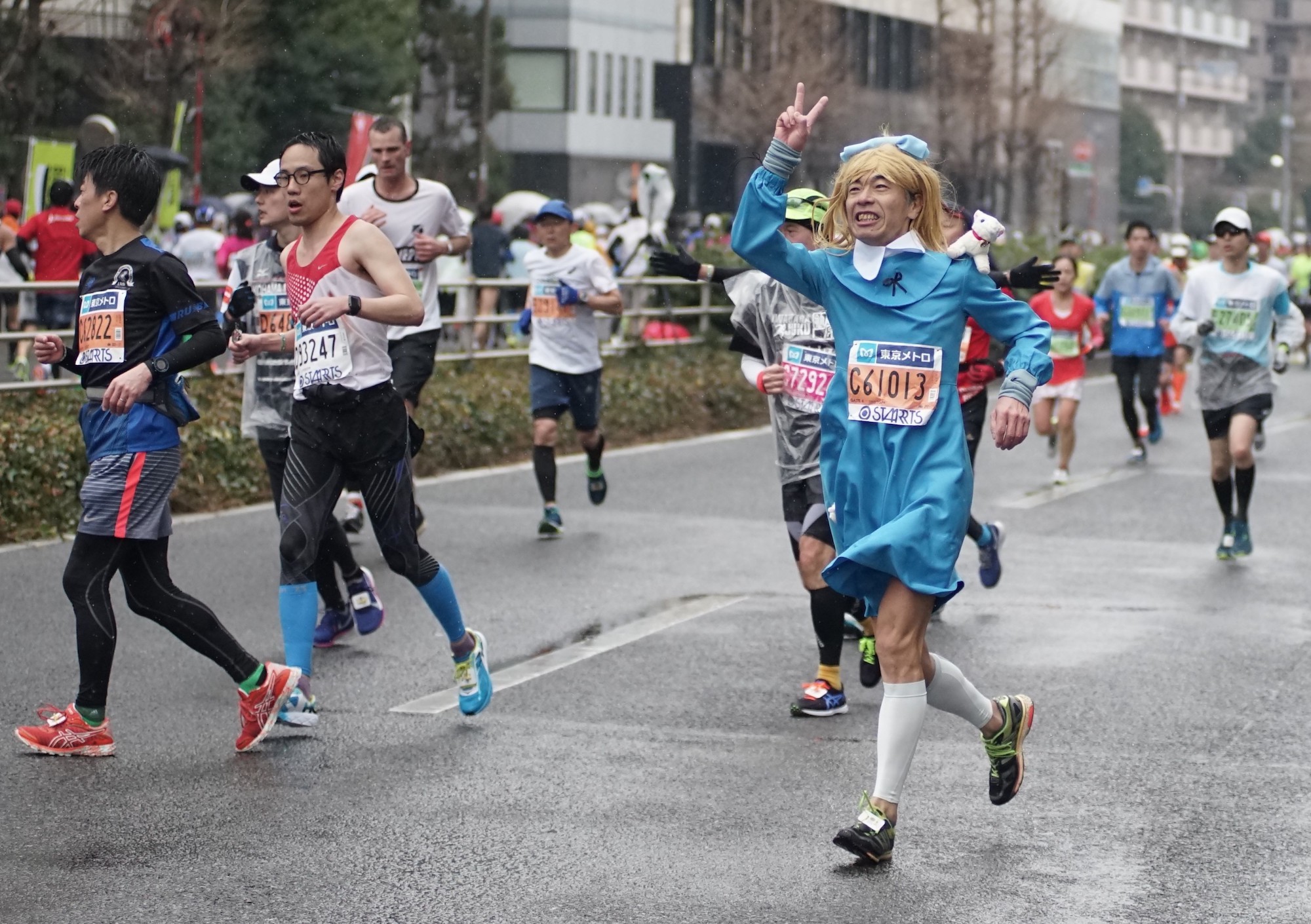
Any information pertaining to the Tokyo Resident Entry will only be available in Japanese.
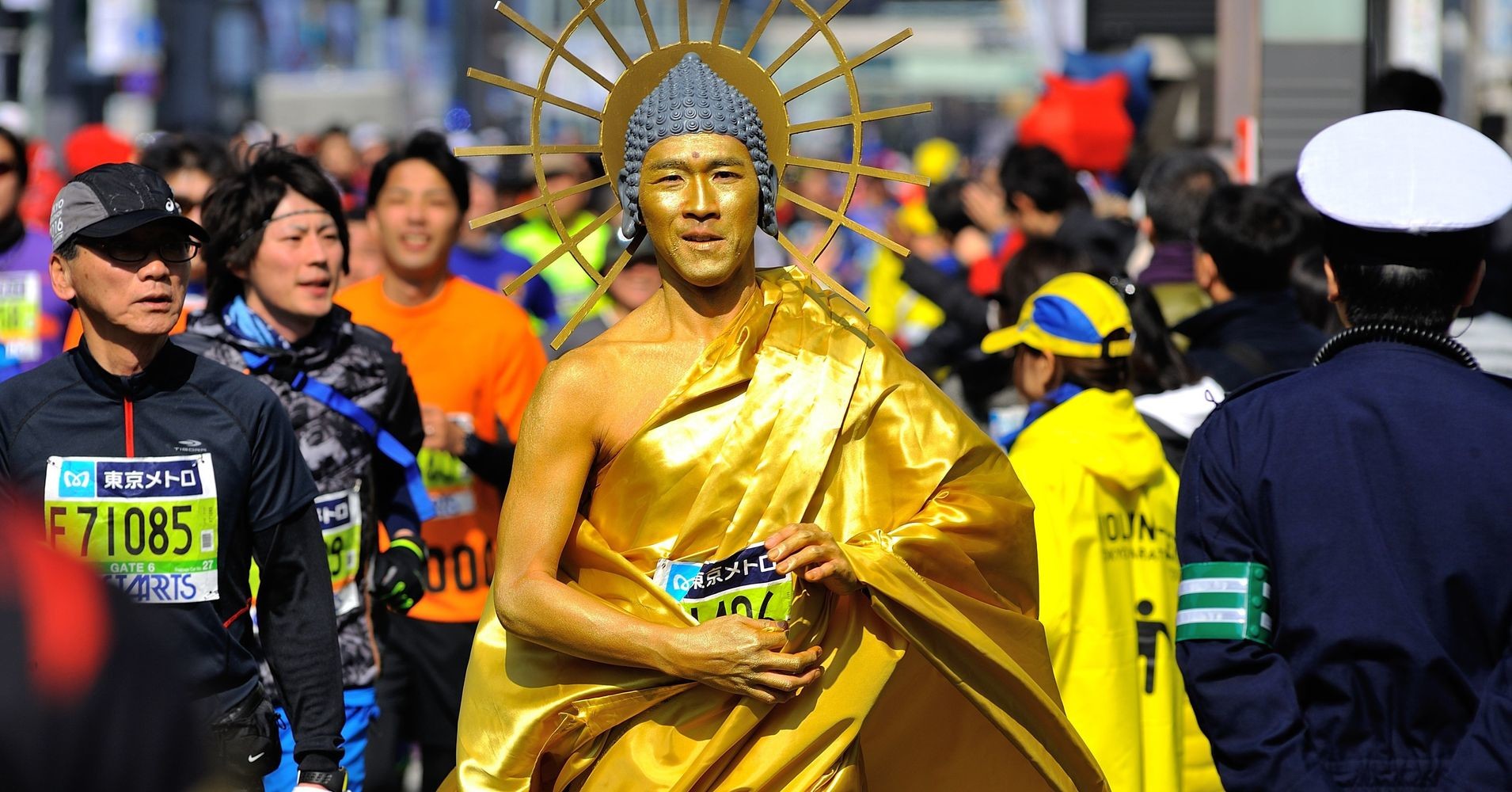
*The selection result is scheduled to be announced in mid- April 2021 on "My Entry".
*The selection is not based on first-come basis.Once the entry exceeds the field size, the selection will be made by drawing.
Due to heavy access, loading may be slow. In such cases, please wait for a while and try again.
(03/22/2021) ⚡AMPTokyo Marathon
The Tokyo Marathon is an annual marathon sporting event in Tokyo, the capital of Japan. It is an IAAF Gold Label marathon and one of the six World Marathon Majors. Sponsored by Tokyo Metro, the Tokyo Marathon is an annual event in Tokyo, the capital of Japan. It is an IAAF Gold Label marathon and one of the six World...
more...2021 Austin Marathon's half marathon, 5K races approved as in-person for April
Austin's running scene will get back on track in late April, with the 2021 editions of the Austin Half Marathon and 5K receiving approval from city officials.
Both events were approved through the City of Austin's new special event permitting process. The events, which were originally scheduled for February 14, will now happen on April 25.
Part of the event plan includes a capacity limit for both events, which organizers say is a 53% reduction from years past. 6,500 participants will be able to take part in the half marathon, while 500 will be able to take part in the 5K.
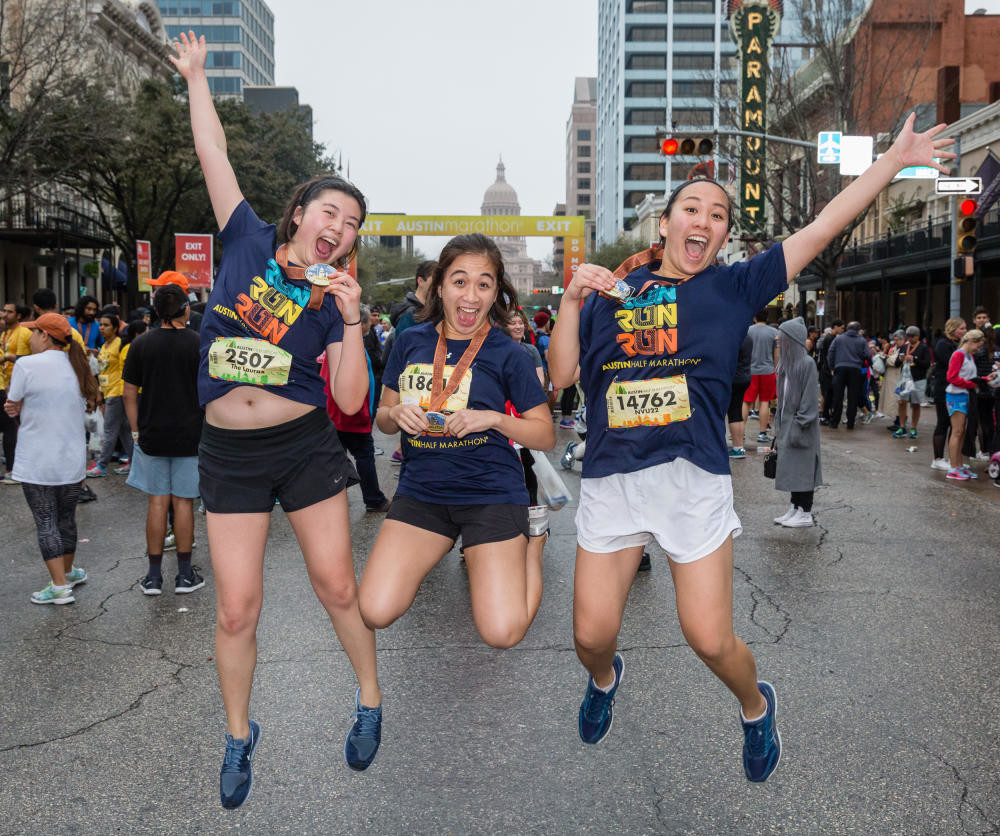
Austin's running scene will get back on track in late April, with the 2021 editions of the Austin Half Marathon and 5K receiving approval from city officials.
Both events were approved through the City of Austin's new special event permitting process. The events, which were originally scheduled for February 14, will now happen on April 25.
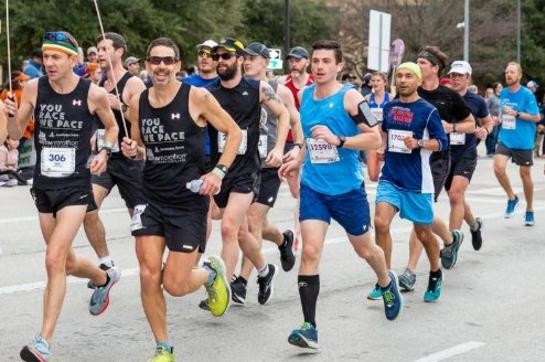
Part of the event plan includes a capacity limit for both events, which organizers say is a 53% reduction from years past. 6,500 participants will be able to take part in the half marathon, while 500 will be able to take part in the 5K.
"The 2021 Austin Half Marathon, an event that represents Austin’s commitment to health, has also shown a commitment to COVID-19 safety," said Don Hastings, Austin Public Health Assistant Director for Environmental Services. "The Austin Marathon team has worked creatively over several months to re-invent this signature event in a way that emphasizes the health and safety of its participants and our community."
In addition to the capacity limitations, the event plan calls for a number of other COVID-19 mitigation practices, including reducing the density of runners at the starting line and along the course, enhanced sanitation protocols, an elimination of mass gathering activities, and discouraging spectators from attending.
More details on the 2021 events are available online.
(03/22/2021) ⚡AMP
by Kasey Johns
Austin Marathon Weekend
The premier running event in the City of Austin annually attracts runners from all 50 states and 20+ countries around the world. With a downtown finish and within proximity of many downtown hotels and restaurants, the Austin Marathon is the perfect running weekend destination. Come run the roads of The Live Music Capital of the World where there's live music...
more...2021 Shamrock Marathon was a success but with most runners participating virtually
For the last 48 years, there’s been a sea of green at the Virginia Beach Oceanfront as the Shamrock Marathon took place. The 2020 race was cancelled because of the coronavirus pandemic. This year, it was back, but for most runners, in a virtual sense.
“It’s still hurting. We’ve got a long climb up, but we feel this is the start and through the support from all the runners, we’ll get through it,” said J&A Racing co-owner, Jerry Frostick.
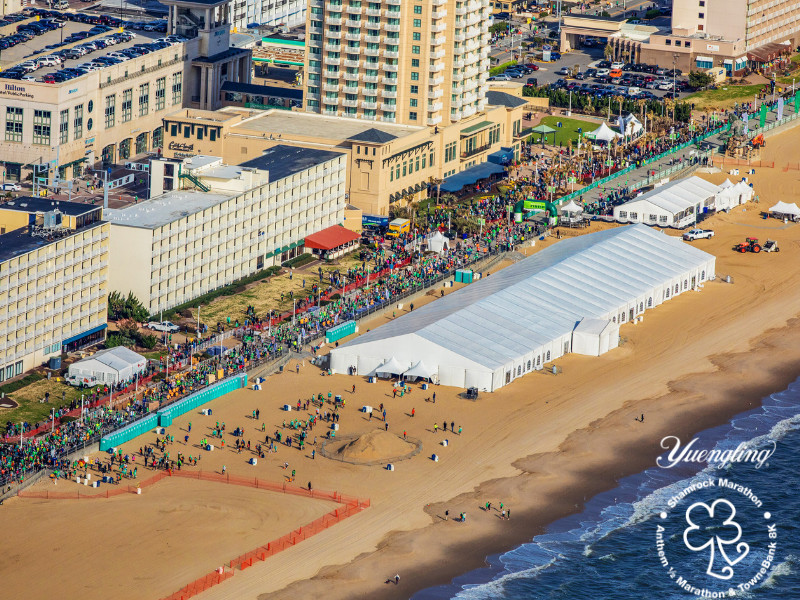
This year, almost 4,000 people ran “virtually” on their own and about 2,400 chose to run a J&A course at the Oceanfront.It was a scene that Frostick says was emotional.
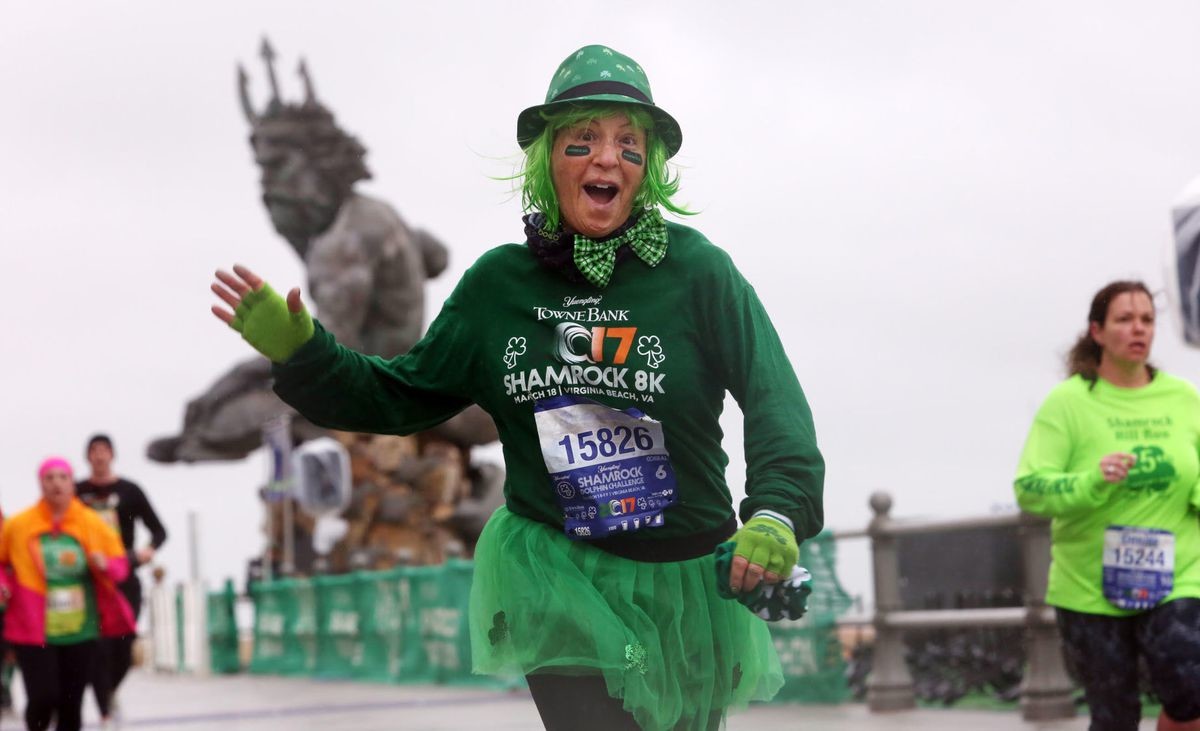
“It’s unbelievable. I think what we were hoping to get was the positivity and momentum that — if we keep behaving, and doing what we’re supposed to be doing, and the vaccines are coming out — then, we’re coming back. I don’t mean just J&A and the Shamrock Marathon, but us as a community,” said Frostick.
The runners, were all smiles, like one family who missed the event and has been a part of it since 2018.Runners Steve and Rebecca Vennettilli say they participate every year, and even the kids run. They say it’s been a long time coming, but now there’s a light and the end of the tunnel.
“When it was cancelled last year, we thought that was it. And now, actually looking back, we can get through it. We can get back to this point,” said Steve Vennettilli.
(03/22/2021) ⚡AMPby Aesia Toliver
Yuengling Shamrock Marathon
The Shamrock Marathon was born in 1973. It was the brainchild of Jerry Bocrie, who along with his wife Lori would serve as race director for 30 years. The inaugural marathon had 59 entrants and 38 finishers, and the weekend also featured 1-mile, 2-mile, and 6-mile races. In 1976, the 6-miler gave way to an 8k, which has remained a...
more...Scheduling casts doubt over Miller-Uibo's bid for 200-400m Olympic double
Bahama’s Shaunae Miller-Uibo has hit out at athletics chiefs over the scheduling of races that could derail her hopes of becoming the first runner to claim a 200-400 metres Olympic double in 25 years.
The women’s 400m semi-finals at this year’s Tokyo Games are scheduled to take place two days before the final, as compared to the men’s event, which has an extra day’s gap.
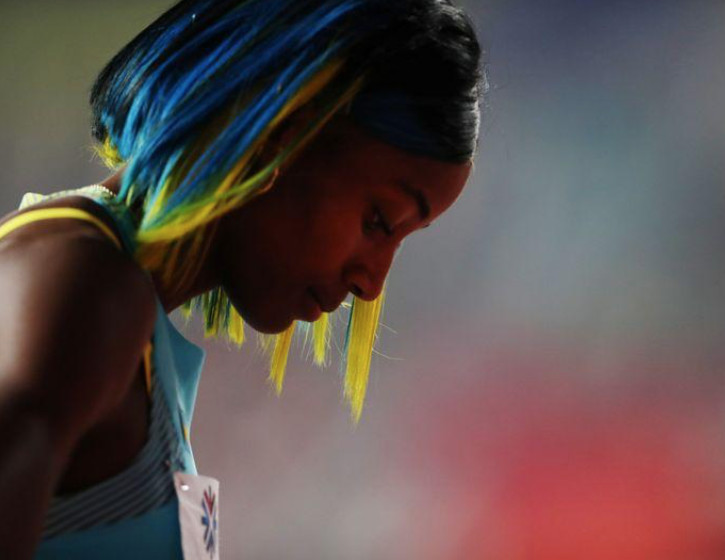
An overlap of the 200m and 400m races also mean Miller-Uibo, who won gold in the 400m at the Rio Olympics five years ago, will have to run twice on successive days if she wants to secure the double, while the men will only have to do so once.
The 26-year-old, who aims to emulate Michael Johnson, Marie-Jose Perec and Valerie Brisco-Hooks, said the Bahamas Olympic Committee’s request to amend the schedule had been rejected.
“As much as I wanted a new title in the 200 metres, I also wanted to defend my Olympic one,” Miller-Uibo told The Times. “The guys have an opportunity where their events don’t clash and so all we were asking for was an opportunity to double.
“With the guys they had a two-day break between the 400m semis and final. Had they opened that up for the girls then it would have been fine.”
Miller-Uibo said she was almost certain to ignore the 400m, shifting her focus to the shorter distance and a potential battle with Britain’s Dina Asher-Smith.
“She’s a great competitor,” Miller-Uibo said. “I think we’ll bring the best out of each other.”
Miller-Uibo’s comments come days after World Athletics announced a series of pledges to “further advance the role of girls and women” in the sport.
(03/21/2021) ⚡AMPYang smashes world 20km race walk record with 1:23:49
Yang Jiayu chopped 49 seconds off the world record to win the 20km race walk in 1:23:49* at the Chinese Race Walking Championships in Huangshan on Saturday (20).
The 2017 world champion made a break in the first kilometre and passed through 5km in 20:55. She reached half way in 41:52 with a comfortable lead over world and Olympic champion Liu Hong and then gradually increased her pace in the second half.
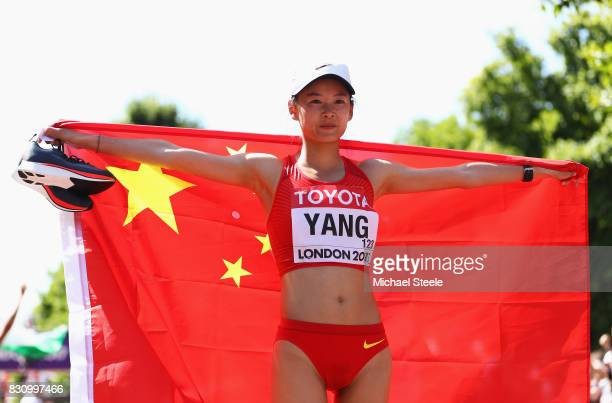
After going through 15km in 1:02:44, she covered the final five kilometres in 21:09 to cross the line in 1:23:49, finishing 38 seconds ahead of Liu.
Liu's 1:24:27 runner-up clocking was also inside the previous world record of 1:24:38, set by Liu in La Coruna in 2015.
“My goal for the race was to break the world record,” Yang told Xinhua. “I walked in a very fast pace at the early stages. Then my coach told me to slow down a little bit and stay in a relatively comfortable pace. The last three kilometres was the most difficult part which was a challenge for my body.”
World silver medallist Qieyang Shenjie was third in a PB of 1:24:45, securing her spot on China’s Olympic team as the race served as a trial event for the Tokyo Games.
It’s the first 20km race in which more than one woman has finished inside 1:25:00. In a race of exceptional depth, 2015 world silver medallist Lu Xiuzhi finished fourth in 1:25:51 and world bronze medallist Yang Liujing was fifth in 1:25:59. The first 10 athletes finished inside the Olympic qualifying standard of 1:31:00.
On a landmark day for Chinese race walking, Asian Games champion Wang Kaihua won the men’s 20km event in a national record of 1:16:54, a performance that moves the 27-year-old to third on the world all-time list, just 18 seconds shy of the world record.
Olympic silver medallist Cai Zelin finished just ahead of Zhang Jun to take second place, both men recording 1:17:39 to move to equal third on the Chinese all-time list. 21-year-old Cui Lihong just missed out on a top-three spot but was rewarded with a big PB of 1:17:52 to become the eighth-fastest Chinese man in history. It’s just the second time in history in which four men have finished inside 1:18 in a 20km race.
(03/21/2021) ⚡AMPby World Athletics
Olympic hopes ready to bloom at Kew Gardens
Marathon runners and race walkers are poised for thrilling and richly symbolic races on March 26 in Kew Gardens
If athletes taking part in the Müller British Athletics Olympic Marathon and 20km Walks Trials in Kew Gardens this month need to focus their minds on what is at stake, they merely need to glance to the side of the course during their race.
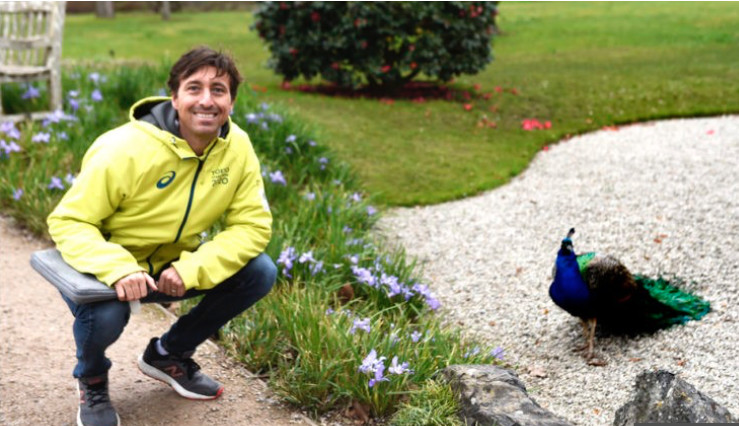
The event on March 26 coincides with ‘Sakura season’ – the time of year when cherry blossom trees come into bloom. Not only will it provide a picturesque back-drop but it is the national flower of Japan and a timely reminder to the runners that their efforts on the roads of south-west London could see them win a ticket to Tokyo.
Tom Bedford, the race director, describes it as an amusing twist of fate. It certainly was not in anyone’s mind when the Borough of Richmond venue was chosen ahead of Manchester, Dorney Lake and various horse and motor-racing courses to host the Olympic trials.
Instead, the main requirements were a fast, flat and sheltered course that can help athletes nail Olympic qualifying standards, plus the reliability factor of a venue during such an uncertain pandemic-hit period.
Marathon runners will tackle one small lap followed by 12 big laps, therefore passing the cherry blossom trees and Japanese gardens a dozen times. Organisers have worked in recent months with course measurer Hugh Jones to iron out some of the mild corners on the route, which means the course is not just aesthetically pleasing but fast too.
Bedford is certainly happy with the progress made and points to one particular straight that is almost an entire metric mile in distance.
Contenders like Steph Davis have already checked out the course and Bedford describes it as “more of a flat road relays kind of course” such as the well-known circuit used at Sutton Coldfield for road relays “as opposed to the kind of course you get in big city marathons”.
This is partly because the path is only about four metres wide in places. However, with small fields and multiple pacemakers to ensure the going is quick through the first 30km in order to achieve qualifying times of 2:11:30 and 2:29:30, this should not be an issue. Plus, the course includes none of the inclines that the well-known Sutton Coldfield course contains.
“Our intention has been to make it as fast as possible,” says Bedford. “My advice to athletes is that they just switch off and go to sleep for an hour and follow ‘the train’ and then get ready to go when the pacemakers drop out.”
Amusingly the event also has an unofficial mascot, which Bedford discovered at Kew Gardens recently with AW photographer Mark Shearman. ‘Eric the peacock’ (see below) is a Richmond resident although runners will be hoping he doesn’t stray on to the course on race day.
On a more serious note, Bedford has been helped by his father, Dave, the former London Marathon race director with organising the event. Among other things Bedford Jnr was based in Portugal during the winter and fell ill with coronavirus in January, so his dad stepped into help primarily with technical areas.
The duo have also worked closely with staff at UK Athletics such as competitions and events director Katie Brazier during what has inevitably been a tricky few months due to the pandemic. Was there a particularly bad moment when the race was in doubt?
Bedford says shortly after Christmas when the virus began to surge and hospitals were in danger of being over-run was a worrying time. The Richmond Runfest, which was due to be held at the same venue on the Saturday and Sunday following the trials events on Friday, was postponed until mid-May. Apart from this, the organisers have been keen to give the Olympic hopefuls a near-definite goal to work toward.
“It’s been tough for athletes and they have my utmost respect for how they’ve managed to get themselves through this with everything from problems seeing physios to not even having a national endurance coach in charge during the winter,” says Bedford.
Spectators will not be allowed on race day, but each runner will be permitted one Tour de France-style ‘soigneur’ to help with their drinks. After the mild controversy relating to the British trials for the European Indoor Championships not being streamed, British Athletics are this time showing the action from Kew Gardens while there is still the possibility BBC may show the races too.
This will be the first time for 40 years that a British Olympic marathon trial has been staged as a standalone race in a similar style to the US Olympic trials. In 1980 the AAA Championships and trial for the Moscow Olympics took place in Milton Keynes. It was won by Ian Thompson in 2:14:00 from Dave Black and Andy Holden as 195 men finished. Yet from 1983 onwards the national championships and trials have been part of the London Marathon and the battle for selection is often a ‘race within a race’ with television struggling to capture the action.
There are also obvious comparisons with the standalone US Olympic marathon trials that have taken place in recent years in Atlanta (2020), Los Angeles (2016), Houston (2012) and New York (2011) with the latter, in the city’s Central Park, on a similar multi-lap course to the one we will see in Kew Gardens.
“There is such an appetite for this event,” Bedford enthuses. “I’ve always been a fan of the American trials system. The men’s race will be great on March 26 but the women’s race is going to be an absolute cracker as there are so many top runners in it. And if the athletes can make it as competitive as I think it’s going to be then this kind of trials race could become the norm.”
The venue has great history, too, with the Borough of Richmond being something of a home to British distance running. Not only does the area feature popular training areas of Bushy Park, Richmond Park and Wimbledon Common but it was birthplace of the London Marathon and parkrun.
In the race for Olympic selection, runners and race walkers will finish in front of Kew Gardens’ iconic Palm House glass building. The most symbolic feature, though, will surely be the cherry blossom trees that they will pass on a long winding road that will end, for some, on the streets of Tokyo.
(03/21/2021) ⚡AMPby Athletics Weekly
Will There Be Fans at the Hayward Field Olympic Trials? After 2020, holding the event at all will be a victory in itself
Compared to other pandemic-inspired dystopias, the rise of the avatar sports fan wasn’t horrible, so much as mildly depressing. The NBA’s Disneyland bubble (and recent All-Star game) had “virtual bleachers” where viewers could glimpse their spectral selves on screen. Then there was the strange analog equivalent where people paid $100 for the privilege of attending the Super Bowl as a cardboard cutout. In an era of increasing atomization, these images felt like a vision of a nightmare future where yet another in-person communal experience had been phased out. Last March, when asked about the prospect of competing in an empty arena, LeBron James’s initial response was, essentially, forget it. “If I show up to an arena and there ain’t no fans in there, I ain’t playing,” he said.
For track and field athletes, on the other hand, one could make the obvious joke that competing without spectators—as many runners did last year—would be business as usual. But even as having vacant seats at major championships remains a recurring issue for the sport, there are still places where, in pre-pandemic times, one could reliably find an infectious mass enthusiasm for watching fit people chase each other around the oval. In the United States, the most obvious example is, of course, Hayward Field in Eugene, Oregon, which is slated to host its fourth consecutive Olympic Trials in June. The venue’s combination of historical significance and high-energy fan base have always given it a special aura, colloquially referred to as the “Hayward Magic.” Even for those who don’t buy into the idea that occult forces might be wafting through the air of the Pacific Northwest, the quadrennial spectacle of the Trials at Hayward has delivered some big-time moments—starting in 1972 when Steve Prefontaine broke the American record in the 5,000-meters to punch his ticket to his first, and only, Olympic Games.
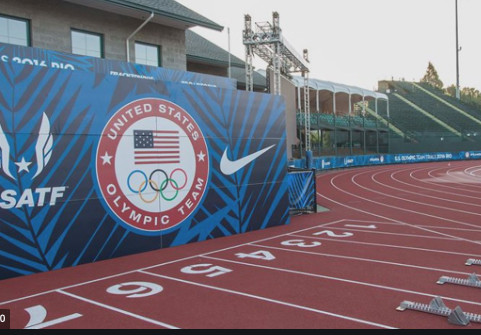
“This is a very special place for people who are really passionate about running,” says Eugene resident and two-time Olympic Trials champion Nick Symmonds. At the 2008 Trials, Symmonds was the first finisher in the famous “Oregon sweep” of the men’s 800-meters, where all podium spots were claimed by Eugene-based runners—to the roaring delight of the home crowd. While some have argued that it would be “better for the sport,” if U.S. track and field were less Oregon-centric, there’s no question that Hayward’s reputation for track fanaticism is justified. “At Hayward, you can have 10,000 people watching an early-season college dual meet,” Symmonds told me. According to a 2018 survey by the University of Oregon Foundation, the average attendance for weekday and weekend track meets at Hayward over the previous five years was 6,146 and 6,259 spectators, respectively. Those are impressive numbers for U.S. track and field. Symmonds told me that, as a professional, he had raced in national championships at other big venues across the country, like Des Moines and Sacramento, and likened the experience to competing in a “ghost town.” As he put it, “There was no one in the stands there to watch other than mom and dad.”
Unfortunately, the lingering reality of the pandemic might mean that even the Hayward Field Olympic Trials are destined for ghost town status. With fewer than 100 days to go (the Trials are scheduled to take place June 18th through 27th), it’s still uncertain whether spectators will be allowed to attend. COVID infection rates might be dropping as vaccines become more widely available, but the likelihood of packed stands by early summer seems remote.
“We are certainly hopeful that we will have fans at the Olympic Trials, but we are far from certain that that is going to be the case,” Michael Reilly, the CEO of TrackTown USA, the local organizing committee for the Trials, told me. Reilly generously pointed out that infection rates in Oregon had been “increasingly good.” Although the state is not yet allowing spectators at sporting events, Reilly said that his team was working with co-organizers like the United States Olympic and Paralympic Committee and USA Track and Field to apply for an exemption to submit to the governor’s office.
For now, the idea is to plan for a scenario in which fans will be allowed to attend with appropriate safety measures—testing, masks, social distancing, etc. (Reilly told me that it was still too soon to say whether the vaccine could play a role in any safety protocols.) “We are building operating plans that anticipate that spectators will be at the Trials,” Reilly told me. “If, for whatever reason, we can’t have fans, we will be prepared to go either way. Fortunately, many of the operations of the event, as it relates to conducting a track and field competition, really don’t depend on whether there are spectators.”
In a tantalizing irony, Hayward last year completed an extensive renovation that more than doubled its max seating capacity to 25,000. (The permanent seating capacity for the new facility is listed at 12,650, but it can be expanded to accommodate larger crowds.) The project, which is estimated to have cost around $270 million, transformed a relatively quaint facility into an opulent mega-stadium that includes a ten-story tower, a “hydrotherapy room,” and an on-site barbershop.
So far, the only athletes who have gotten to experience this architectural epiphany are members of the University of Oregon’s track and field team, leading Eugene’s Register Guard to posit that Hayward 2.0 is currently “little more than the most spectacular collegiate training facility in the nation.” As the paper reports, the university is hoping to host outdoor track meets later in the spring, culminating in the NCAA Outdoor Championships, which are scheduled to take place the weekend before the Trials.
Should both of these events end up happening without any spectators there’s still the silver lining that, hey, at least they weren’t canceled. And while it might be tempting to assume that all athletes prefer to race in front of a packed house, that, of course, isn’t necessarily the case. Molly Huddle, who won the women’s 5,000 and 10,000-meters at the 2016 Trials and will be looking to make her third Olympic team this June, told me that the first time she competed at a Hayward Trials in 2008, she was so stimulated by the crowd energy that she ended up running poorly. She says she had to consciously “de-sensitize” at subsequent Trials in order to run well enough to make the team. “It will probably not feel like Hayward, because of the new stadium and because there are no knowledgeable, dedicated fans there like there always are,” Huddle says about the prospect of competing at a spectator-less Trials. “Usually, I just try and pretend it’s just a mid-season meet to take the pressure off. So it will be easier to do that.”
Meanwhile, the organizing committee for the Tokyo Games has yet to decide on whether overseas fans will be allowed to attend. (According to a press release from the International Olympic Committee, a decision is expected in the coming weeks.) To be honest, it’s hard to imagine that there will actually be a ban on international visitors—not least because the Japanese government and the city of Tokyo reportedly spent more than $1.25 billion on the new Japan National Stadium—but, if 2020 has taught us anything, it’s to never say never.
(03/21/2021) ⚡AMPby Outside Online
Registration Now Open for a Safe, Socially Distanced AJC Peachtree Road Race
This year will be a limited-capacity, two-day event held in-person and virtually on July 3-4. The in-person event in Atlanta will implement strict COVID-19 safety measures. Atlanta Track Club members receive guaranteed entry and priority choice of preferred race day. Non-members enter by lottery and race day preference will be accommodated as spots remain. The Club invites people to join/renew membership before registering to immediately receive their guarantee.
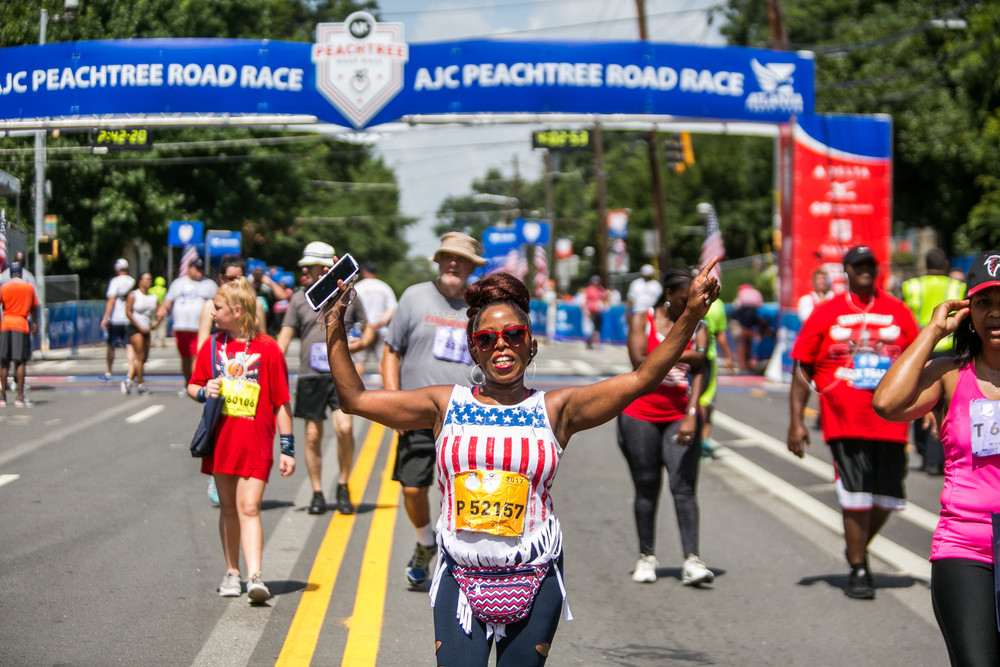
AJC Peachtree Road Race
The AJC Peachtree Road Race, organized by the Atlanta Track Club, is the largest 10K in the world. In its 48th running, the AJC Peachtree Road Race has become a Fourth of July tradition for thousands of people throughout the metro Atlanta area and beyond. Come kick off your Fourth of July festivities with us! If you did not get...
more...Kiplimo set to star at Campaccio cross country
Reigning world half-marathon champion Jacob Kiplimo from Uganda will be in the spotlight at the 64th edition of the Campaccio in San Giorgio su Legnano when the first leg of the World Athletics Cross Country Permit series takes place on Sunday (21).
The popular Northern Italian cross-country race was originally scheduled for its traditional 6 January date, but it was postponed until the end of March due to the global Covid-19 pandemic. For the first time in its long history, the Campaccio will be held in spring.
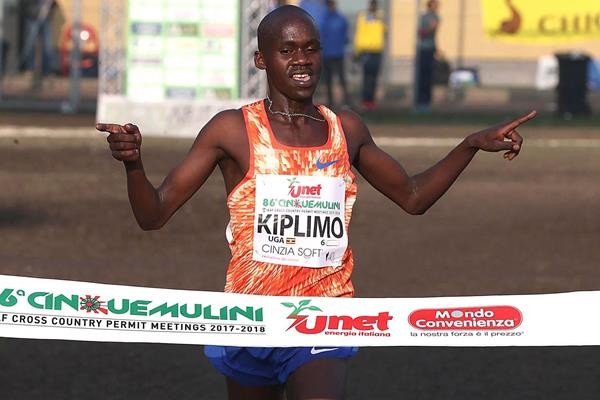
Kiplimo won the world half-marathon title in Gdynia in 58:49 last October and ran the second-fastest time in history over the 21.1km distance with 57:37 in Valencia last December. The 20-year-old also set PBs on the track last year, clocking 7:26.64 in the 3000m in Rome and 12:48.63 in the 5000m in Ostrava. In 2019 he won the world cross-country silver medal in Aarhus. In the build-up to the Campaccio, Kiplimo dominated the men’s race at the Italian Cross Country Club Championships in Campi Bisenzio near Florence in rainy conditions.
Kiplimo will race against his younger brother Oscar Chelimo, who won the BOclassic 5km World Athletics Label road race in Bolzano last December. In 2018 Chelimo finished seventh in the 5000m at the World Athletics U20 Championships in Tampere and won the 3000m at the Olympic Youth Games in Buenos Aires. One year later, the 19-year-old won the world under-20 cross-country bronze medal in Aarhus and finished fifth in the 5000m at the African Games in Rabat.
Another Ugandan runner in the line-up is 2017 and 2018 world mountain running silver medallist Joel Ayeko.
Last year’s surprise Campaccio winner Mogos Tuemay will return to San Giorgio su Legnano to defend his title. The Ethiopian runner set his 10,000m PB in Hengelo in 2019 with 27:23.49 and finished 18th at the World Athletics Cross Country Championships in Aarhus in 2019.
The top Italian runner is Eyob Faniel, who broke Stefano Baldini’s national marathon record with 2:07:19 in Seville last year. Faniel improved Rachid Berradi’s long-standing Italian half-marathon record with 1:00:07 at the Tuscany Camp Half Marathon in Siena at the end of February. Faniel also won the 2019 BOclassic road race and equalled Daniele Meucci’s 10km national record with 28:08 at the San Silvestre Vallecana in Madrid last December.
“I have always used cross-country competitions as preparation for the marathon,” said Faniel. “I finished ninth in 2017 and 10th in 2018 in my previous two appearances at the Campaccio. This year I am in different form, as I trained for shorter distances to prepare for the half-marathon. The turning point in my career was my win at the Boclassic in Bolzano in 2019.”
Faniel will battle for top place among Italian runners against Iliass Aouani, who won the national individual cross country title in Campi Bisenzio last week. Aouani, who graduated in engineering at the Syracuse University in New York, finished fourth at the 2019 World University Games in Naples in the 10,000m and equalled the national indoor mile record with 4:00.07 last year in Boston.
Other Italian runners to watch out for are Yohanes Chiappinelli, who won the European bronze medal in the 3000m steeplechase in Berlin in 2018, plus 2017 European indoor 3000m finalist Yassin Bouih, 2019 world mountain running silver medallist Cesare Maestri and 2017 world mountain running gold medallist Francesco Puppi.
In the women’s race, Lilian Kasait Rengeruk from Kenya will be bidding to win the Campaccio title for the second time, three years after her triumph in 2018. Rengeruk won the world cross country bronze medal in 2017 and finished fifth in the 5000m at the 2019 World Athletics Championships in Doha with her PB of 14:36.05.
Rengeruk will take on Winfred Mutile Yavi, who finished fourth in the 3000m steeplechase in Doha and won the past two editions of the Cinque Mulini Cross Country Permit race in San Vittore Olona in 2019 and 2020. Yavi clocked a world all-time best in the indoor 2000m steeplechase with 5:45.09 in Lievin last February.
The line-up also features Ethiopia’s Tsehay Gemechu, who finished sixth at the 2019 World Athletics Cross Country Championships in Aarhus.
Nadia Battocletti leads the Italian contingent. Battocletti won two consecutive European under-20 cross-country gold medals and the European under-20 silver medal in the 5000m in 2019. The daughter of former Italian cross-country star Giuliano Battocletti finished sixth in last year’s edition of the Campaccio. She won her first national senior cross-country title in Campi Bisenzio last weekend after being sidelined by an injury problem at the end of January.
The other top Italian runners are Ludovica Cavalli, who won the Italian under-23 titles in the 1500m and 5000m last year and in the 3000m indoors in 2021, plus 3000m steeplechase specialist Martina Merlo (PB 9:41.06).
“Despite the restrictions due to the global pandemic, we managed to put together a world-class field. We are proud to announce that the special guest will be fresh European 60m champion Marcell Jacobs, who will offer his support for all athletes,” said Campaccio Technical Director Marcello Magnani.
Claudio Pastori, President of the local Unione Sportiva Sangiorgese, said: “We are determined to organise the Campaccio race this year. It is important to give a message of hope to the younger generation in this difficult period.”
(03/21/2021) ⚡AMPby World Athletics
Emily Sisson and Clayton Young winners at Gate River Run
Emily Sisson started fast and never looked back.
On a blustery, windy Saturday morning in Jacksonville, Sisson turned in a dominant effort to win the 44th Gate River Run in dominant fashion.
Sisson, a professional runner who competes for New Balance, was superb in her first 15K. She built a lead not long into the Gate and stretched it throughout. Clayton Young, the men’s winner, didn’t have nearly the buffer as Sisson. He overcame a bunched pack in the final mile and won by two seconds in 43 minutes, 52 seconds.
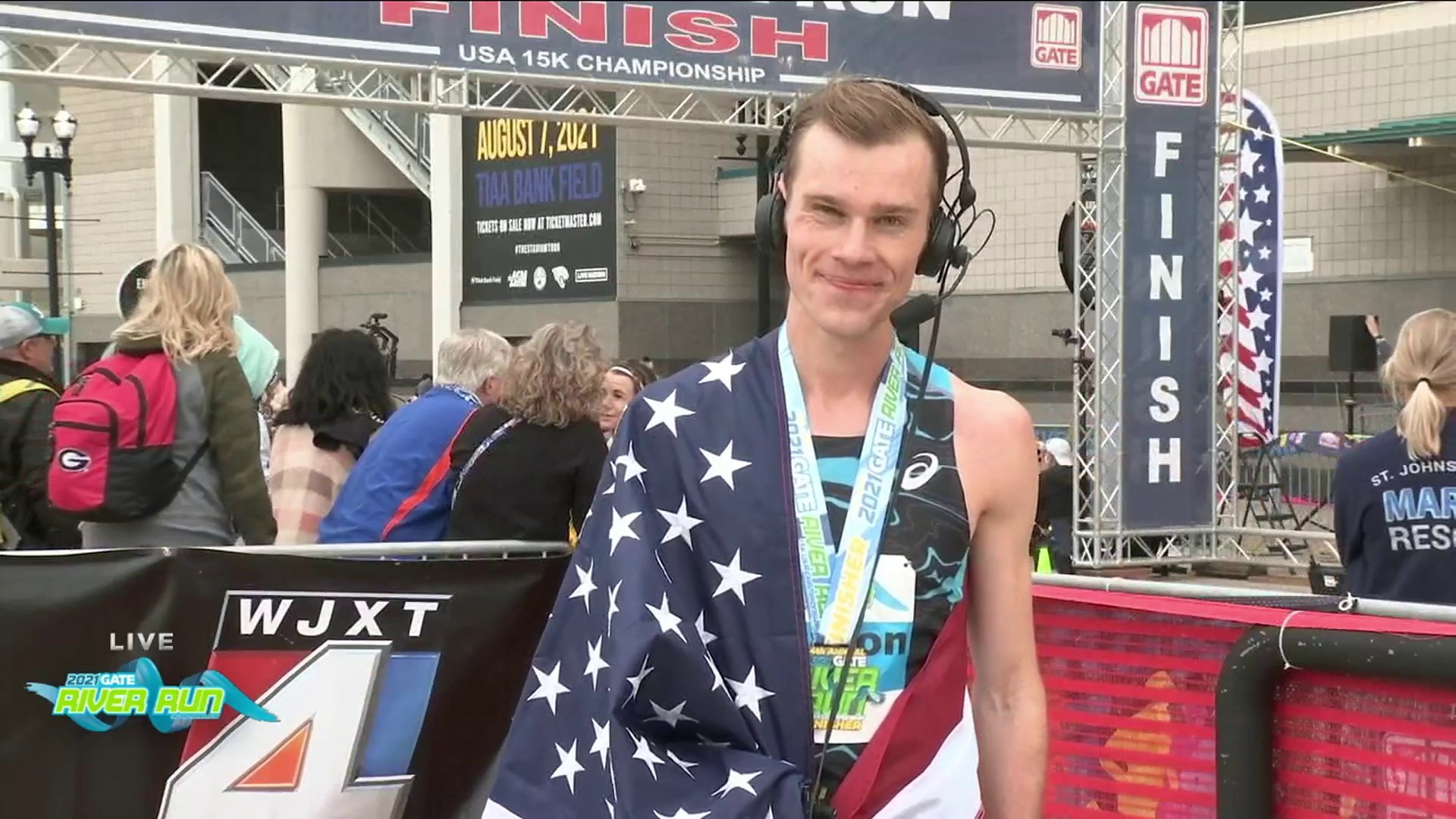
Sisson finished in 48:09, nearly a minute in front of Lindsay Flanagan. It was the fifth-fastest women’s time in the race history.
Sisson was coming off of a personal-best 14:55.82 in the 5K at the Sound Running Invite earlier this month in Los Angeles, but a 15K was not a distance in her wheelhouse.
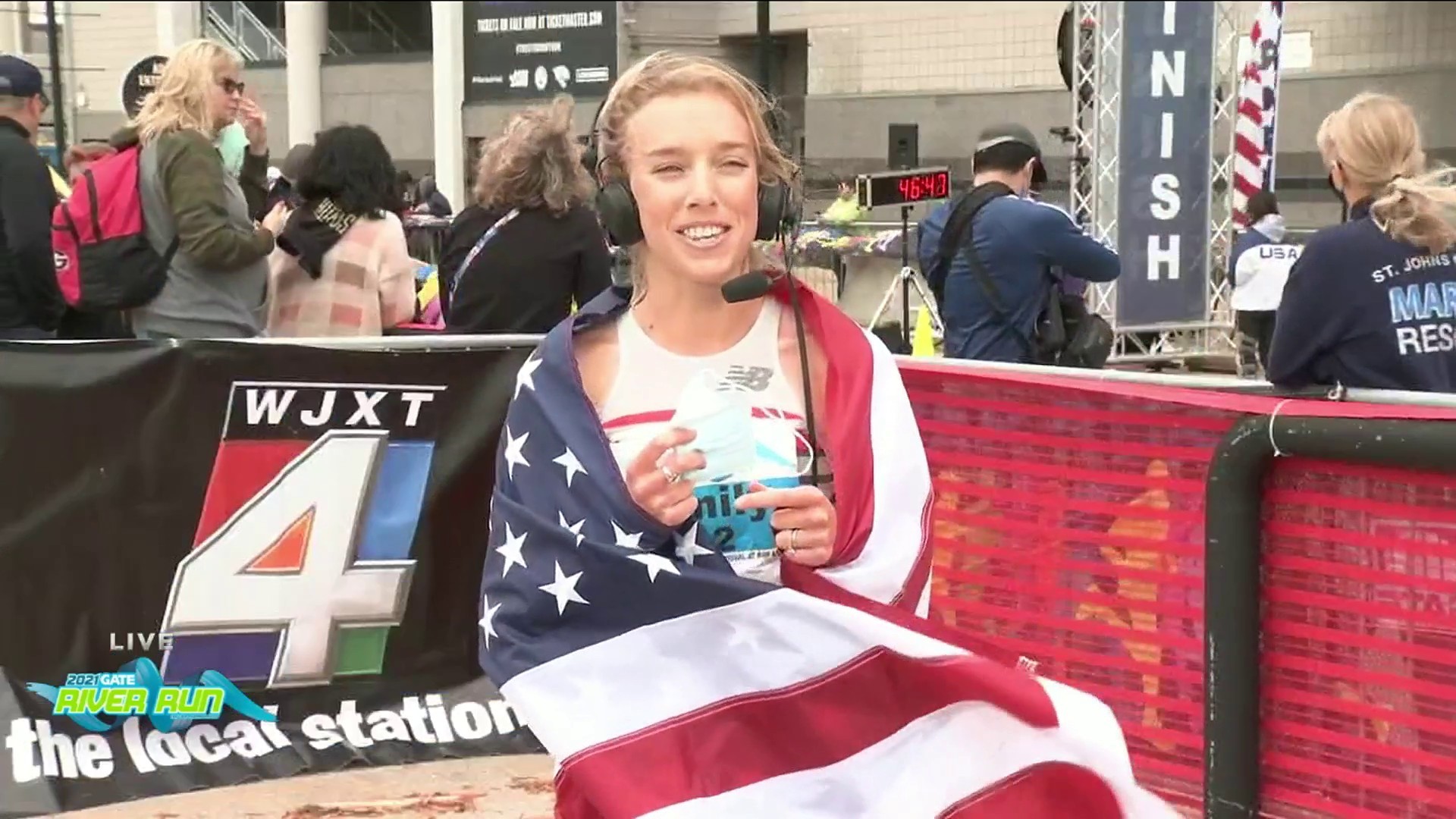
“I wanted to run pretty aggressively from the start. With the win, that was kind of an unexpected element so I had to run a bit off field,” Sisson. “It was such an amazing field. They did a great job putting this on. I had a great time.”
Sisson’s win earned her $10,000, and she picked up an extra $5,000 for being the first person across the finish line with the five-minute equalizer bonus.
“The only part I found really tricky was the last bridge at the end,” I was going up into the wind on it and I felt like I was nearly walking,” Sisson said. “Then we had the downhill to the finish so that was nice.”
John Raneri led at the 5K split, but that 18-second margin dissipated by the time the Hart Bridge. Young, in a pack of runners at the Green Monster, slowly began chipping away inside that final mile and a half. A newcomer to the race, Young said that he didn’t know when to start his final kick until he saw the finish line not far in the distance.
Young pulled away in the final mile and turned in a 43:52. He was two seconds in front of Abbabiya Simbassa (43:54). The top 11 men’s finishers were stacked together and separated by just 23 seconds. The race’s 2019 winner, Shadrack Kipchirchir was third in 43:55. Last year’s winner, Frank Lara finished seventh in 44:02.
“They don’t call it the Green Monster for nothing. I was surprised there was such a pack at the top of that gigantic overpass,” Young said. “I hadn’t done this last mile before so I didn’t know when to make my move but I saw the finish line and I was like, now or never, and so I made my move and just didn’t look back.”
(03/20/2021) ⚡AMPby Justin Barney
Gate River Run
The Gate River Run (GRR) was first held in 1978, formerly known as the Jacksonville River Run, is an annual 15-kilometer road running event in Jacksonville, Fla., that attracts both competitive and recreational runners -- in huge numbers! One of the great running events in America, it has been the US National 15K Championship since 1994, and in 2007...
more...A maximum of 10 Russian track and field athletes will be able to compete at this summer’s Tokyo Olympics
Ten Russians to compete in Tokyo Olympic as World Athletics restored its Authorised Neutral Athlete (ANA) scheme after a council meeting.
The council has decided to allow ANAs “to start competing again, subject to a cap of 10 for the Olympic Games”, said Rune Andersen, chair of the Russian Taskforce overseeing the country’s reinstatement efforts.
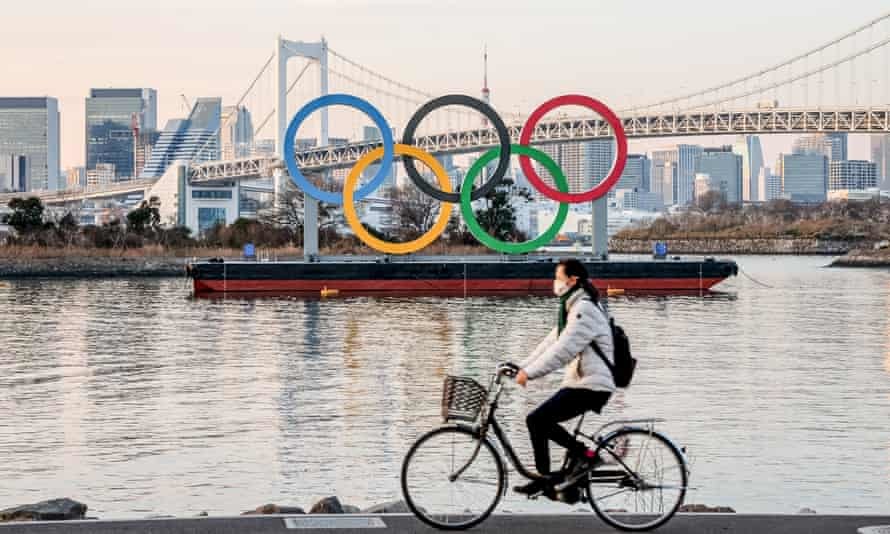
The ANA scheme allows Russian competitors who meet strict anti-doping criteria to participate in global track and field events, but under a neutral flag and in neutral clothing.
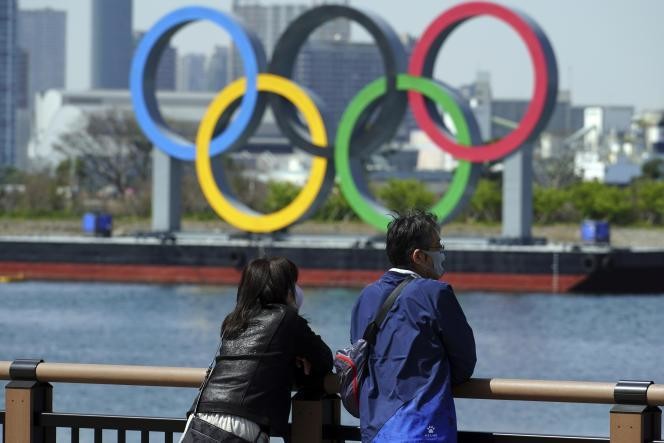
World Athletics temporarily suspended the ANA scheme in November 2019 as part of the suspension of the Russian athletics federation (RusAF) reinstatement process following charges by the track doping watchdog Athletics Integrity Unit (AIU) that RusAF helped cover up missed tests by Russian high jumper Danil Lysenko.
That decision meant that there were no Russian athletes at this month’s European indoor championships in Torun, Poland.
There had been 29 Russians competing as ANAs at the Doha world champs in September/October 2019, winning two golds, three silvers and one bronze medal.
(03/20/2021) ⚡AMPTokyo 2020 Olympic Games
Fifty-six years after having organized the Olympic Games, the Japanese capital will be hosting a Summer edition for the second time, originally scheduled from July 24 to August 9, 2020, the games were postponed due to coronavirus outbreak, the postponed Tokyo Olympics will be held from July 23 to August 8 in 2021, according to the International Olympic Committee decision. ...
more...No winners in 2021 Barkley Marathons
Only 15 people have finished the Barkley in the past 35 years.
Officials said the Barkley Marathons were over at around 4:30 p.m. on Friday. They said that there were no winners.
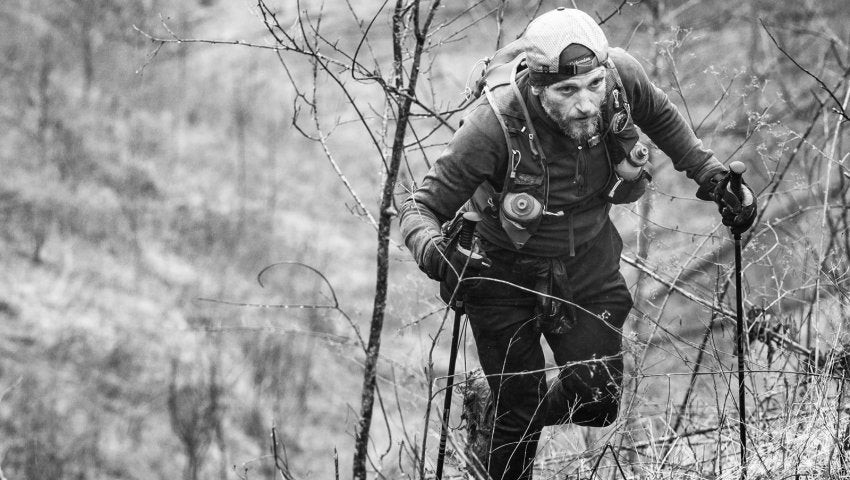
Keith Dunn said that runners dropped out as temperatures were expected to drop overnight.
A single marathon usually goes for around 26 miles, but not the Barkley Marathons. It takes participants through a 100-mile unmarked, off-trail course through Frozen Head State Park instead.
On Thursday, runners took off and started the event. The marathons have fans all around the world, but only 15 people have finished it in the past 35 years. There were no finishers in the 2020 marathons after the COVID-19 pandemic closed Tennessee State Parks, effectively canceling the race.
Runners have 60 hours to finish the 100-mile race. There is no online registration and participants must figure out how to apply through word-of-mouth.
"After a bride memorial for the members of the Barkley family who no longer are with us, the cigarette was lit at 3:04 a.m.," said Keith Dunn, an official with the race.
They must also find books on the course and tear out the page corresponding with their race number to prove they ran a full loop. They are given a new race number for each loop.
Officials said that the Morgan County Cattleman's Association provides food for participants to purchase through the race, and the Morgan County Tourism Alliance offers field guides for runners. They are designed by locals and explain fauna and flora in the area.
Runners are also issued a standard watch set to the race time, and no other watches are allowed. This year's watch was an analog pocketwatch.
Dunn also said that one person dropped out of the race five and a half hours into the race. He also said that this year's marathons feature more newcomers than veterans, because of travel restrictions.
A documentary was also made about the race in 2014 — The Barkley Marathons: The Race That Eats Its Young.
(03/20/2021) ⚡AMP





